



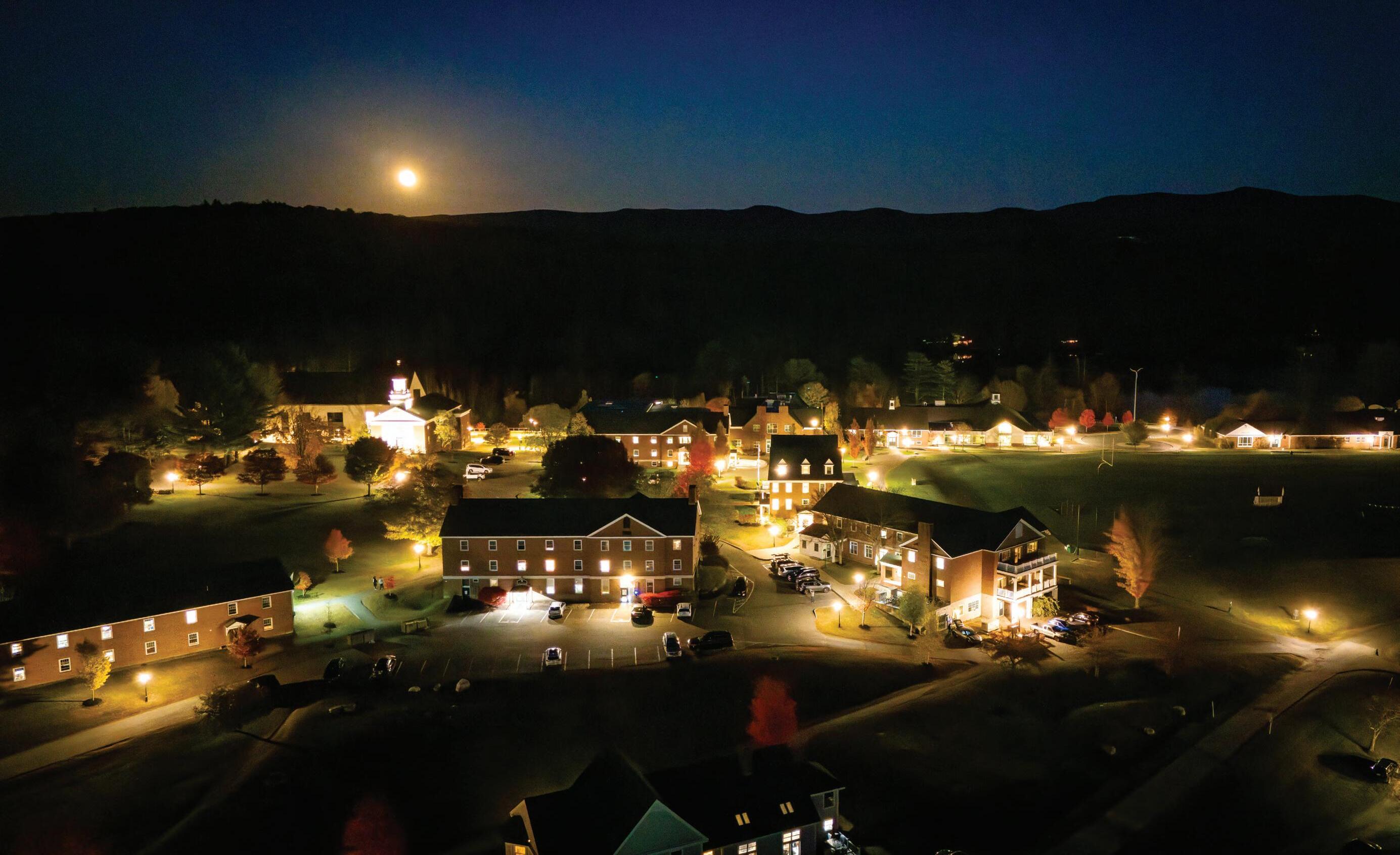






editor Emily
writers
Chris Adams
Cardigan Mountain School offers a close-knit community that prepares middle school boys—in mind, body, and spirit—for responsible and meaningful lives in a global society.
To achieve our mission, we reward effort and accomplishment, helping each boy realize his academic, physical, and personal potential through honoring our Core Values of Compassion, Integrity, Respect, and Courage in all aspects of daily life.
For more information about Cardigan Mountain School, please visit our website at cardigan.org.
Letters and comments can be emailed to emagnus@cardigan.org, or mailed to Emily Magnus, Assistant Director of Communications, Cardigan Mountain School, 62 Alumni Drive, Canaan, NH 03741. The Cardigan Chronicle is published bi-annually by the Communications Office for alumni, parents, and friends of the school. It is printed by R.C. Brayshaw and Company on sustainably produced, chain-of-custody stock certified to Forest Stewardship Council (fsc) standards. at right: This spring, Polar Bear began on April 28, and over 100 students, faculty, and community members took the plunge. In the photo at right, faculty members enjoy the sunrise before the arrival of the students.
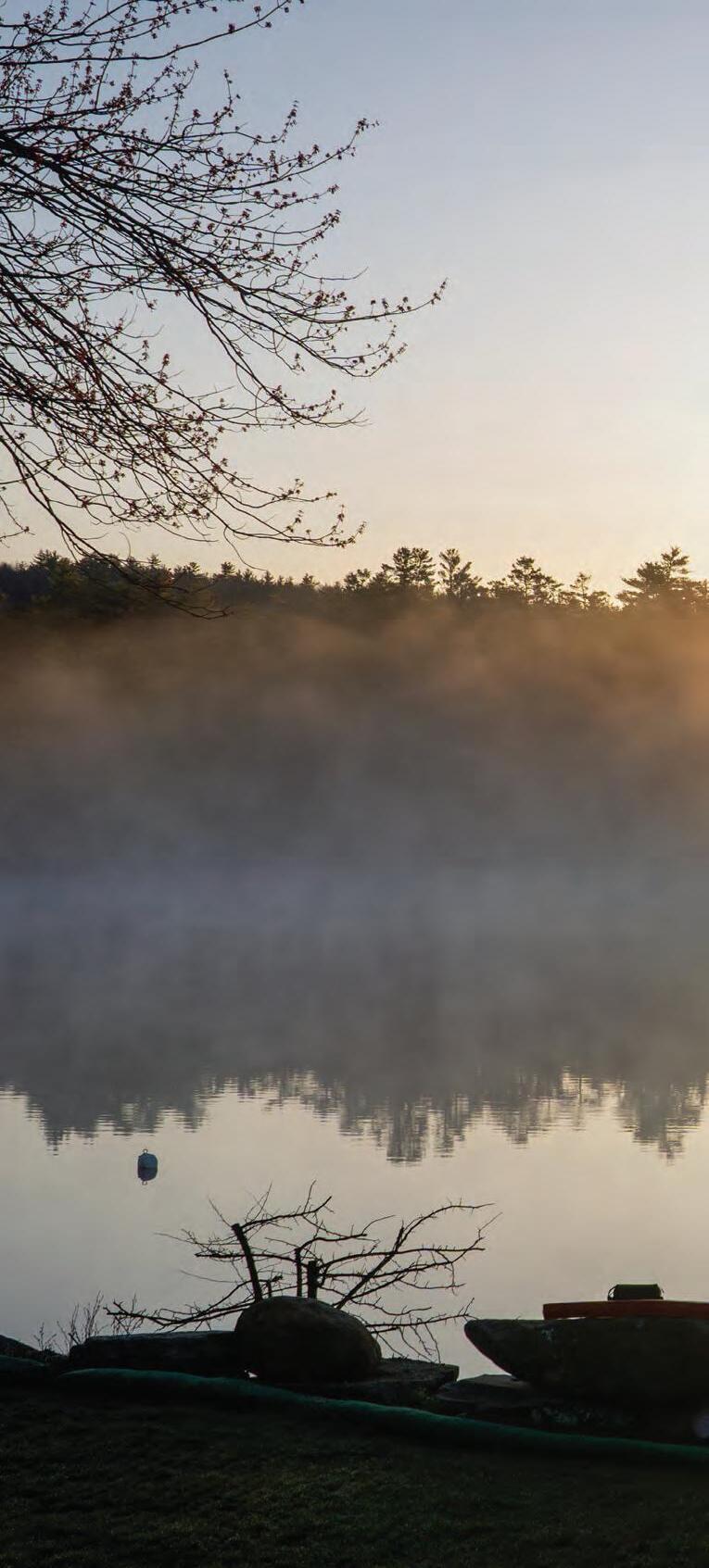

4 Commencement 2025
Rethinking Failure
Cardigan Breaks Ground on New residence hall and squash center

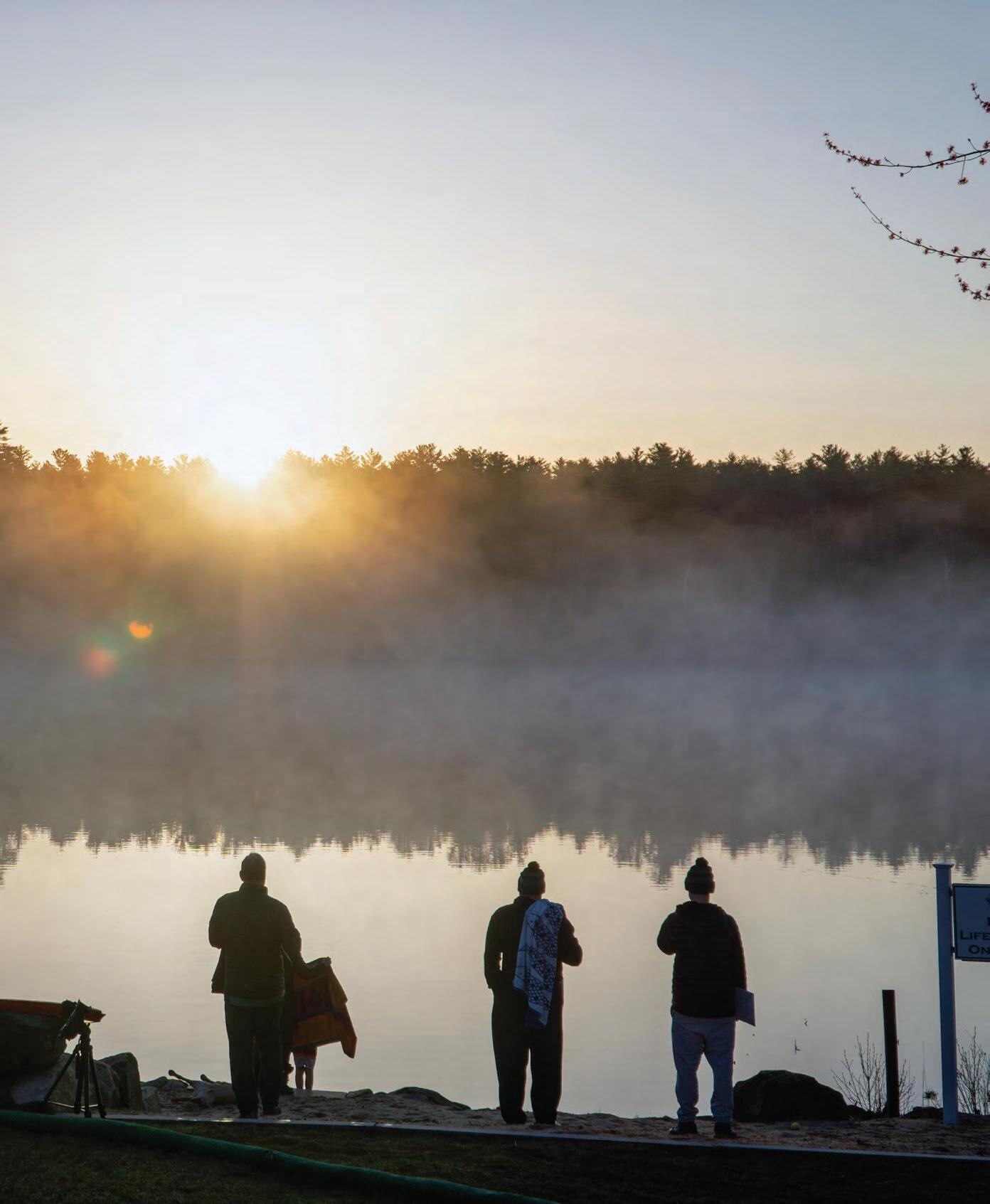

Typically, the articles and photos in the Chronicle showcase the accomplishments of the people of Cardigan, past and present, as well as updates on programs and projects on The Point. There is a lot to crow about at Cardigan these days; our school is humming and we’re laser focused on being the best school we can be for middle school boys, now and into the future.
This issue of the Chronicle, however, focuses on failure.
In his book, Good to Great, acclaimed researcher and author Jim Collins explains a hedgehog concept recognizable in great organizations. Based on a Greek parable, the metaphor illustrates that while a “fox knows many things, a hedgehog knows one big thing.” Foxes know many strategies for hunting and outsmarting their prey, while
hedgehogs are good at one thing—curling into spiky balls that protect them from predators. Good organizations, Collins explains, become great organizations (hedgehogs) when they focus on the intersection of three key questions: What are they deeply passionate about? What are they the best in the world at? And what drives their engine?
Cardigan’s mission is our answer to all three questions: We offer “a close-knit community to prepare middle school boys—in mind, body, and spirit—for responsible and meaningful lives in a global society.” In addition, our Strategic Plan for Cardigan 2032 is our North Star and beckons us boldly forward, sinking our roots deeper in areas where we need to stand firm and evolving as a learning community in an increasingly complicated but opportunistic world. Our
job is not to sell more widgets than our competitors nor grow our “company” to have a “storefront” in every corner of the globe. Instead, we are focused on one thing: making an immediate impact on the boys while they’re with us and providing them with the tools and resources that will encourage them to thrive as they naturally mature after their time on The Point. Our passion is to be the best school for middle school boys in the world, one whose engine for success is the confidence that families have in us—through storm and weather fair—in the development of their sons.
But while Collins’ analogy makes sense for an organization, our students often need to look to the fox for inspiration, especially when it comes to failure. Failure often means that the boys are pushing beyond
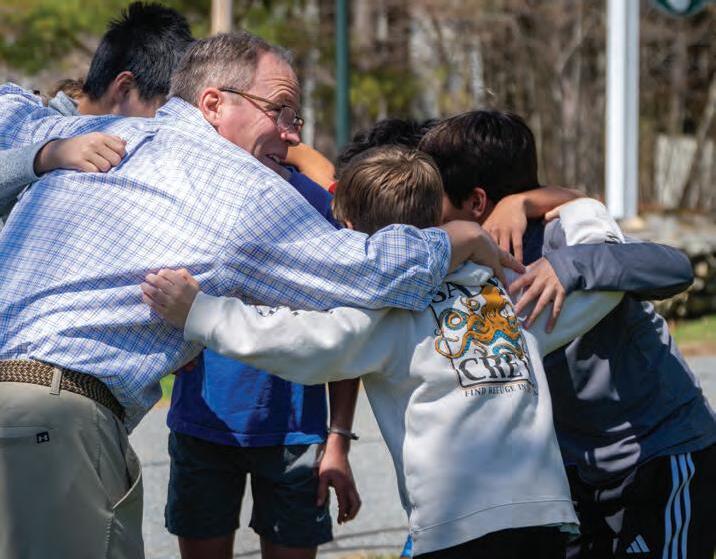
their limits or capabilities. In that case, punishing them for failure would be growthstunting idiocy. At Cardigan, failure is not considered a terminal condition; rather, it is an opportunity to unpack setbacks and learn from them—to reach into one’s toolbox and find the resources to help overcome the obstacles the next time. When Cardigan boys leave The Point for the last time, the most valuable item that they take with them is a toolbox of resources that they can draw on and add to for the rest of their lives. When they mess up (and on any given day here that happens more times than we can usually count), Cardigan boys know that the next move is to figure out how to do better next time. Like a fox, they come to realize their options are many.
Using moments of unsuccess as pathways to future successes is an exercise in patience, persistence, and a recognition that Cardigan’s “one big thing”—our hedgehog—is to inter-
sect with these boys at a transformational time in their growth and help them prepare for the future. But to encourage our boys to also be hedgehogs would be short-sighted. Instead we provide them with a wide range of valuable tools and lessons—their fox—allowing them to adapt and overcome. Welcome to the newest edition of the Chronicle. In the pages that follow, look for the hedgehogs and foxes. You’ll see plenty of both! r

Christopher D. Day P’12,’13 Head of School
At Cardigan, failure is not considered a terminal condition; rather, it is an opportunity to unpack setbacks and learn from them—to reach into one’s toolbox and find the resources to help overcome the obstacles the next time.
–
chris day p’12,’13, – head of school




life, like ai, responds to the prompts we give it. What do we know about effective prompts? Lazy prompts lead to dull answers. The best prompts are bold and open-ended, rooted in values and full of examples—those lead to discovery...Don’t let the world make you an average AI output. Use what you’ve learned during your time here—integrity, curiosity, resilience—to be EXTRAORDINARY. alva taylor p’22, commencement speaker and trustee
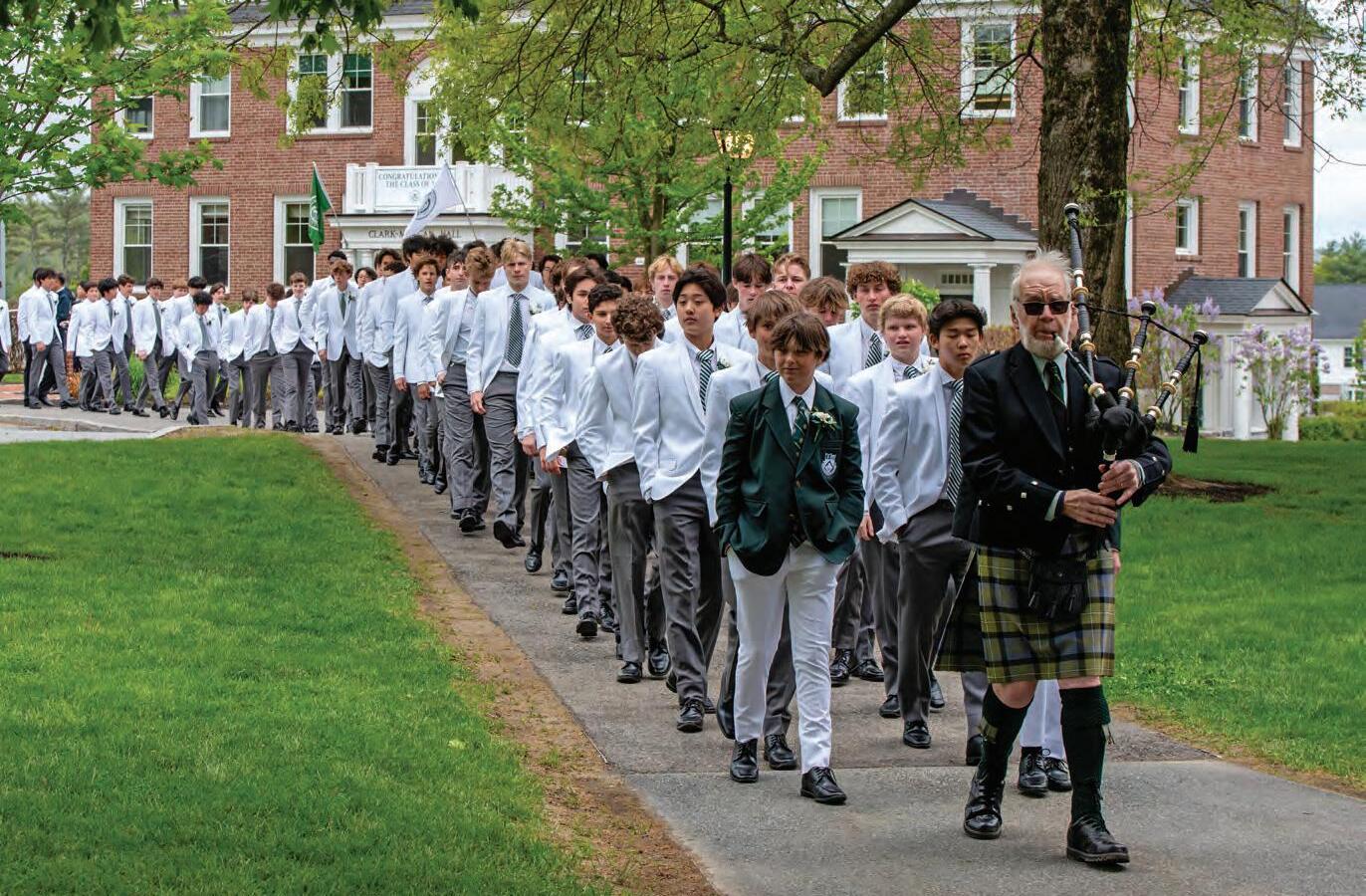


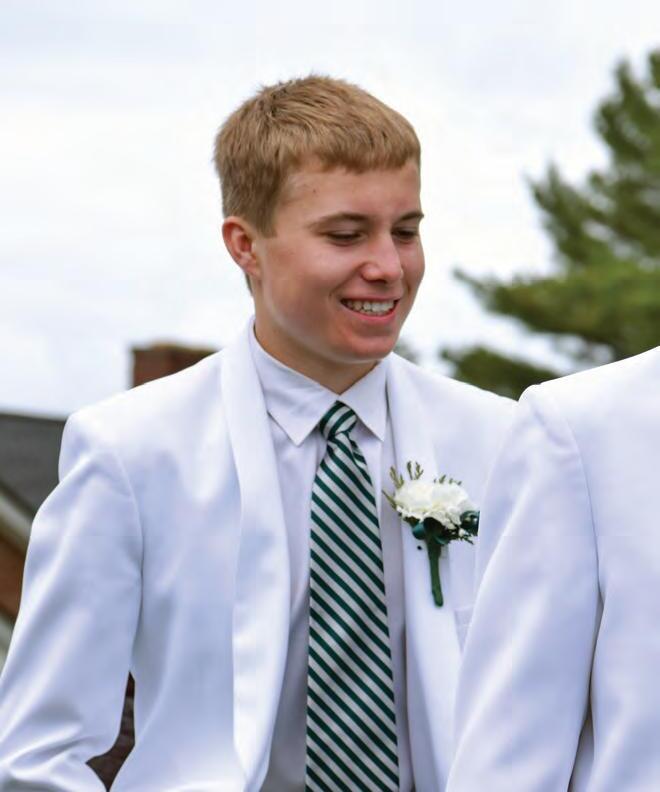
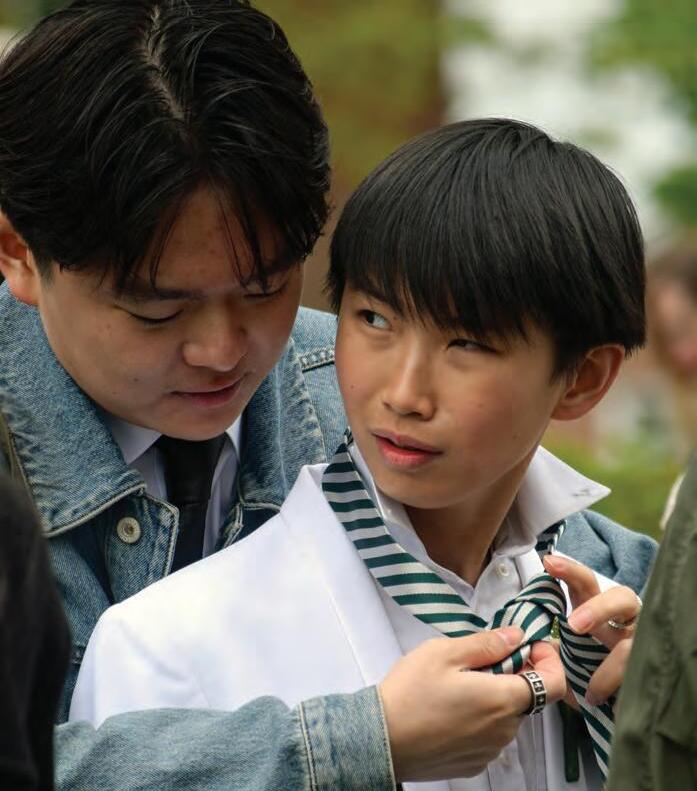






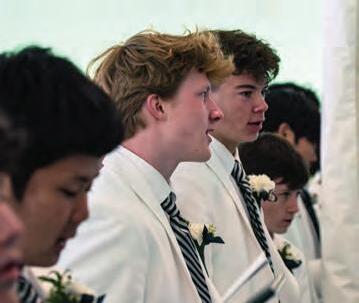
In the days leading up to Commencement, the seniors had several opportunities to reflect on their years at Cardigan and ponder their futures beyond The Point. One afternoon before a Green and White Competition, we asked them to put pen to paper. Below are some of their responses.
FAVORITE CARDIGAN TRADITIONS:
r Head’s Holiday
r Ski Holiday
r Eaglebrook Day
r Polar Bear
r Finland Exchange
r Sandwich Fair
r Lake Run
r Hiking Cardigan
FAVORITE PLACES ON CAMPUS:
r Campbell Turf Field
r Room/Dormitory
r Turner Arena
r Marrion Gym
r The trails and the point
r The Haven
r Johnson-Wakely Fitness Center
r Waterfront
r Ski and Bike Center
r peaks
r Williams Wood Shop
r Music Center
r Wallach Art Studio
WHAT DO YOU WANT TO BE WHEN YOU GROW UP?
r Professional athlete, including tennis, golf, skiing, hockey, baseball, soccer, and fly fishing
r Entrepreneur
r Business owner
r Undecided
r Lawyer
r A good person
r Engineer
r Doctor
r CEO
r A dad
r Olympic skier
r Business analyst
r Architect
r Leader
r Actor
r Military
r Sports reporter
r Sports agent
r Astronaut, first on Mars
r Builder
r Space scientist
r Someone who changes the world for the better
FAVORITE CARDIGAN SAYINGS:
r As One.
r Brotherhood–Integrity, Compassion, Respect, and Courage.
r Lift as You Climb.
r Help the Other Fella.
r Cougars don’t cut corners.
r Knock ’em down but then help ’em back up.
r It’s a beautiful day in New Hampshire. – Norm Wakely H’91
r Use your time wisely.
– Chris Kelleher
r The Plan of the Week is your guide to success.
– Jarrod Caprow
r To the hills! – Kevin Franco
r If you can’t draw it, you can’t build it. – John Burritt
r Do your job, do it to the best of your ability, and do it until it’s done. – Allan Kreuzburg H’24
r You are a winner by showing up.
– Patrick Turcotte
r Never stop caring. When you stop caring, it is not worth having.
– Meredith Frost

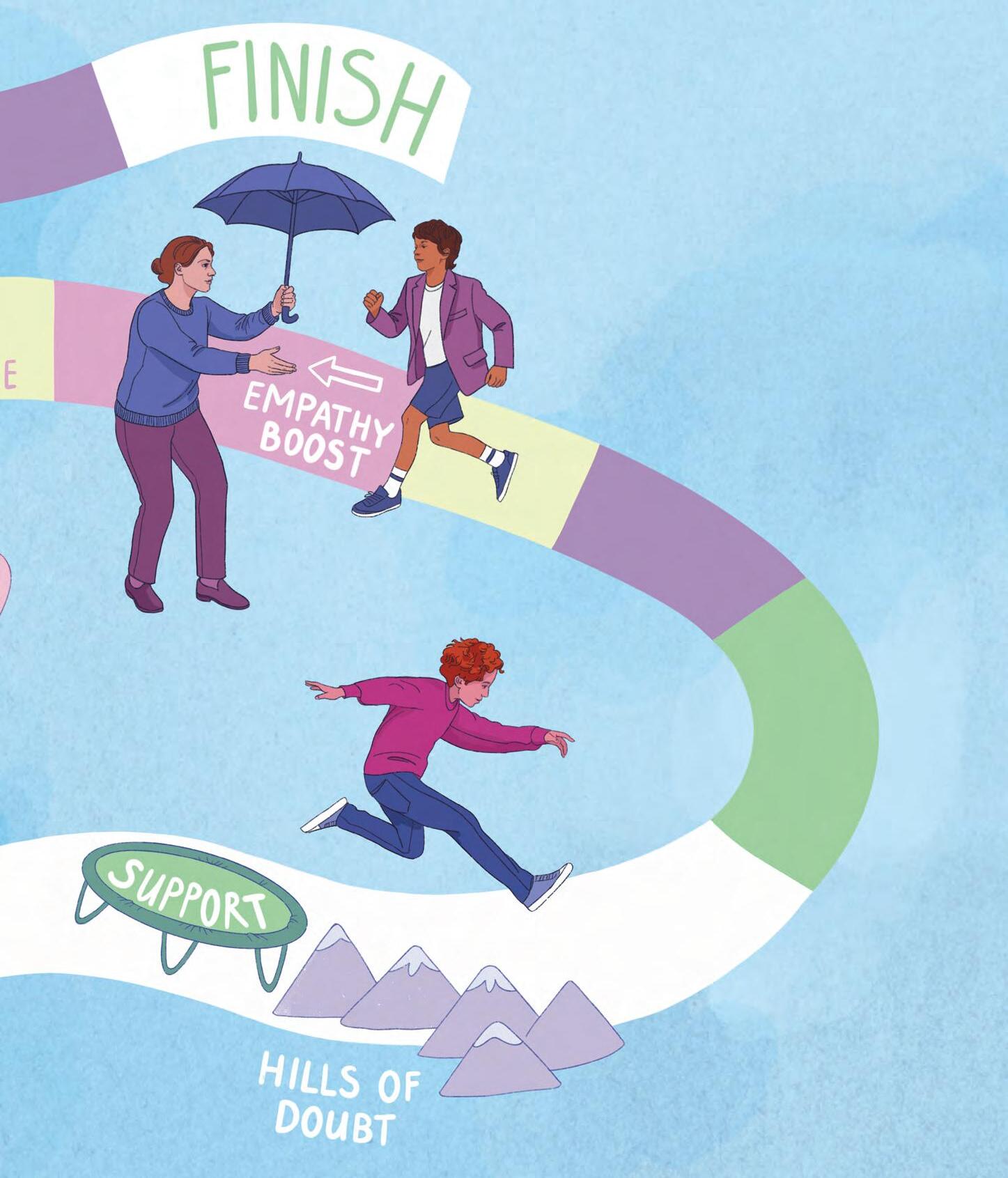
STORY BY EMILY MAGNUS
What does it take to recover from a mistake? Is it possible to practice perseverence in order to prepare for adversity? Can failure be good? At Cardigan, boys are gifted with the time to process their mistakes and are given the tools to problem-solve when failures become roadblocks. Some boys even begin to look for the silver lining when plans go awry.
For an angler, failure is the fish that got away. For a soccer player, it’s the ball that sails just above the crossbar in the final seconds of a game when the score is tied.
For an actor, it’s the silence following a forgotten line, the seconds feeling like hours. And for students, it’s the marks of a red pen scrawled on a consequential test, topped off with “see me” written in the margins.
In the human body, failure has physical manifestations. The heart pounds, palms sweat, knees go weak. Your breath catches and your vision narrows, the mind short-circuits and your throat constricts. Cortisol floods the brain; fight-or-flight responses follow.
Most would agree that failure is uncomfortable, and in most situations, humans tend to avoid it, making choices that sometimes even result in self-sabotage and further downward spirals. Failure, most would agree, is bad and should be dodged, ducked, and sidestepped, at all costs.
The reality, however, is that failure is good. If we can move beyond the visceral immediate reactions, failure can be an incredibly valuable teacher. It can be a launching pad that leads to creative and complex solutions. It helps develop critical thinking and problem-solving skills, and it can help build resiliency and empathy. Failure, when approached with a growth mindset, can unlock significant leaps in learning and personal growth.
Many traditional teaching methods involve direct instruction: teachers take students through the information they want them to understand step by step. The “right” answer is emphasized and the path to get there is prescriptive. And at the end of a unit, students take tests in which they are given credit for correct answers; there are no redos.
And while direct instruction keeps learning efficient and straightforward, it also makes education transactional—I have this amount of time to get the right answer—rather than nurturing lifelong passion—I want to understand how this works. In contrast, in a lesson that includes productive failure, also sometimes called generative learning, students are given time to figure out answers on their own, using their prior knowledge to develop possible solutions. Only after students have struggled with the new information, turning it over and looking at it
the tower of power is a cardigan tradition that uses productive failure to teach students about the basic principles of engineering. with balsa wood and lots of glue, eighth-grade students build towers in their science classes. the structures are then put to the test, stacked with weights until they fail. while some structures prevail, most buckle, shattering into splinters. in the aftermath, teachers discuss with students why some towers can handle more weight than others.
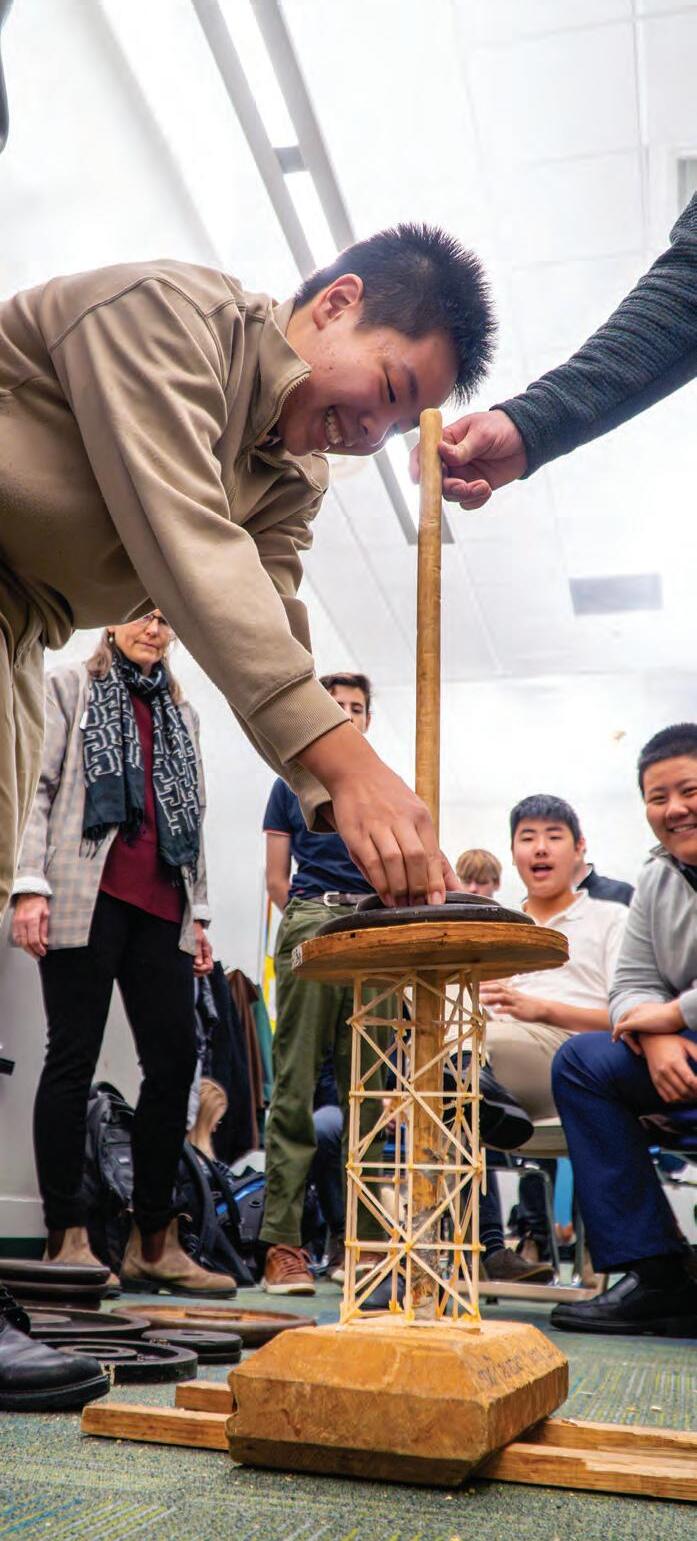

in another science experiment, students launch rockets they design and build themselves, putting into practice newton’s laws of motion. the boys isolate independent variables and determine their effect on a rocket’s trajectory when it is shot from a compressed air launcher. while many rockets successfully fly over marrion field, others explode on takeoff, as in the above photo. both success and failure become lessons for understanding newton’s laws.
from different angles, will a teacher help students bridge the gap between their prior knowledge and their new knowledge, guiding them in assembling everything accurately.
At Cardigan, the Gates Program is the most obvious example of productive failure—challenging students to find their own solutions to everyday problems, producing iterative prototypes, and working directly with consumers to refine their inventions. Students build cars and race them against each other to learn about aerodynamics; they build robots and compete against teams all over New England to understand how to build and program resilient and efficient bots; and they write business plans to understand all aspects of being an entrepreneur and how to persevere in the face of failure.
But Gates isn’t Cardigan’s only academic program in which students grapple with productive failure. In Biology, when Science Department Chair Meredith Frost P’ first teaches students to write lab reports, students often rewrite them.
“Failure is a learning point,” says Ms. Frost. “I tell students all the time that the cool thing about being a scientist is that when they discover something, scientists go to their rivals and ask them to read their research and try to poke holes in it, or maybe a fellow scientist will replicate a colleague’s study and
make it better. Failure gives them information for their next attempt. When a lab doesn’t go well in my classroom, I ask students to write about the variables they need to control. I ask them to think about why their results are wrong and what they could do differently the next time around.”
Productive failure can also be as simple as letting students correct tests, giving them the opportunity to become aware of what it is they don’t know, and then filling in that gap. English teacher Alex Gray H’, P’,’ uses what he calls an autopsy report when students receive poor grades. If students earn test or quiz grades below %, he requires them to do a three-part autopsy: . Write the correct answers to any questions they got wrong; . Explain why they got the questions wrong; . Explain what they will do next time to get the correct answers.
“In English, I usually see the need for two types of corrections,” says Mr. Gray. “First, something went wrong in the preparation phase, and that’s where an autopsy is helpful. Second, is in writing. This is never done, and I tell students they can always redo their writing and make it better.”
Why is productive failure so important? In addition to ensuring students learn the correct information and along the way develop problem-solving and analytical skills, research has
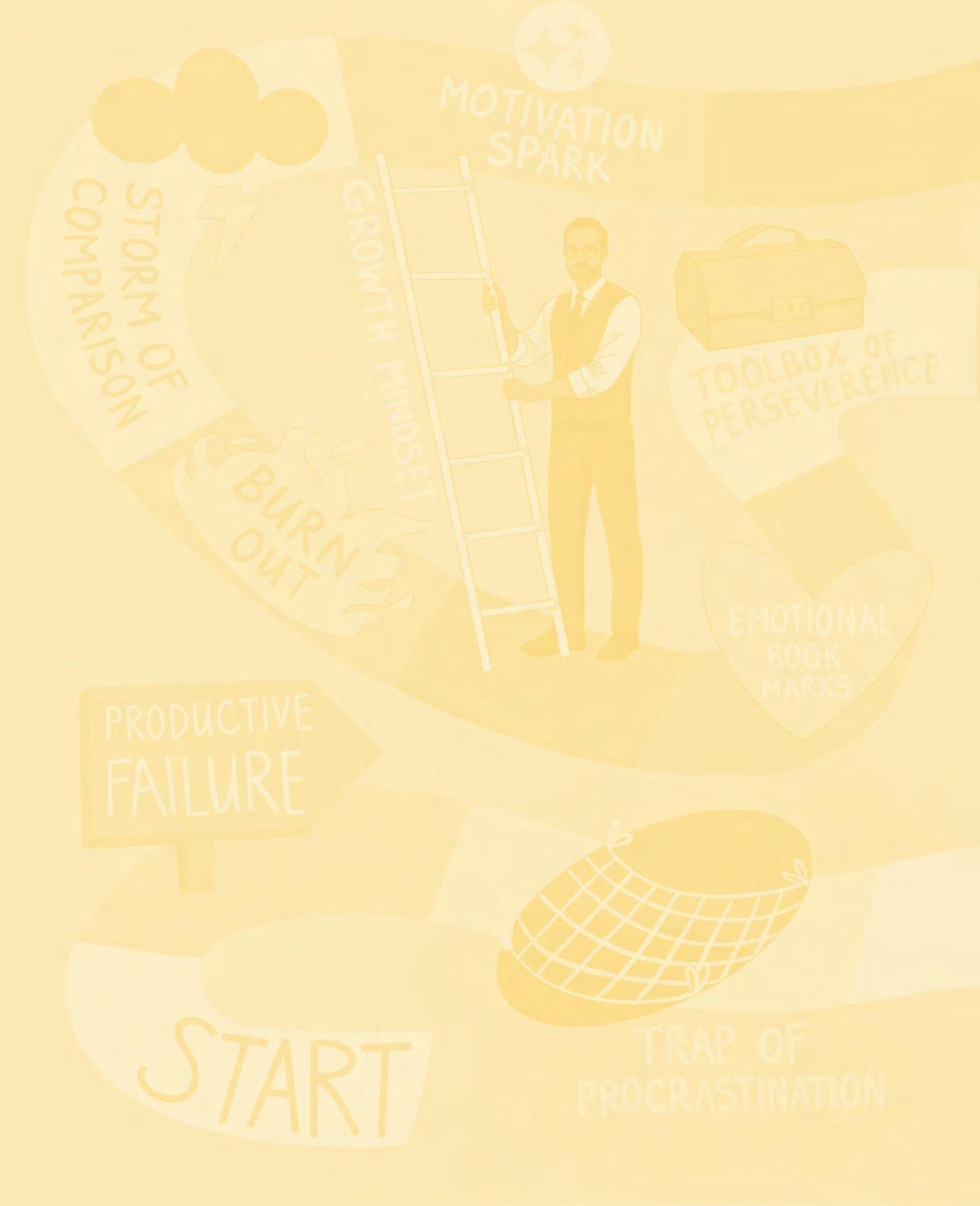
by rich macdonald p’18, history department chair
One of the great strengths of Cardigan is the opportunity for students to experience failure: failure in the Gates lab, failure on the athletic field, failure in the classroom, and failure in the dorms. Rationally, as caring adults, we know that failure is good, that it helps children learn and grow. Rationally, we know that having what author and psychologist Carol Dweck termed a growth mindset helps build resiliency and reframe failure for our children. Yet, when the moment of failure comes—and we know it will—our emotional brain can overcome our rational one. Fear, sadness, and anger obscure the value of failure and lead us to act in unproductive, even harmful ways. As caring adults, a sense of protection takes over as we try to deflect blame for the failure, perhaps by blaming athletic officials, coaches, teachers, or parents. Or, instead of fighting, our flight reflex takes over as we try to help the students forget the failure, telling them it’s not a big deal, they should forget about it, or they will do better tomorrow. Or, perhaps, knowing failure is coming, we pull out the snowplow to clear the way. Acting impulsively on our emotions, however, short-circuits the possible benefits of failure. So what is a caring adult to do?
First, “Don’t Ride the Rollercoaster.” This phrase is often used by Cardigan’s Assistant Head of School Joe Doherty. I take it to mean that as adults, we need to be the moderating influence on the emotional roller coaster which is the adolescent experience. It can be hard, as a caring adult, not to feel heartbroken when our children feel heartbroken and not to feel ecstatic when they feel ecstatic; however, role modeling heartbreak and ecstasy in moderation (maybe even in the same moment), and without being overwhelmed, is essential for our boys’ development. We are all, at heart, social creatures that learn through observation. When our young men see us navigate our emotions effectively, they learn to do it too.
Second—and probably most essential—is that boys need to know they are loved. They need to hear we love them when they score the goal that wins the game and, when they miss the shot that loses it; when they ace Latin and when they fail math. Our students need to know that we love them because they are them, “warts and all,” as my grandmother would say. This feeling of
love instills a sense of courage in our children to try hard things and gives them the feeling of safety on the occasions when they fail.
Third, we should acknowledge their feelings and encourage their effort. Feeling sad, disappointed, afraid, happy, or angry isn’t bad—it’s life. Acknowledging and empathizing with these feelings in our children helps them successfully navigate life’s ups and downs—to flatten the rollercoaster ride. It also helps them to recover from failure and prepare for the next attempt. Current research and scholarship indicate that the most pressing issue facing boys and young men is a disconnect from their emotions. An added benefit of acknowledging our boys’ feelings is that they get better at identifying and acknowledging them too. Carol Dweck would say that to help our kids develop more resilience, we must also acknowledge their efforts. It is a great gift to our football players when Head Coach Hal Gartner tells them, after a heartbreaking loss, that he hates to lose but loves their effort. This messaging helps to build resilience in the young men we all love.
Lastly, we need to let our boys practice. As a parent myself, I recognize how hard this can be. Seeing the disappointment on our children’s faces after failure, or, perhaps even harder, seeing that failure coming and letting it happen anyway, is challenging. Despite our reluctance as parents, we must give our boys the room— and the agency to fail. To be clear, I am not suggesting we set the kids out in the world, free to roam untethered and unprotected, failing at every turn. Instead, we need to give them appropriate space to make mistakes, bad choices, and to come up short. Resisting our instinct to jump in and save our boys from falls and failures is difficult work—but work that helps to create healthy and resilient adults who are ready to take on the trials and tribulations of the real world.
If we are lucky, by trying to “stay off the rollercoaster,” showing love, acknowledging feelings and effort, and finally letting them practice failure, we will help the young people in our lives become resilient adults who may just end up being even better parents than us. r
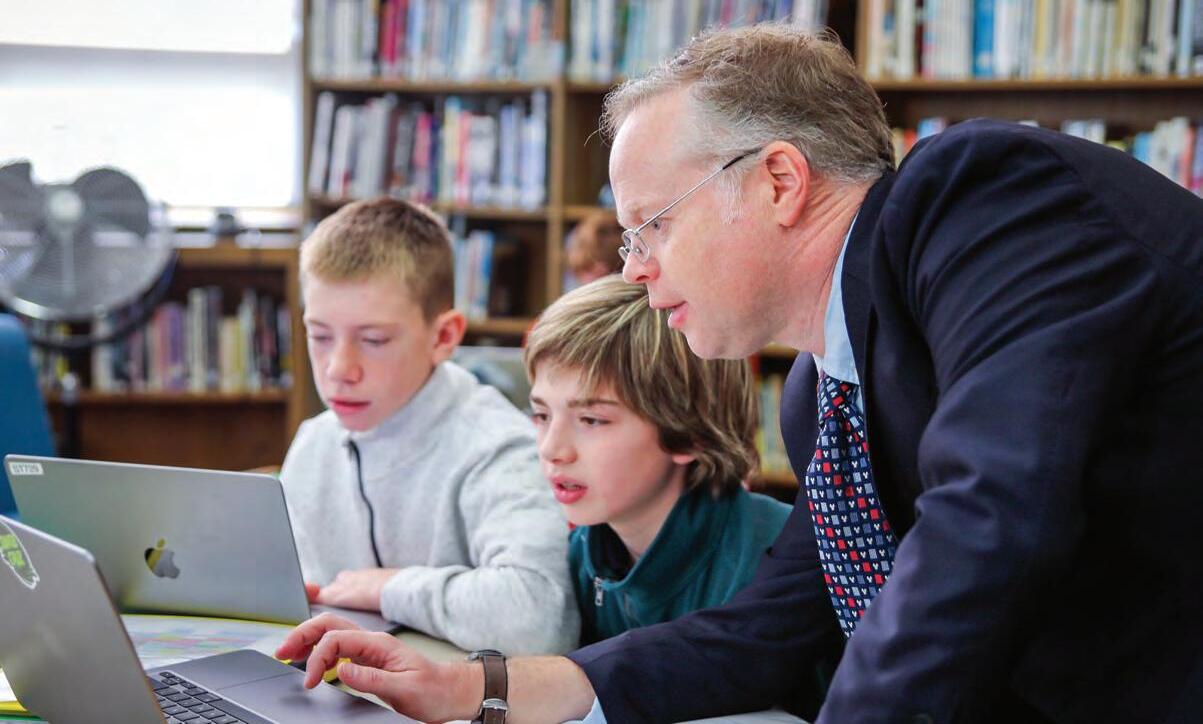
assistant dean of academics and peaks department chair jarrod caprow recognizes that students are often risk-averse in a classroom filled with their peers. it is up to teachers then, to provide empathy and kindness while at the same time building in risk factors that help students develop strategies for overcoming challenges and growing comfortable with uncertainty.
shown that learning that takes place in this way is more durable. In Make It Stick: The Science of Successful Learning, the authors explain, “One explanation for this effect is the idea that as you cast about for a solution, retrieving related knowledge from memory, you strengthen the route to a gap in your learning even before the answer is provided to fill it and, when you do fill it, connections are made to the related material that is fresh in your mind from the effort” (pg ).
Want to get better at solving analogies on the ssats? Mr. Gray doesn’t tell his students any tricks; instead, he dives right in without any instruction. “The students struggle at first, but inevitably there are students who are good at solving them, and I’ll ask them to explain to the rest of the class what it is they are doing,” he says. “The rest of the boys catch on and then they all have the tools. They learn by doing.” The failures the students might have experienced at first provide depth and breadth to their understanding, providing plenty of connections to make the strategies more enduring.
It’s important to note that productive failure only works if it takes place in a safe environment. Manu Kapur, author of
Kids see failure as a judgement on their character and their ability. We talk a lot about normalizing failure and making it part of the process of becoming their best self.
– SHANNON GAHAGAN, NINTH-GRADE PEAKS COACH

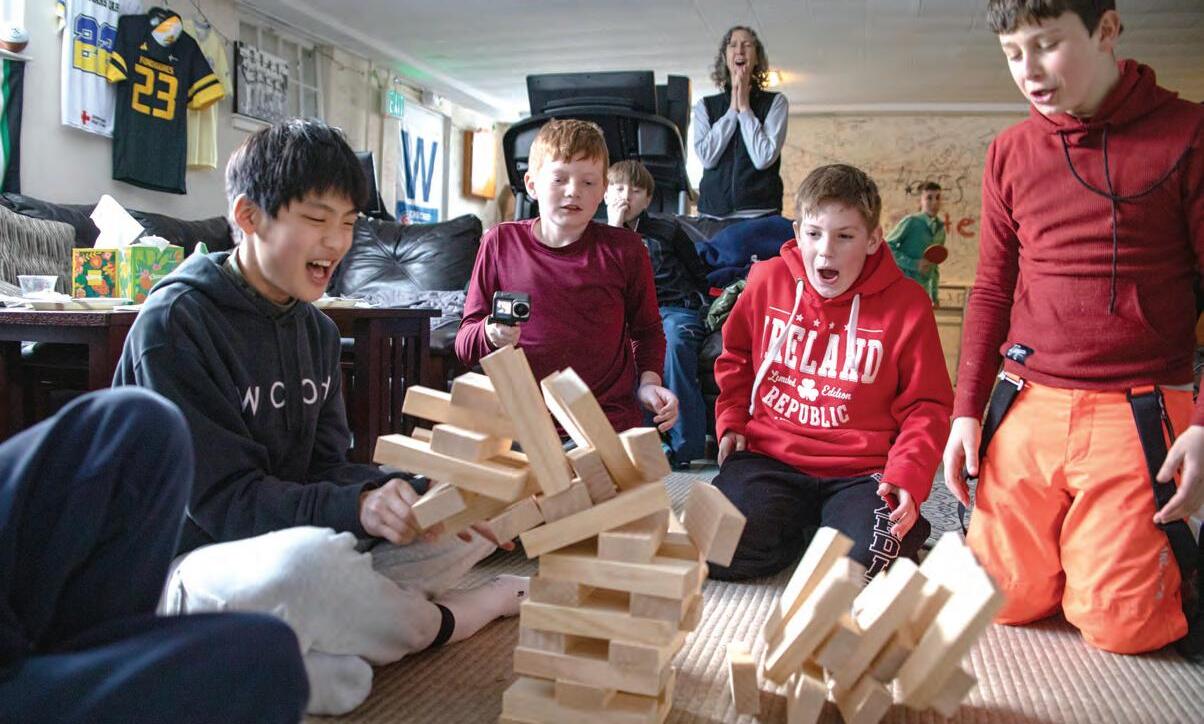
for sixth graders, games of risk are common. from making up challenges that test their physical agility to playing jenga to giving presentations in class, the boys encounter plenty of low-risk opportunities in which they can figuratively, and sometimes literally, get their feet wet, developing both problem-solving skills and resiliency.
Productive Failure: Unlocking Deeper Learning Through the Science of Failing, explains in an interview with Edutopia,
We don’t want students to flounder. Failure helps in building awareness and learning affect—the desire to learn—but in and of itself, it cannot get you to assemble knowledge, which is the process of integrating new information with the activated prior knowledge. A teacher or expert is needed at that point to explain the problem and solution.
The goal is to design experiences that incorporate failure in a safe, curated way. Then, we turn that initial failure into something that is productive by stepping in, giving students feedback and guidance, and helping them to make sense of the material by assembling it into a more coherent whole. (www.edutopia. org/article/if-youre-not-failing-youre-notlearning/)
At Cardigan, this is where peaks® (Personalized Education for the Acquisition of Knowledge and Skills) comes in. Students in all grades are enrolled in peaks and practice skills they will need for their core academic subjects. Students learn how to write citations in peaks before using them in history research

papers; they learn how to study for tests before they take their first graded evaluations in science; they learn how to use a plan book and practice advocating for themselves prior to meeting with their teachers. And, they talk about how to handle failure.
“Kids see failure as a judgment on their character and their ability,” says ninth-grade peaks coach Shannon Gahagan. “We talk a lot about normalizing failure and making it a part of the process of becoming their best self. I encourage them to take it in as information and feedback that they can use as a stepstone to get from A to B.”
peaks coach Cheryl Borek P’,’,’ adds, “I think of peaks as an umbrella over and a net under every student”—an umbrella to protect them from failure while they learn the skills they need to be successful, a net to catch them when inevitably they fail.
The umbrella for students comes in the form of peaks assignments that do not receive achievement grades, keeping the stakes low. Instead of focusing on their grades, students can focus on what is important, mastering skills and processing information.
“When we took away achievement grades, it shifted the conversations from ‘What did you do wrong,’ to ‘How hard did
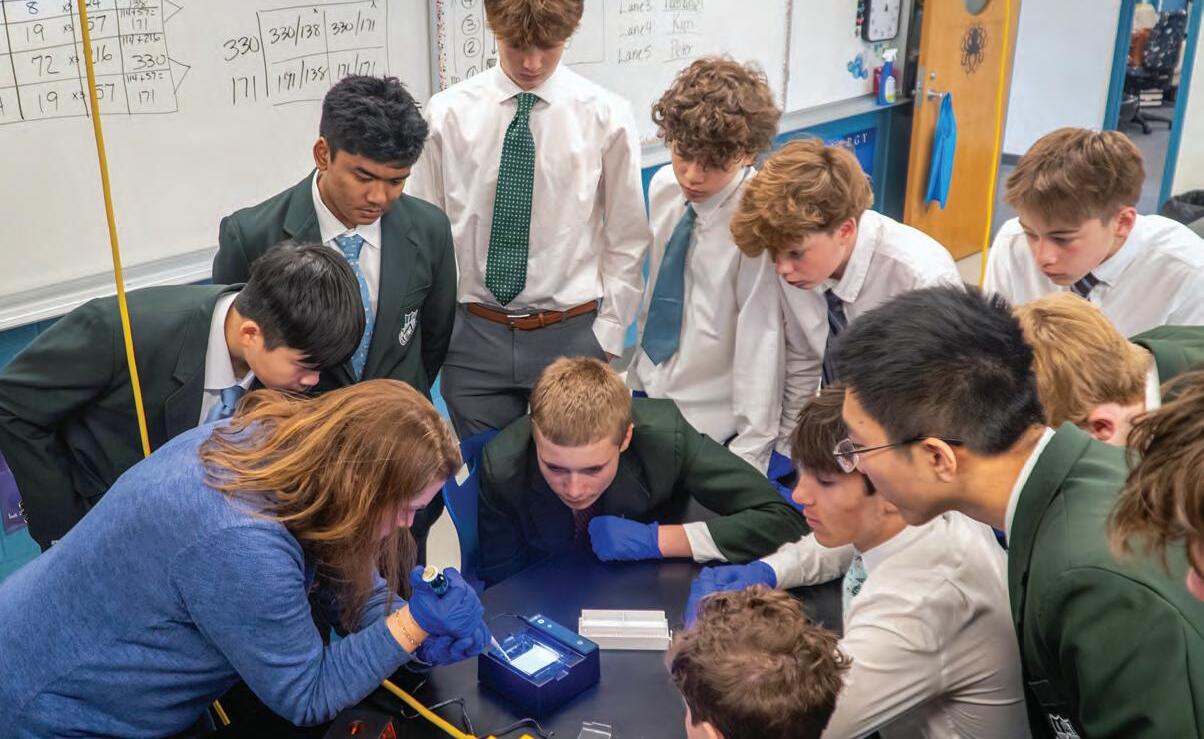
science
you try?’” says Ms. Borek. “We use rubrics to help them reflect on their work and help them fix anything they didn’t understand. We find ways to give meaningful feedback and consequences that are not punitive.”
It’s an approach that helps develop a growth mindset, a term popularized by author Carol Dweck. In Make It Stick, the authors explain:
Dweck’s research had been triggered by her curiosity over why some people become helpless when they encounter challenges and fail at them, whereas others respond to failure by trying new strategies and redoubling their efforts. She found that the fundamental difference between the two responses lies in how a person attributes failure: those who attribute failure to their own inability—‘I’m not intelligent’— become helpless. Those who interpret failure as the result of insufficient effort or an ineffective strategy dig deeper and try different approaches. (pg )
says.
Rather than placing the blame on themselves for failures, students are taught to understand how to use failure to their benefit.
“It’s no accident that growth mindset is also one of Cardigan’s Habits of Learning,” says Assistant Dean of Academics and peaks Department Chair Jarrod Caprow. “We want students to engage in the learning process and not focus on the outcome.”
peaks also provides time; it’s the net that helps students recover from mistakes. During peaks appointments in the evenings and on weekends, students take the time to catch up on missed assignments, correct incomplete work, and get help on lessons they didn’t understand the first time around. It’s also the time set aside every day—during study halls and advisor meetings—to develop healthy and effective habits that will stay with them long after they graduate from Cardigan.
For students who arrive in sixth grade, they get plenty of time to practice with the umbrella and net firmly in place, protecting them as they learn and grow. By the ninth-grade year, however, Ms. Gahagan says peaks coaches take a step back. “We let the students take the lead and take care of their fail-
ures on their own,” she says. “It’s sometimes hard to let it happen, but we want them to feel ready to make it on their own at their next school. It has everything to do with confidence; if they feel they can do it, they can move on.”
If peaks gets it right, ninth graders can’t wait to graduate.
And if educating middle school boys was just about academics, then we could end our feature here. But at Cardigan, our mission is not just to prepare students for secondary school but also for “responsible and meaningful lives in a global society.” peaks and their academic classes will give them the tools and the perseverance to face failure in academics, but what about in their personal lives? How can Cardigan help boys learn and grow from personal failures and develop resiliency?
“I don’t know that any of us gets through a day without failure,” reflects Ms. Frost, who is also the director of community life. “It’s our responsibility to teach students to be okay with it and recognize that failure doesn’t have to define them.”
Handling conflicts with their roommates, navigating emotional discussions when they feel they have been misunderstood, and overcoming disappointments and losses are a priority. And when conflicts and failures inevitably do happen, students need to remain present and seek resolution.
Ms. Frost says the first step is to be proactive in creating a community in which the boys know and are invested in one another. “Technology and social media give teenagers anonymity and allow them to say things to each other online they wouldn’t say to each other face-to-face,” she says. “In a successful community, that can’t happen; students and faculty have to know each other and be invested in each other ahead of time so that when failures happen, they want to take the time to repair and rebuild.” From day one every September, building community—connecting the boys to one another in positive, healthy relationships—takes precedence.
Ms. Frost also acknowledges the importance of giving students the time to process their failures. “Teenagers need to have a moment and know that they have been heard,” she explains. “But then we as adults need to help them move beyond failure and help them recognize their choices and what is in their control. I always tell them, ‘You are entitled to feel your feelings, but that is finite; don’t get stuck.’”
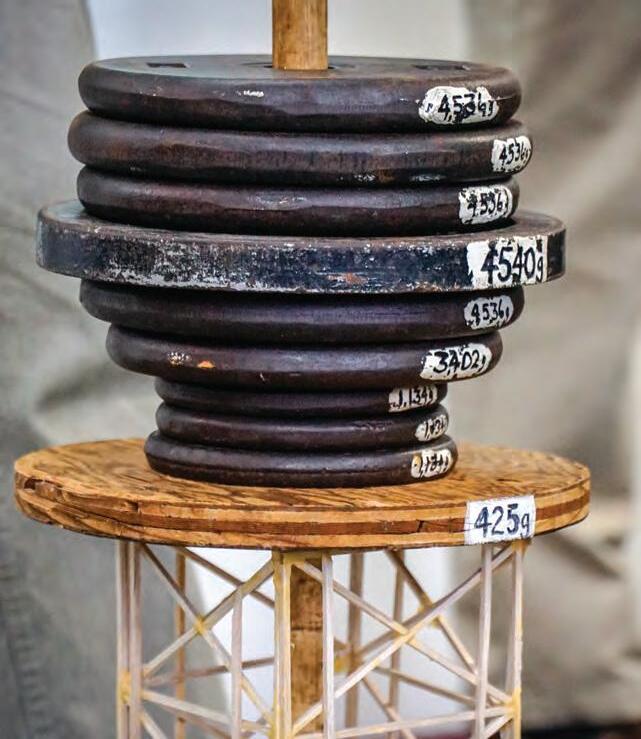
I don’t know that any of us gets through a day without failure. It’s our responsibility to teach students to be okay with it and recognize that failure doesn’t have to define them.
– MEREDITH FROST P’25, SCIENCE DEPARTMENT CHAIR AND DIRECTOR OF COMMUNITY LIFE
But not getting stuck isn’t always easy. One factor involves emotional bookmarks, those feelings that override our rational brain and lead to what at first may appear to be illogical actions. Mr. Gray and English Department Chair Chris Kenny read Deep Survival: Who Lives, Who Dies, and Why by Laurence
Kids think that the dopamine hit they get from technology is joy, but real joy—that comes from healthy friendships and showing kindness to others—that’s what lets you overcome failure.
–

Gonzales with their students, a book that, among other things, helps students understand why it is sometimes hard to move on from failure. As the title implies, the book examines stories of survival and why some people overcome while others perish. Gonzales explains,
Perceptions from the world around us (sight, for example) reach the thalamus first…From there, the signals travel by way of axons from the visual thalamus to the middle layer of the neocortex and from there are sent out to the other five layers for processing. What emerges is a perception of sight. But before all that can be completed, a rough form of the same sensory information reaches the amygdala by a faster pathway. The amygdala screens that information for signs of danger. (pg )
The amygdala’s reaction to incoming information is based on instinct and memories from previous experiences. In other words, rational thoughts lag behind the emotional responses. In nature, seeing a bear makes you run even before your rational brain can process how far away the bear might be or how aggressive it is. And in a dorm situation, a student might react quickly and decisively to a roommate with whom he has been in conflict previously, allowing his emotions to override his rational thoughts.
Faculty then become role models and guides to students, helping them overcome emotional bookmarks that might result in negative habits and poor decisions. Teachers encourage students to lift their heads and develop an awareness of the links between their feelings and their actions, heading off failures in their relationships even before they occur. Students learn to see the impact of their actions and the choices they have in how they treat others. It again requires time, time to process what students are feeling and what others might be feeling.
Lastly, Ms. Frost also thinks it has something to do with joy. “Kids think that the dopamine hit they get from technology is joy,” says Ms. Frost. “But real joy—that comes from healthy friendships and showing kindness to others—that’s what lets you overcome failure.”
Chronos is the Greek word associated with chronological time—directional, sequential, progressive; it’s the time we spend checking off boxes and completing lists. The term “hurry sickness” was coined to describe this state of always looking to the next thing. Failure in Chronos time is frustrating and limiting because it delays the completion of everything on our “to do” list. Failure is a roadblock.
Kairos, however, focuses on the present—what’s important right now—taking the time to work through things that are in front of us. It is time that sidesteps the ordinary business of life. It allows one to be curious, unhurried, capable of directing attention to whatever is happening in the present moment. Failure still happens, but its lessons become the focus, providing growth and knowledge. Failure in Kairos becomes a teacher and opens doors to new possibilities.
At Cardigan, students learn the value of both Chronos and Kairos. Chronos teaches students to get to class on time, meet academic deadlines, and set goals for their athletic development. They learn to clean their rooms and wear a belt. But in Kairos, in time outside of time, students learn to be curious and embrace failure, knowing that it isn’t an endpoint or final judgment. They learn to be comfortable with being uncomfortable and appreciate that failure can be positive with a bit of perseverance and resilience. The fish that got away becomes a learning opportunity for the next cast, and the notations at the top of a test become an invitation to learn. Chronos and Kairos. Failure and success r
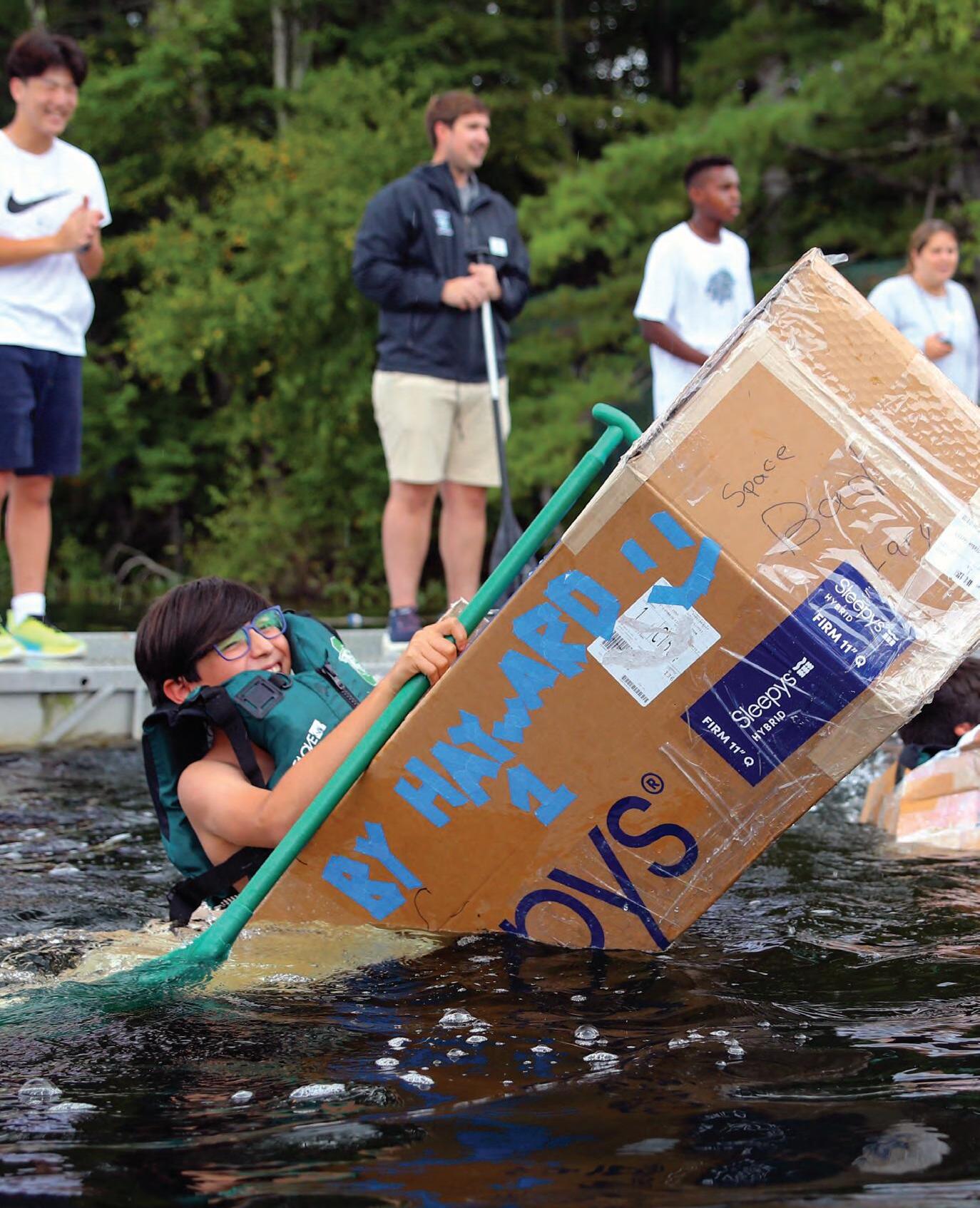

“Why I Teach” is a recurring column in which we invite Cardigan’s teachers to share their thoughts in their own words. It explores why these individuals got into teaching in the first place and what it is that gets them out of bed each morning. It is also ultimately a testament to their hard work and dedication—to all the planning and preparation, as well as the heart—that they invest in each day on The Point.
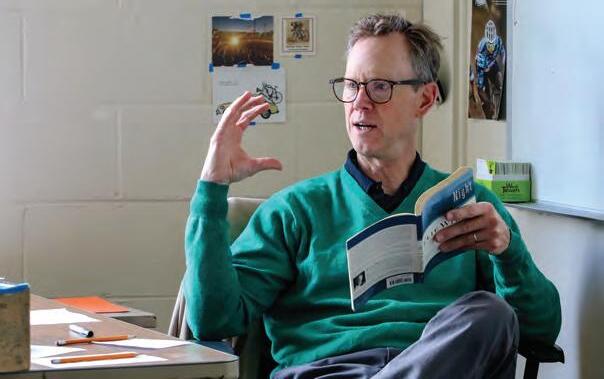
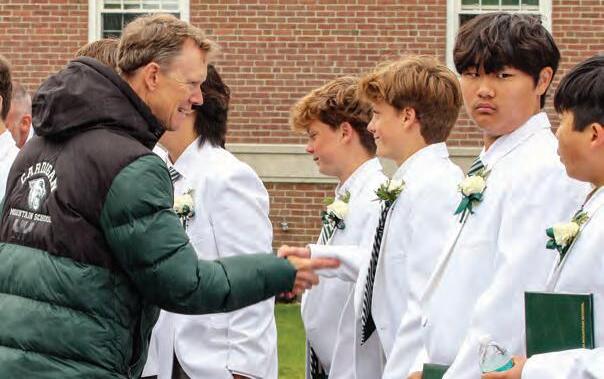
by al gray h’13, p’14,’16, english faculty
I began to consider teaching early on. My mom and uncle both enjoyed their experiences and encouraged me. My mom, Margaret Bartlett Gray, graduated from Farmington Teachers College (now the University of Maine at Farmington) and taught at the Willowbrook Early Childhood Elementary School in East Hartford, Connecticut. My uncle, Vernon Gray, taught middle school earth science at St. Bernard’s School in New York City and later at the Fairfield Country Day School (coincidentally, both are all-male). Mom and Uncle Vernon’s intelligence, kindness, and patience made teaching seem important.
In grade school, Joan Hoffman, my English teacher, promoted my love of reading. She had a massive collection of books to share with students, and the titles were often far more interesting than those available in our school library. In grades eight and nine, I was inspired by two well-rounded and multi-talented teachers, John Cissel and David Sarles. Mr. Cissel and Mr. Sarles showed me that teachers could be superb athletes, too. They helped me to see that teaching could encompass more than the classroom. Then, in secondary school, David Hovey and Todd Eckerson demonstrated the value of advising and citizenship. I teach because I felt, and still feel, I can do what each of these mentors did for me. r
quote: Do the best you can until you know better. Then when you know better, do better.
– maya angelou
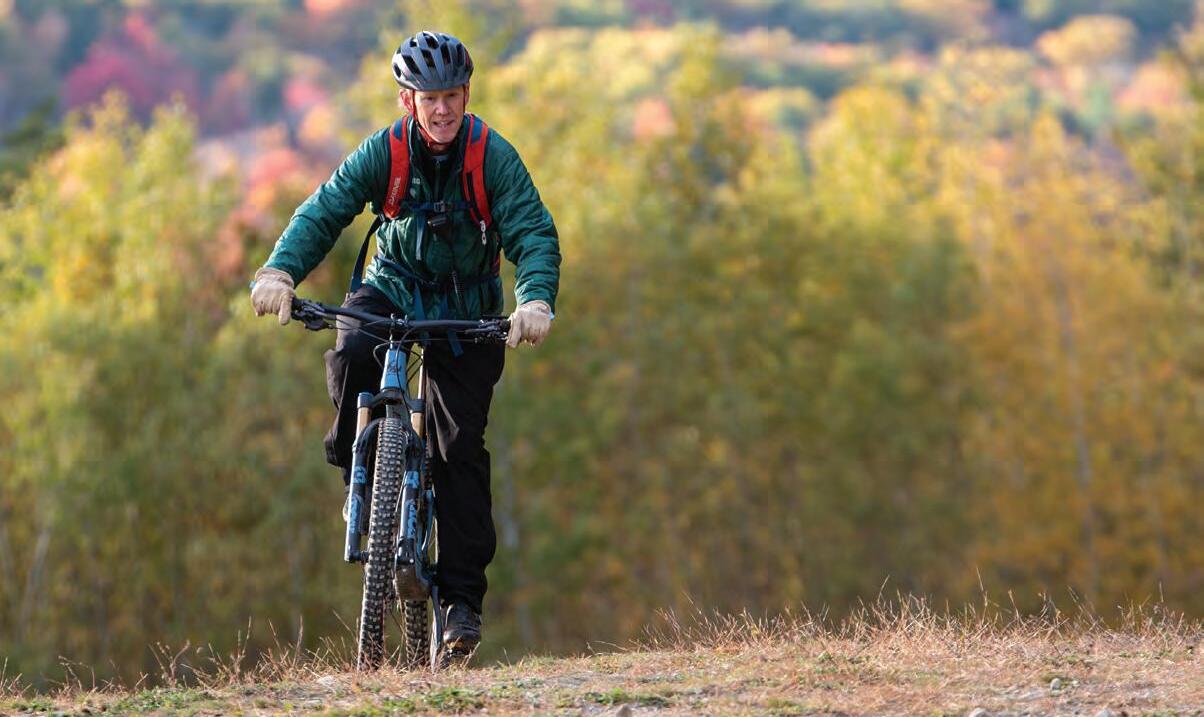
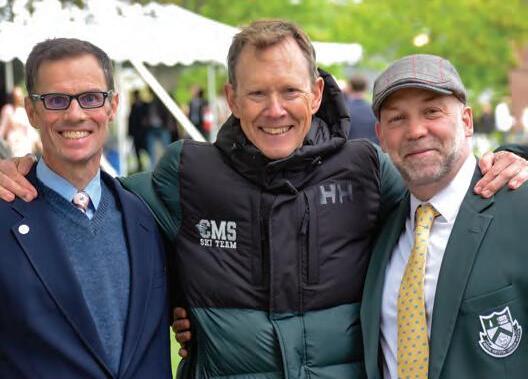
why cardigan? At Cardigan, I like the teamwork. I also like learning. Fortunately, students and colleagues serve as pivotal role models and inspiration. No matter how a meal, lesson, practice, or advisory goes, you get the opportunity to try again, and soon! Here, our myriad roles provide plentiful opportunities to shape our inner world and have fun doing it. Sweat equity is recognized and promoted at Cardigan. Community members share their passion for learning and living. I draw on this daily. This community helps all learners, young and old.

Walk into the Gates lab when the eighth and ninth graders are in class and the lesson plan for the day is rarely clear. You won’t find objectives written on the board, copies of practice problems dutifully filled out by students, or step-by-step instructions on how to complete an assignment. What you will see are teams of students huddled together, working independently on the development of their start-ups; in this inquiry-based classroom, teachers are present, not to tell students what to do but to ask questions that lead students on open-ended and unique quests.
Last fall, Director of Gates Jenny Sabados presented eighth and ninth-grade students with the option to sign up for two new yearlong courses—“Robotics” and “Innovators.” The robotics students competed in four competitions throughout the winter and were invited to attend the New Hampshire state championship. While they could not attend the championship since it was held during Cardigan’s March break, the boys continued to innovate and develop their robots throughout the spring for an on-campus expo during the Charles C. Gates Invention & Innovation Competition.
At the same time, the Innovators developed business plans for products and services that aimed to solve current real-world problems. Students researched their competition, networked with entrepreneurs and experts in their field, developed prototypes, when applicable, using emergent technology, and competed in national competitions—including the Big idea Competition, the Blue Ocean Competition, Innovation World Series, and Community ChangeMakers. Students also had an opportunity this spring to visit New Bedford Research and Robotics (nbbr), where they present-
ed their business plans and received feedback from a team of advisors who are experienced in helping startups turn ideas into marketable products. The students’ classroom was the real world, and their assignments were dictated by their business plans.
“Gates is more than a competition,” says Ms. Sabados. “It’s a learning philosophy that we strive for every Cardigan student to experience across academics, athletics, and residential life. By fostering a sensitivity to possibility, the Gates mindset cultivates confidence, empathy, and purpose, empowering the boys to take action and make meaningful contributions to the world around them.”
One of Ms. Sabados’ favorite exercises with her Innovator students is to break down the walls of the Gates classroom and transport her students to a coffee shop in Silicon Valley. Taking on the role of an investor, she asks her students to pitch their ideas to her, telling stories that are provocative, informed, professional, and concise. So grab a cup of coffee, take a seat, and listen to their pitches r
facing page: Team members of PK Hockey Company, EmployEASE, and Sensory Helmet traveled to the University of New Hampshire this spring to participate in the Community Changemakers Challenge. It was not only an opportunity for the boys to compete against other teams from across New England but also a chance to receive feedback on their business models. this page: 1: PK and JT meet with board trustee Kevin Lo who is a technology executive and has spent most of the last decade leading human health and food system companies. 2: JT and PK get ready to present their business plan during this spring’s Charles C. Gates Invention & Innovation Competition. The team won both first place for Innovators and the Community Choice Award for Futurists. 3: PK works in the Gates lab, perfecting the formula for his company’s hockey wax.
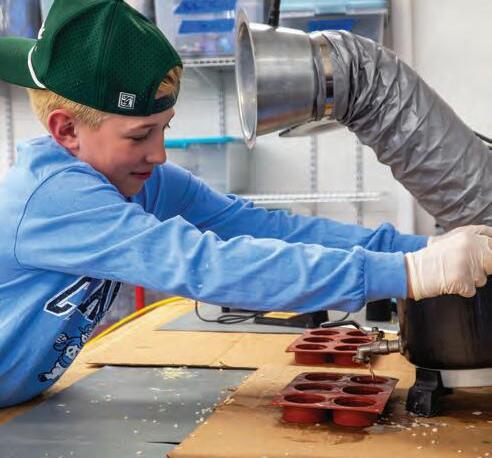
pk hockey company
pk stasko ’26 and jt tourangeau ’25

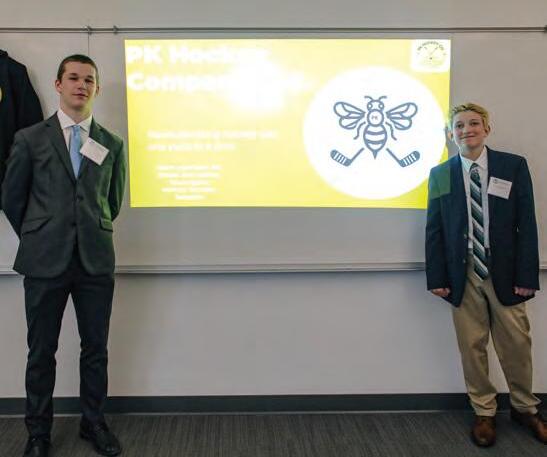
elevator pitch: PK Hockey Company is a small, New Hampshire business that was founded by a hockey player with the goal of peak performance for hockey players. Our hockey stick wax comes in a variety of scents and is reasonably priced. We use beeswax as our main ingredient, which is a by-product of honey, making it both eco-friendly and % sustainable. We strive to make the best wax for our customers and make each one with love. We also have made a commitment to giving back; for every $. of income, we donate $. to Hockey On Your Block, a Chicago-area organization that uses the game of hockey to drive social change and foster more inclusive communities.
what challenged you: “I couldn’t do it on my own,” says PK, who started the company prior to signing up for the Innovators class. “In order to grow the company, I’ve had to be open-minded and learn to work with others.”
JT, who took on the role of chief marketing officer, learned to harness courage when he continued to reach out to prospective clients after getting turned down. “Sometimes it’s hard to keep going,” he says. “At the same time, the Gates Program has given us a lot of support and helped us to talk to entrepreneurs who have given us a lot of encouragement. It’s been really cool.”
what’s next: So far, all the wax has been produced in the Cardigan Gates lab. We’d like to be able to sell to , hockey players, but in order to do that, we’ll need help making more wax. And before that, we need to protect our unique formula by getting it patented r

elevator pitch: Online shopping has created a tremendous amount of waste. We wanted to create a box that was eco-friendly, returnable, reusable, and space-efficient. Our goal was to partner with Amazon and replace their most common shipping box—.” x ” x .”—with a reusable box that could be folded flat and returned to Amazon as an addon feature for Amazon Prime users.
what challenged you: We had to pivot a lot. We started off thinking we wanted to partner with a food delivery service, but our research and our Zoom call with Mr. Kevin Lo P’ [trustee and entrepreneur] helped us understand the market better and narrow our focus. In the end, our business plan kept things simple—produce one box, prove that our concept could work, gain the trust of Prime users, and then slowly expand to other sizes of packaging. r
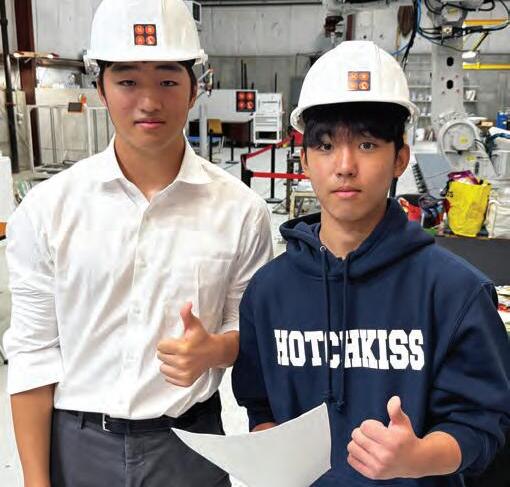
elevator pitch: Sports are important, but head injuries continue to be a problem. We designed a helmet with built-in sensors that will tell our users when it is time to replace their helmets. The sensors will also track impacts over time and assess their cumulative effect. When a dangerous impact occurs, a notification will be sent to coaches and parents.
what challenged you: It was challenging figuring out how sensitive to make the sensors. Our product was not meant to be a diagnostic tool nor replace the advice of a medical doctor, but we still wanted to make an algorithm that was accurate and reliable and didn’t sideline kids unnecessarily.
It was also challenging to keep going. When we started, we had so much passion and thought we’d be done in a month. Then in February, we were supposed to enter the Blue Ocean Competition and we weren’t ready in time. We couldn’t compete. It was a big learning moment for us and made us more dedicated to sticking to our plan and getting our work done.
1: Like many of the Innovator teams, Peter and Allen had a chance to video conference with entrepreneurs to ask questions and get feedback on their business plan. 2: Brian and Daniel give a thumbs up after their presentation at nbrr, an organization dedicated to providing “access to frontier technologies for entrepreneurial and social impact.”
what surprised you: We feel really lucky to have been a part of this program. We didn’t know that we could be professionals and have conversations with experts. We got to connect with a neurologist at Boston Children’s Hospital, and when we made a cold call to Boston University, researchers responded and sent us a lot of information in return. People had a genuine interest in our project and what we were trying to accomplish. r
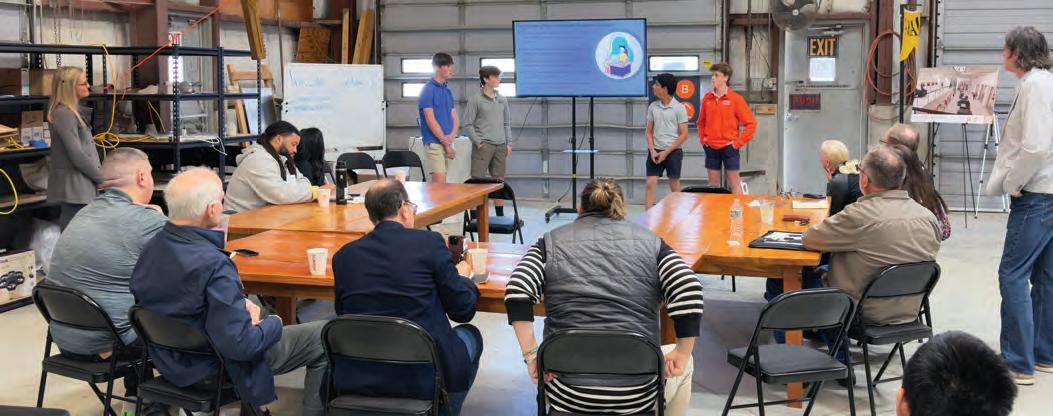
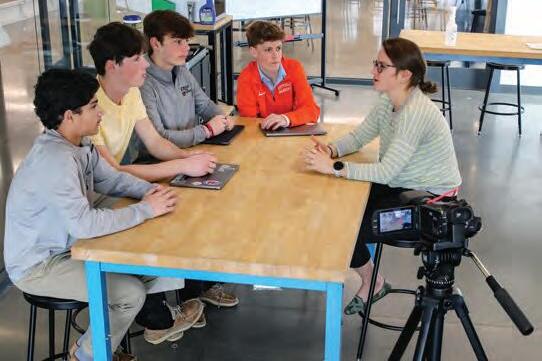
employease
matt blanchard ’25, eli heffer ’25, mana petrini ’25, and ryan sands ’25
elevator pitch: Employease is a recruiter in your pocket, a consultant in your ear, and a skills instructor for your future. Over ten percent of recent college graduates are unemployed. We set out to help them find their forever career through a three-tiered program. The first phase included an online application that gave clients individualized job listings based on information gathered in an inquiry form. The second phase provided clients with online consultants specifically trained in the field of work in which they were seeking employment. The third phase added a co-op model that could connect college graduates with real-life work, preparing them for actual jobs in the future. Clients would also have access to micro-credentialing, two to four-week classes that would target specific skills a person might need in a specific field. One example might be a course in classroom management for a client seeking a job in education.

what challenged you: Working on independent projects like this puts a lot of the responsibility of staying focused on us. We had a lot of independence every day but we had to get our work done.
Focusing our attention on micro-credentialling was the key to our success. We were lucky to get a lot of feedback throughout the year from entrepreneurs and members of the community, and we used that information to refine our ideas. r
1: Team EmployEase presents to a panel of entrepreneurs at nbrr, receiving feedback on their business model. 2: Team Employease won first place at the Community Changemakers Challenge at the University of New Hampshire this spring, competing against high school teams from schools, including Phillips Exeter Academy, Governor’s Academy, and Proctor Academy. Here they plan their strategy before their final presentation. 3: Team Employease also built on their research by interviewing college graduates who had recently been applying for jobs and could speak first-hand about the challenges they faced. Here they interview Cardigan sixth-grade teacher Courtney Bliss.
Each year during the Charles C. Gates Invention & Innovation Competition, students not only compete for cash prizes, but they may also receive a Patent Nod, an award that “allows the patentability of the student’s invention to be assessed by a law firm specializing in intellectual property law.” In , Terry Langetieg ’ and Edgar Choi ’, who at the time were in seventh grade, received a Patent Nod for their invention, KeyPoint, “an integrated keychain assembly for invehicle stowage of vehicular keys and key fobs while operating vehicles.” Three years later, on February , , the U.S. Patent and Trademark Office granted Terry and Edgar a patent for KeyPoint. Director of Gates Jenny Sabados recently caught up with Terry to congratulate him and ask him about his experiences in Gates.
jenny sabados: Terry, congratulations on your patent! That’s an incredible achievement, especially for something you started working on in seventh grade. Can you tell me a little about the journey through the Gates Program that led you here?
terry langetieg: Thank you! It’s been such a great experience. I just think that the Gates Program is such a unique approach to learning—one that really encourages failure and success, not just success alone. I think more schools should adopt this model because it truly taught me how to problem-solve, adapt, and grow.
In my first year in the program, I was just building for fun and learning foundational skills, like D printing and using design software. But in my second year, my partner Edgar Choi and I were the last team to come up with an idea. We were brainstorming, searching for something innovative, and suddenly we realized that sometimes the best ideas are the simplest ones.
js: What was the spark for your invention?
tl: It actually came from personal experience. My family had a new leased car at the time, and I noticed that the key fob was always just tossed into the center console. It didn’t really have a designated place. That got me thinking—why isn’t there something designed specifically to hold and secure modern car key fobs?
js: That’s such a relatable problem! How did you go about developing a solution?
tl: Our first prototype was just an L-shaped holder, but it didn’t work at all—the weight of the key fob pulled it right off. Our second prototype was a magnetized design, kind of like a toaster oven concept, but we got some really harsh feedback on
that one. People thought it looked clunky and out of place on the dashboard. That was tough to hear, but it was a huge lesson in understanding customer needs and preferences.
js: So, after those setbacks, how did you land on the final design?
tl: That’s where things really clicked for us. We redesigned it as a puzzle-piece-style holder that seamlessly snapped into place. It was secure, sleek, and solved all the issues from our earlier versions. At that point, we also had to consider how it would fit into the larger market—whether it would be something customers would purchase separately or something that car manufacturers could integrate directly into their designs.
js: Beyond the technical side, what other skills did you gain from the Gates Program?
tl: Public speaking and presentation skills were huge. Once we had our final prototype, we had to sell it—not just the idea itself, but also why it actually mattered to people. That’s a skill I use all the time now at Groton School.
One of the biggest things I learned is that selling an idea isn’t always about how big or world-changing it is. Sometimes, it’s just about making something simple and useful—something people can instantly see themselves using. Everyone has a car, and everyone has keys. That made our idea click with people right away.
js: Now that you’ve been granted a patent, what’s next?
tl: If we move forward with it, we’d definitely want to explore partnering with car companies to incorporate our design directly into their models. I think that would be the ideal next step.
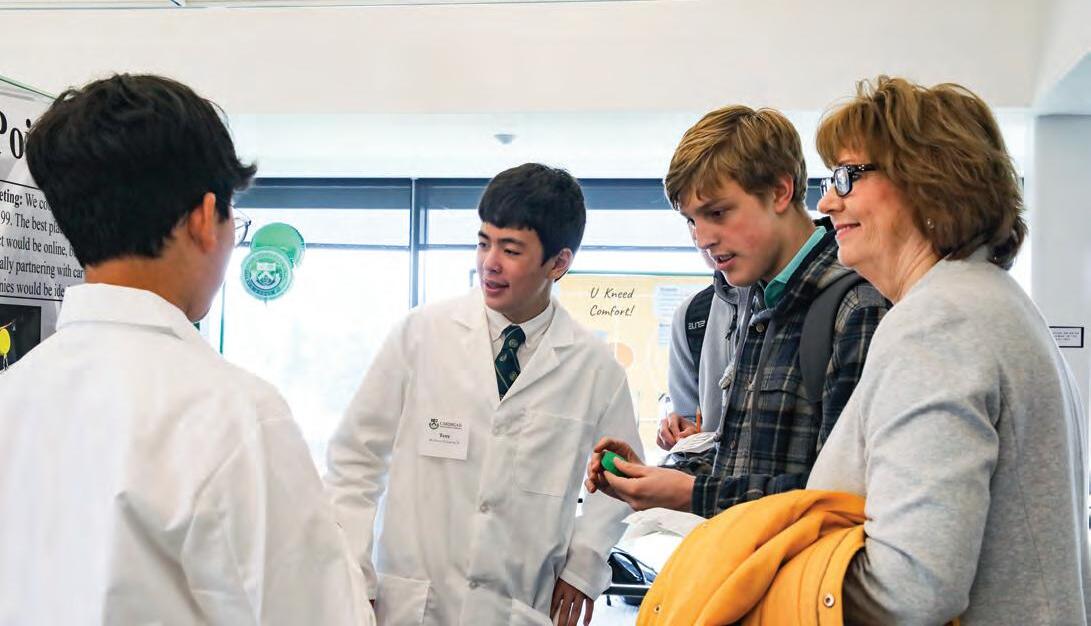
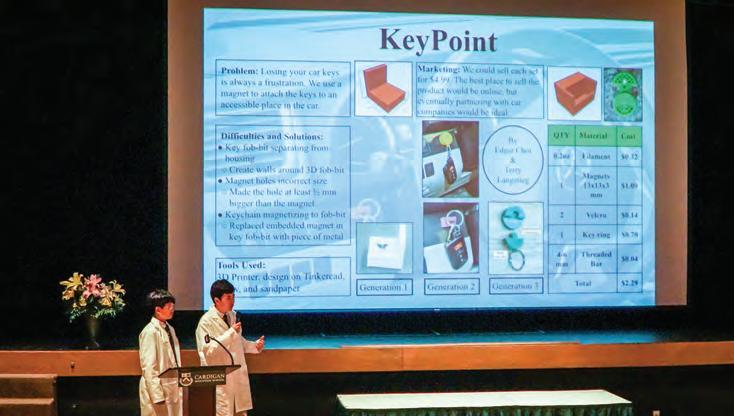
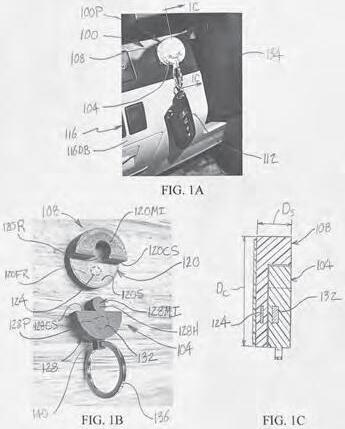
js: What are some key takeaways you would share with current Gates students about what the program did for you?
tl: Gates taught me that failure is a crucial part of success—you have to ask questions, take feedback, and keep going. I’m incredibly grateful for that experience, and I truly believe more schools should embrace this style of learning.
And some of the most valuable lessons I learned didn’t happen just during class time; they happened after hours, in one-on-one sessions with instructors. So my advice? Take full advantage of all the time and resources Gates offers. r

Cardigan continues a strong tradition of building facilities that are in answer to its strategic plan. The programs and the people come first; the physical plant—the buildings, the fields, the natural spaces—makes everything possible.
On Friday of Spring Family Weekend, Cardigan Mountain School hosted a ceremonial groundbreaking for Gregory Hall. In addition to including student rooms, Gregory Hall will also expand on-campus faculty housing, supporting teachers, advisors, coaches, and their families—a key initiative outlined in The Strategic Plan for Cardigan . By creating more faculty living space, Cardigan reaffirms its commitment to the strong relationships that form the core of its educational model.
Cardigan former Board Chair and lead donor David Gregory P’ and his wife, Beth Wilkinson P’, were unable to attend the groundbreaking due to a prior commitment, but their impact on the project was deeply felt. Head of School Chris Day P’,’ shared: “In all, there were individuals who made this project happen, but David and Beth led the way! They believe in Cardigan so much that they made a gift that will last more than a lifetime.”
In addition, we’re excited to begin construction, in tandem with Gregory Hall, on the Armour Squash Center, made possible

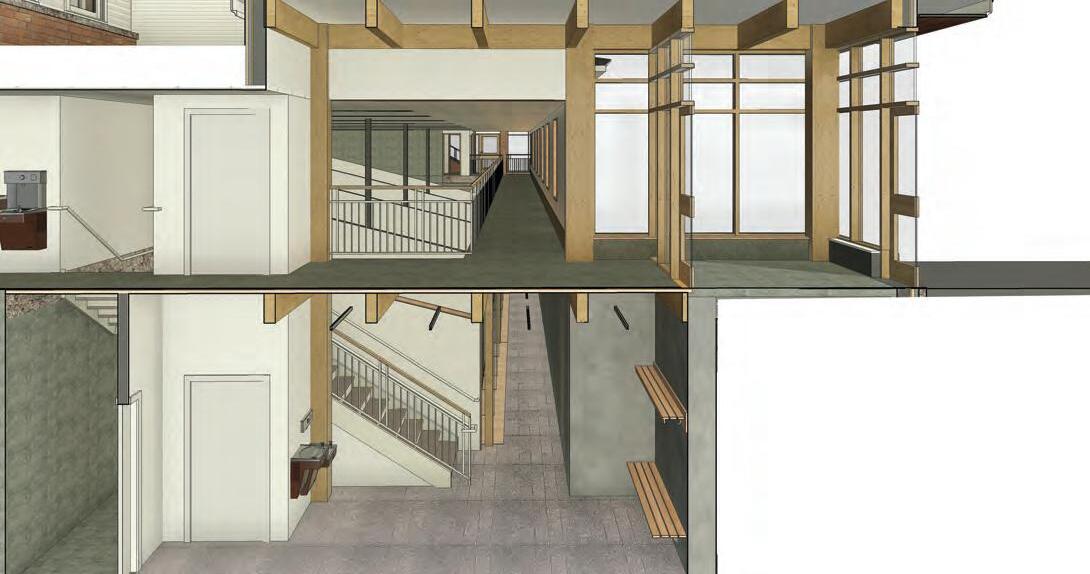
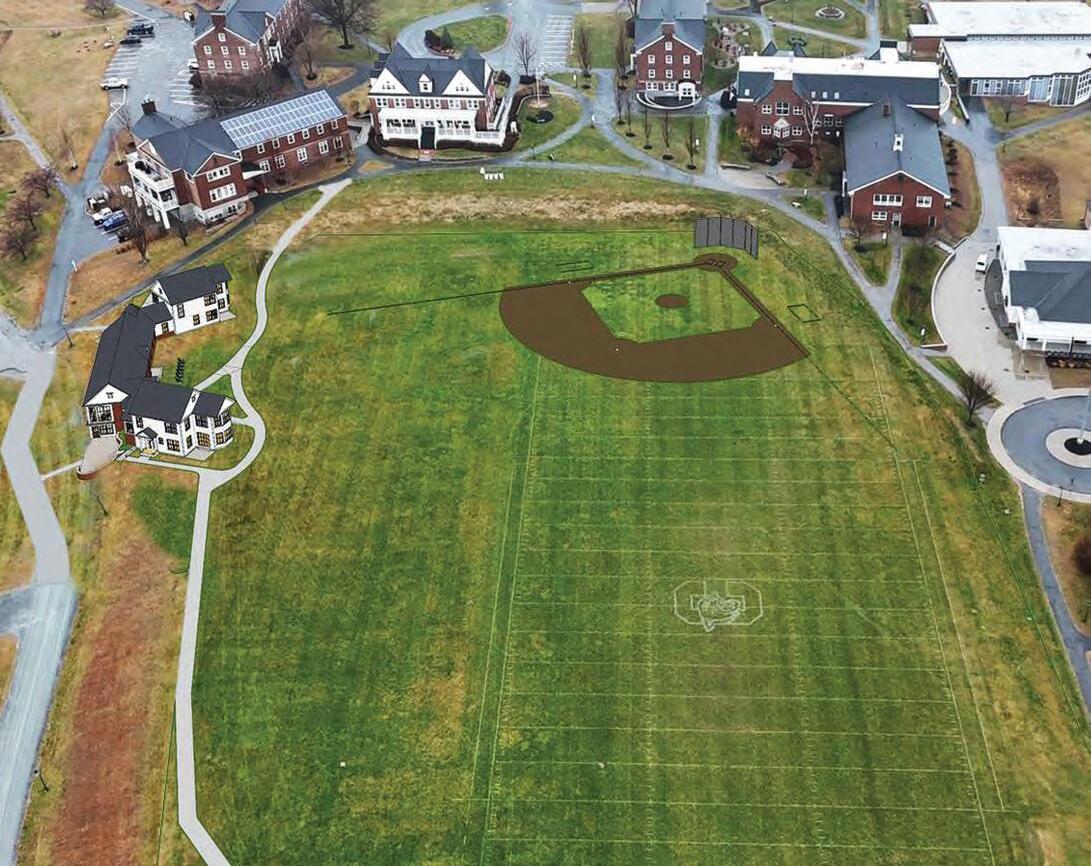
through the generous support of alumnus Tony Ward ’ and his mother, former trustee Cynthia Landreth P’. The center will be named in recognition of Ms. Landreth’s family.
“Like the recent addition of the Jennings Boathouse and our rowing program, the Armour Squash Center is a powerful step forward in advancing Cardigan’s strategic priorities—broadening student opportunities, strengthening faculty life, and widening our appeal to families around the world,” explained Mr. Day. “We are deeply grateful to Tony and Cynthia for making this long-held dream a reality.”
Located on the west side of Gregory Hall, the center will feature four international-sized courts, court-level and balcony viewing, home and visiting locker rooms, and a welcoming vestibule.
Gregory Hall and the Armour Squash Center are scheduled to be ready to welcome students and faculty families in the fall of . When complete, they will stand as a lasting symbol of generosity, vision, and Cardigan’s unwavering commitment to community and wellness. r
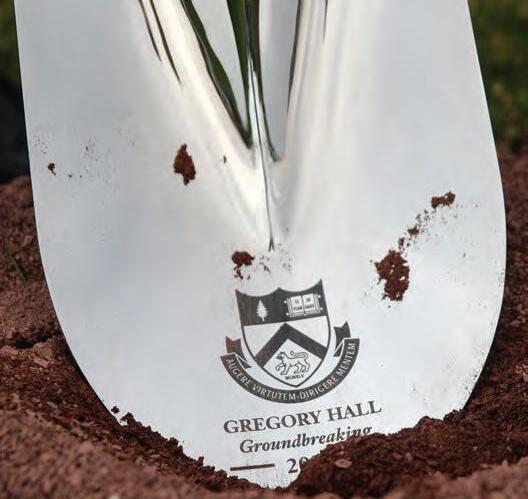


In the feature article of this magazine, we explored the benefits of failure, so it seems only fitting that one of Cardigan’s best traditions that grew out of failure is celebrating its th anniversary this year. In , Cardigan made a trip to Finland to play hockey, and when they discovered that the tournament in which they were planning to play was canceled, they could have accepted defeat, packed up, and returned home. Instead they asked for help and in return received countless gestures of kindness and goodwill. The cultural exchange continues to this day, connecting schools and communities and people on two different continents thousands of miles apart.
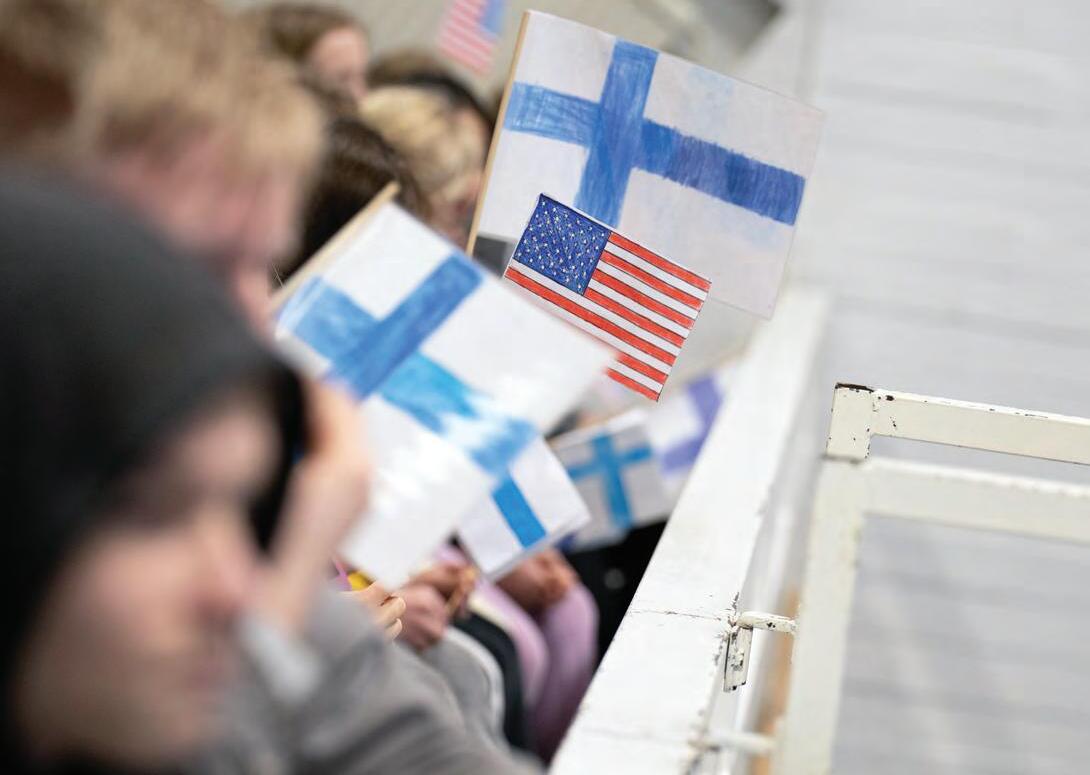

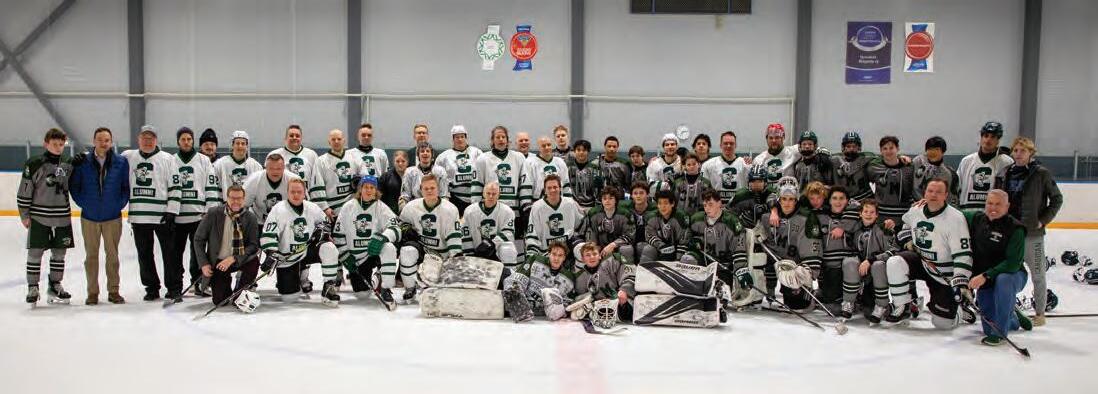
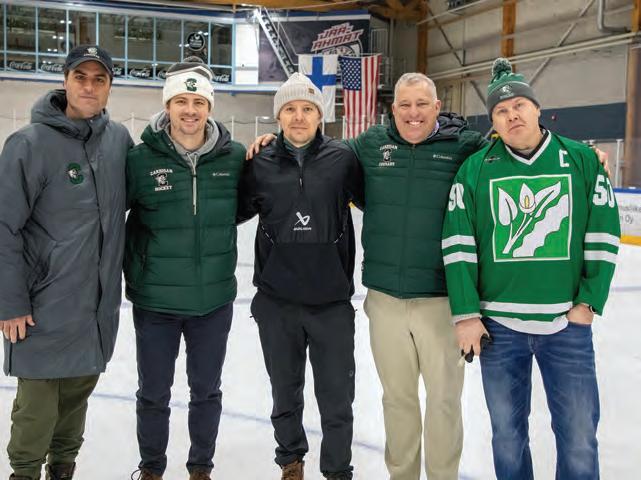
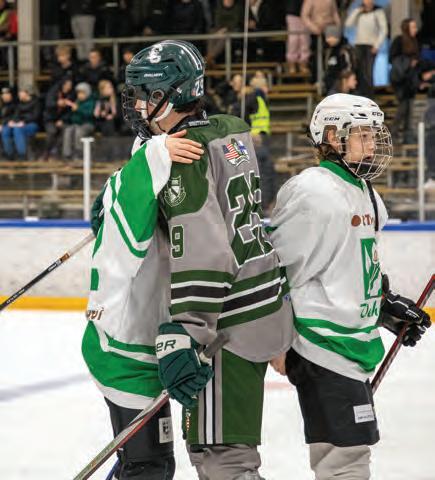
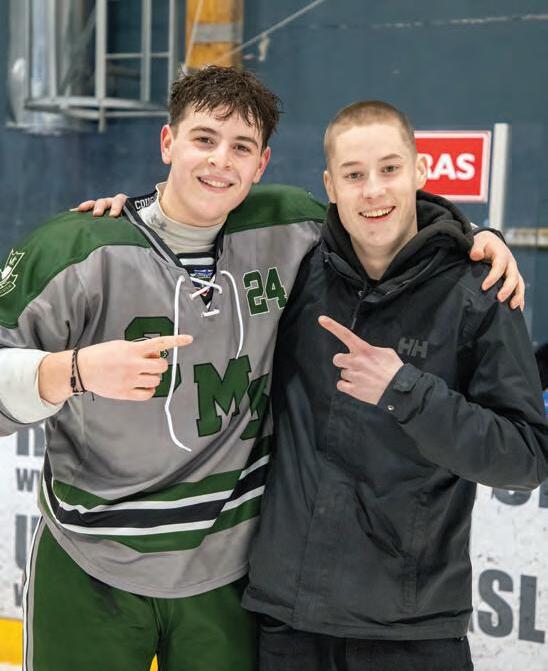
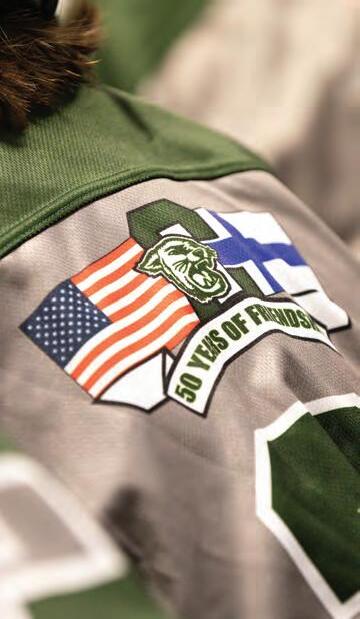
The number of people who have become involved over the years is amazing. Cardigan students and their parents, alumni, host families, Finnish parents who have kids who have come to Cardigan for a week or a year, members of the town—they all have special ties.
– ryan frost p’25, athletic director

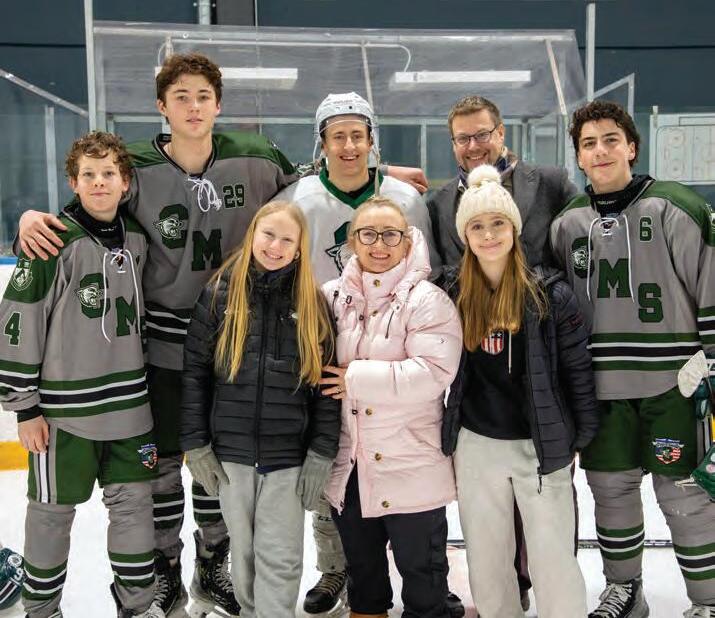
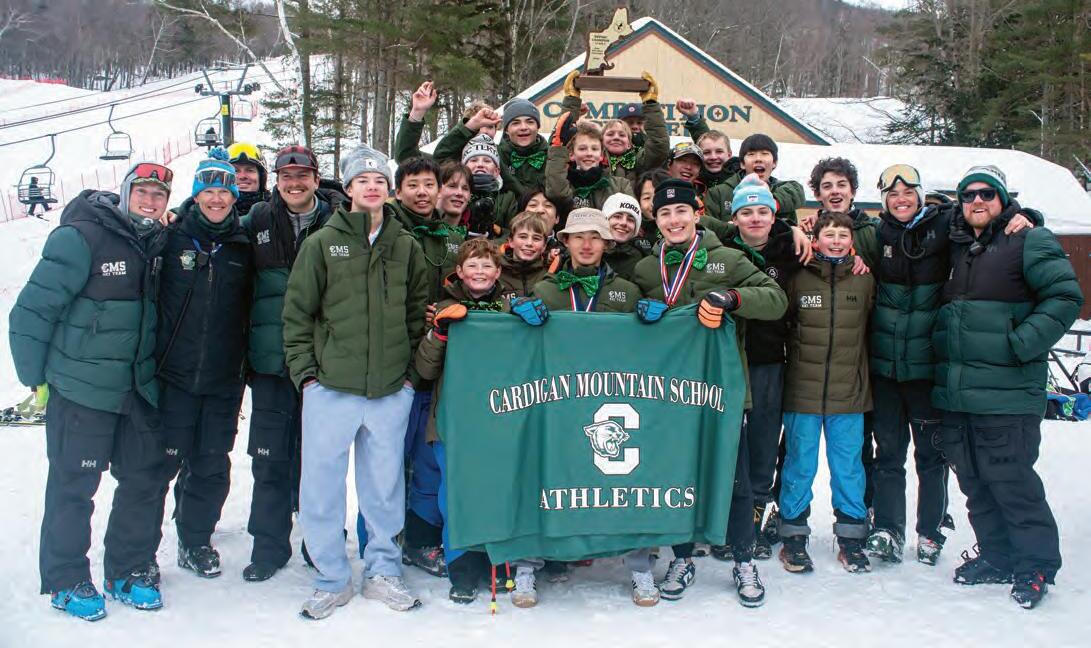
In February, the Cougars had a chance put their hard work, team unity, and passion for skiing to the test at the nepsac Championships, which took place at Mount Sunapee Resort.
In the winter of –, the Cardigan Ski Team carved out a season to remember.
by chris adams, director of communications and marketing
“Look how small they are!” I heard one girl shout as the younger members of Cardigan’s Ski Team scurried into place for a team photo on the podium. “What’s a junior boarding school?” someone behind me asked. “Did we get beaten by middle schoolers?”
From my position about thirty feet in front of the podium, I felt a wave of incredulity come over the crowd as they realized what had happened. Competing against older and more experienced secondary school skiers, the Cardigan middle school Cougars stunned the competition by capturing both the slalom and giant slalom wins on their way to claiming the Class A nepsac Championship in February at Mount Sunapee. Seven Cougar skiers contributed to the win—Cam Blatz ’, Thomas Choi ’, Matthew Blanchard ’, Simon Manners ’, Mac Navins ’, Riis
Peterson ’, and Everett Lo ’—while their teammates supported the day’s effort in multiple ways.
“What makes this team so special is how they push each other every day,” Director of Skiing Julia Ford reflected on the team’s achievement. “Their success isn’t just about individual performances—it’s about how they work together, support each other, and grow as a team. That’s what makes these accomplishments even more meaningful.”
But their success didn’t stop there. With the team championship in hand, many members earned accolades of their own, including co-captains Cam Blatz and Thomas Choi. Both qualified for the U.S. Ski & Snowboard U National Championships at Sugarloaf Mountain in Maine. Facing a field of the nation’s top young racers, Cam and Thomas rose to the challenge in the giant slalom: Cam landed an impressive nd-place podium finish, with Thomas close behind in th. Both Cougars were also honored to
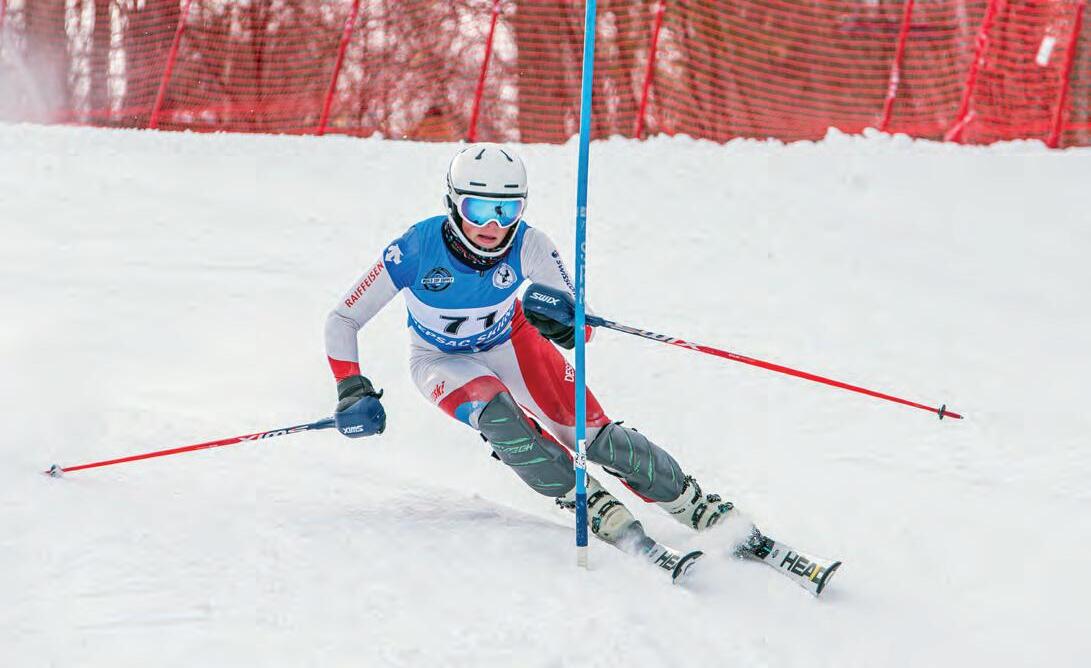
Matthew Blanchard ’ skied from starting number to th place to secure the
represent their countries in international competition.
I sat down with co-captain and Caldwell Prize recipient Cam Blatz to talk about the team’s rise, the thrill of racing at the national and international level, and his Cardigan experience.
chris adams: Did you have any challenges in your first few weeks at Cardigan? cam blatz: Honestly, knowing that I wasn’t going to have my phone was a big thing for me. I was nervous, and I knew it was going to be a challenge because I had attended an online school for two years prior to coming here, so I had access to my phone a lot, and I was with my parents a lot. It was a big adjustment, but I had my brother Casey ’, who was a really big factor.
ca: Were there any particular people who were helpful that first year?
cb: Yeah, I’d say a big one was Mr. Turcotte. He was my math teacher, and at the time, math was the class that I was really struggling with. He knew it, and he was always there for me, as a teacher and a person, and he still is. Ms. Ford was there from day one. And there were some older boys in my dorm, like Enrique Rojas ’, who were always checking on me.
ca: Ski racing demands a lot of time. How did you balance ski racing with school and your other sports?
cb: This is a good question. I honestly can’t give you a really good answer…I don’t even know how I balanced it. It just flowed because my teachers supported me and were in communication with me when I was away. They were available for Zoom calls if I needed to catch up on any work. Everyone had my back.
ca: Do you think playing football and lacrosse helped your skiing?
cb: Definitely. I think that lacrosse and football helped to get my mind off skiing for a little bit. Football really helped with my conditioning, and the thought process of memorizing all the plays and footwork definitely helped with my skiing. And this year, I went on the North Carolina lacrosse trip. It took my mind off skiing because I just played lacrosse and just thought about lacrosse. When I came back to skiing, all of my bad habits that I had had before were just magically gone after my first day of training, which was really cool.
ca: You’re graduating in two days. Was there one moment from your time at Cardigan that you might remember forever?
cb: One? Oh, man. I’ve got three and I don’t know how to…
ca: Well, let’s hear the top three and we’ll see how it turns out.
cb: Okay, playing varsity lacrosse on Eaglebrook Day of my seventh-grade year. It was pouring rain. We were at home. We had lost to Eaglebrook away [earlier in the season], so it was a really big game for us, and the entire school showed up and cheered the whole game. We ended up winning, and everyone stormed the field after. Another was coming back from the Whistler Cup last year. I won a gold medal, and at my first meal, Mr. Fassina announced that I had been successful and asked me to stand up. It was the best feeling knowing that the whole community was there for me. I had chills. And then, this year, it was my last spring Eaglebrook Day…Being on the field for the last time and knowing that it would be the last time I’d wear a Cardigan jersey was just so special. I cried for a while.

Co-captain Thomas Choi ’ raced to a third-place podium finish in the slalom and fifth-place in the giant slalom.
ca: What was it like to represent the United States at international ski races?
cb: Those races were unbelievable. I got to race against guys from maybe countries, and it was just a really cool experience knowing that I belonged there. Last year at the Whistler Cup, I won the slalom, so that was something I’ll never forget. Going up to the podium and wearing my Team usa jacket and my Cardigan hat; it felt good being able to represent my country and my school.
ca: Tell me about the day the Cardigan Ski Team won the nepsac Championship.
cb: It was just a whole team experience at nepsacs. I don’t think I’ve ever seen our team work so incredibly well together and ski so fast. The entire team was there for each other at the bottom of the course and cheering as loudly as they could. I don’t know if I’ve ever heard a team so loud as during the second run of GS. There were people on course, and they heard our entire team, and they were like, whoa, that Cardigan team’s loud! Winning the championship was a moment I’ll never forget. We were a team, and that’s why we were fast.
ca: You and your co-captain, Thomas Choi, were leaders of the team and often had similar results. You have been celebrated together and compared to each other. What’s that like?
cb: The comparison is definitely hard. People are constantly in your ear…oh, who was faster today in training? But Thomas and I have been working on it for two, three years now…We’re both fast skiers. We’re both top skiers in the world. And at the end of the day, it is because we have each other that we’re so fast. We made each other faster, but we both know—I know at least, and I think he knows—we’re really good friends and because of that, we can be competitive with each other. But then once we’re in the AV at the end of the day, we’re just buds, we’re Cardigan brothers.
ca: You will be attending Stratton Mountain School next year. Do you think you’re ready?
cb: %. I was just telling my parents, I’m so happy I have had this opportunity because I’m prepared. There’s nothing more that I could ask for than to be prepared next year.

ca: Is there anything you’re nervous about?
cb: I’m nervous about leaving because Cardigan is my family. I’m definitely a little nervous for that next step in my skiing— how difficult it is about to get. It’s going to be demanding and I’m going to be working out a lot and I’m going to need to balance my skiing and school. I’m a little nervous for it, but I know I’m ready.
ca: What advice would you give to a younger version of yourself?
cb: The biggest thing is to take chances and not to be afraid of failing. I think that for someone new, do things that are out of their comfort zone, like giving a speech in Chapel.
ca: What are you going to miss?
ca: You obviously love playing lacrosse, too. Do you plan to keep playing?
cb: I’m definitely squeezing in some lacrosse! I got invited to a Nike national camp, so I’m going to that this summer. Lacrosse is definitely something that has been a big part of my life for a while, and I’m not ready to give it up yet. I’m still playing.
ca: Is there anything else you’d like to share?
cb: Oh, a lot. I’m going to miss the people. I’m gonna miss my guys, my really close friends. I’m definitely going to miss Ms. Ford a lot, and Mr. Fassina too. Ms. Ford feels like family now, and it’s going to be difficult leaving someone like that because I can go to her about anything. I will miss the whole Brotherhood at Cardigan, just being here with my friends and being at a boys’ school.
cb: Honestly, I just want to thank my parents. Without my parents’ support, without my brother’s support, I don’t really think that I’d be where I’m at today. And then everyone here, all my coaches, have just been phenomenal. I’ll definitely miss them and the big part they were in my life.
While attending Stratton Mountain School next year, Cam will also be training and competing with the U.S. Regional Development Team r
What makes this team so special is how they push each other every day. Their success isn’t just about individual performances—it’s about how they work together, support each other, and grow as a team. That’s what makes these accomplishments even more meaningful.
– julia ford, – director of skiing
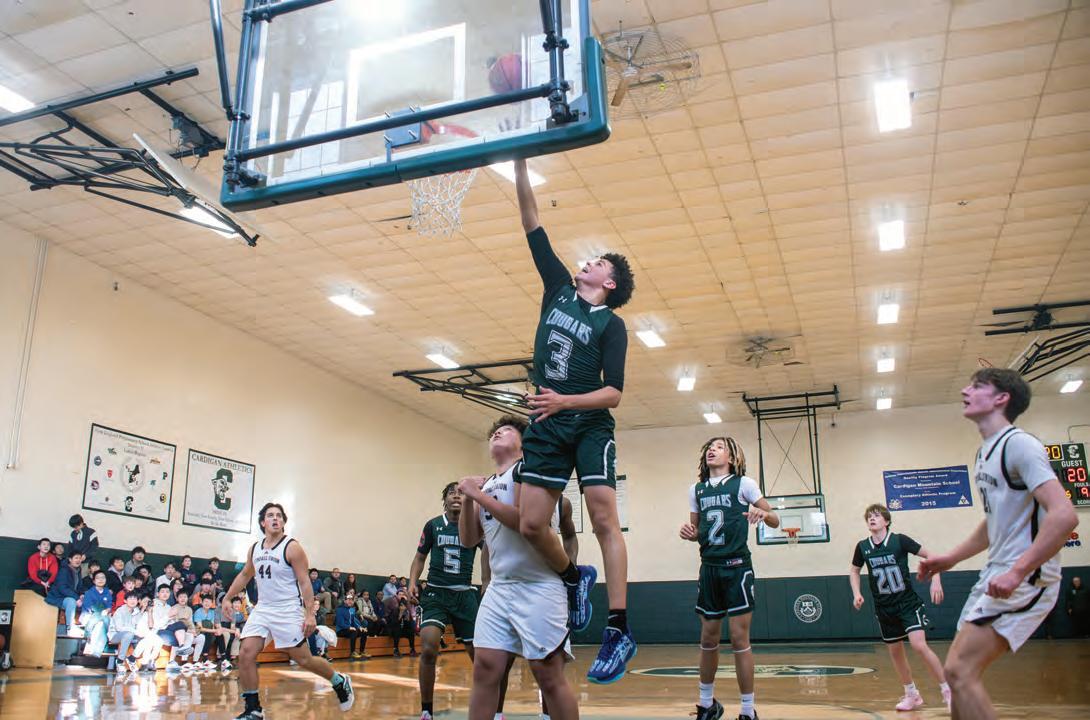
Amidst the sounds of squeaking sneakers and boisterous cheers, one Cougar learned how to lead, inspired by an older teammate who had mentored him the year before.
by chris adams, director of communications and marketing
Markus Jones ’ is a quiet kid with an affable, comfortable smile that likes the camera, which is how I first learned who he was. I bumped into his father, Charles, at a JV football game in the fall of ; he was doing the same thing I was—taking pictures.
“Number seven,” his dad answered to my standard question when I meet new parents at a game. I learned that those first unsure plays on Marrion Field were Markus’ first as a football player. “It will be good for
him,” Charles said, almost as if he were trying to reassure himself. A year later, Markus would be a regular on a varsity football squad that won five games and only lost one. He was buying into what we teach Cardigan boys—watch, learn, work hard, and be a good teammate.
Chosen to be a co-captain of the basketball team, Markus would need to rely on that experience during his second season on the Cardigan varsity. His first had offered plenty of highlights, but had ended with a disappointing loss in the Future Stars Tournament at Suffield Academy. “Losing
that one smacked us in the face a little bit,” Markus remembers before adding, “but it was probably the best thing that could have happened to us.”
The Cougars had a core group of returning players, a deep bench, and a relentless full-court press. The team weathered some adversity, and when it came time to return to the Future Stars Tournament, the Cougars took care of business and brought the trophy home to Cardigan. At the center of it all was senior co-captain Markus, whose heart, hustle, and leadership helped shape the team’s identity.
A few days before his graduation from Cardigan—during which he received the Faculty Prize—I sat down with Markus to talk about basketball, his Cardigan experience, and what it means to be part of something bigger than yourself.
chris adams: Did you have any challenges in your first year?
marcus jones: I thought I would be homesick because I’m really close with my parents. I’m an only child, so I don’t have a brother or a sister who I can talk to. But Cardigan made me feel like I had parents here. My advisor, Ms. Fedele, is really like a mom to me. She’s very helpful. Mr. Harvey is like an older brother and gave me a lot of advice. The faculty care for you a lot. I felt that as soon as I got here.
ca: You also played football and tennis at Cardigan. What did you learn playing other sports?
mj: I had played tennis before because my mom is a tennis player. I wasn’t that good. In my eighth-grade year, I made thirds, which I felt was good for me at the time. The coaches, Ms. Garber and Mr. Fassina, really helped me a lot. I was a bit of a hot head, so I could get down on myself a lot— sometimes I still do—but I can maintain it more. They helped me understand how to calm myself down.
I had never played tackle football before. On the first day of tryouts, one of the coaches got on me about tackling technique, and it was a shock. At my old school, the coaches didn’t push me. So when I got to Cardigan, and the coaches were like “you need to learn to do this or you’re not going to play much,” it pushed me a little bit.
ca: When did you realize that the basketball team was going to be pretty good?
mj: During the first game of my eighthgrade year against Lawrence Boys Club.
We came out sluggish, but as soon as we got into a rhythm, we just flowed through the second half. That’s when I thought, okay, we can be good if we just work together.
ca: Was there a particular memory from that first season that is important to you?
mj: That’s a good question. Just being teammates with Mikey [Mitchell ’, Berkshire School] and learning from him— that’s a memory that I’ll always have because he was a mentor and taught me a lot of things.
ca: How did your relationship with your teammates grow over your two seasons?
mj: We had a core group of eighth graders—Lyric ’ and London ’ Raysor, Ethan Okafor ’, Tigger Tanglertsumphun ’, Colton Boorda ’, and me—that all liked to stick together and talk with each other off the court, and then we were all leaders on the team as ninth graders this year.
ca: What did you learn about yourself through your Cardigan experience?
mj: Maturity. You need a lot of maturity. Not just in the classroom or on the court— you need it everywhere in life. You’re supposed to grow up; you need to grow up. You’re not supposed to stay the same. A Cardigan boy is someone who comes here as a little kid, and they work on a few things. Ninth grade year, that’s the year when you’re supposed to make everything work. That’s the growth.
ca: What advice would you give to a younger version of yourself?
MJ: Learn how to be prepared. Be ready and stay focused on what you have to do. It will bite you in the rear if you don’t.
ca: How has Cardigan prepared you for what’s next?
Maturity. You need a lot of maturity. Not just in the classroom or on the court— you need it everywhere in life. You’re supposed to grow up; you need to grow up. You’re not supposed to stay the same.
– markus jones ’25
mj: Be your authentic self. Don’t try to be someone who tries to be cool or tries to impress other people for laughs. Work hard, do what you have to do, stay focused, and have fun when you can.
ca: What else would you like to share about your time at Cardigan?
mj: I want to shout out to my mom and my dad because without them, none of this would be possible. I want to thank Coach Kelleher for two great years. He really helped me grow as a young man. And my teammates—we’ve grown so much since we’ve been here, especially the two-year boys. These were years I’ll never forget.
Markus plans to attend Hotchkiss School in Lakeville, Connecticut, where he will play alongside former Cardigan School Leader Preston Merrick ’ r

In this recurring Chronicle feature, the Cardigan community helps to shed light on both discoveries and puzzles from the archives. This spring, the launch of a boat made by students in the Gates lab got us wondering about other student-built watercraft. The archives reveal that boys have been building their own transport on Canaan Street Lake since the school itself was launched.
by emily magnus, editor, and judith solberg, associate director of advancement
It’s a little-known fact that prior to his appointment as the tenth head of Cardigan Mountain School, Chris Day P’,’ was the captain of the Sophie C, a New Hampshire mailboat that has been delivering letters and packages to residents on Lake Winnipesaukee each summer since . During his tenure at Holderness School, where he was a history teacher and dean of faculty, Mr. Day would escape campus during the summers, vacating his classroom podium for a seat at the helm of the World War II-era vessel. It seemed appropriate that Mr. Day would be called upon this spring to captain Cardigan’s most recent student-built watercraft.
The Gates team began sharing photographs of the boat’s construction three weeks before the end of school. “We’re building a boat!” the email subject line read.
On first inspection, it was hard to imagine that the boat would ever float. Using stitch and glue construction, students shaped the -foot boat using zip ties to mold and bend pieces of quarter-inch plywood, but the plywood proved stiff and the zip ties couldn’t hold the hull together. As the students sealed the stern of the boat with a mixture of sawdust and resin, Gates coaches Tuffer Dow and Chris Kondi scrambled to find bigger zip ties and bigger spring clamps to pull the bow pieces together. With fingers crossed, the duo relied on equal parts ingenuity and beginners’ luck.
Cardigan’s first generation of boat builders likely relied on the same combination of resourcefulness and superstition. In ,
woodshop teacher Dan Fleetham helped students build “Sailboat No. ,” described as “a small, trim boat that can be used for sailing or rowing,” envisioned as the first in a fleet of student sailboats. Then in October , Byron Koh ’, John White ’, and Duncan McInnes ’ capsized a “large sailboat” built by students in collaboration with teacher Bill Coolidge. The boat went over “halfway between the school dock and the Mansion Point,” and the Chronicle of the day noted that “both boys and boat were rescued.” It’s unclear whether the mishap reflected on the students’ construction or sailing skills.
The next boat construction project was completed in the winter of , when a student-built “ice boat” flew across the black ice of Canaan Street Lake. It was the brainchild of students Hugh Covert ’, Peter Secor ’, and Joey Bergner ’, who built the boat as a summer project: “We used plans for the popular ‘DN’ class [of ice boat],” they reported, “but widened the craft to a two-seater so that an experienced sailor can train a learner.”
In – a joint effort between students and woodshop teacher Chris Morse resulted in The Ark, a -foot wooden pontoon boat. The boat aided the study of lake ecology and was “invaluable [during Summer Session] as a rescue boat for the windsurfers, in addition to serving as a leisure touring boat.” The sailing team helped maintain The Ark for a few seasons, but because of the boat’s “deterioration,” a new pontoon boat had to be purchased in .
Back in the Gates lab this spring, with the hull of the boat eventually secured, construction progressed at lightning speed to meet the current students’ end-of-year deadline. The rest of the seams
i1: Can you name either of the boys captaining this custom-built raft in ? i2: Summer Session makes use of The Ark to study lake ecology in . The Ark was built by academic year students and woodshop teacher Chris Morse in . Let us know if you recall any notable adventures in this vessel! i3: Head of School Chris Day tests out Cardigan’s most recent watercraft, built this spring by Gates students.
were sealed, and with the zip ties removed, the holes were filled. Next came a coat of fiberglass and plenty of sanding. Finally, the painting started: first a coat of primer, and then a gorgeous coat of Cardigan green. On the last day of classes, just hours before the seventh graders carried the boat from Wallach to the waterfront, the boat received trim on its gunnels.
As the Cardigan community gathered on the waterfront for the inaugural launch, clouds billowed above and gusts of wind blew directly into the cove from the summit of Mt. Cardigan. Mr. Day’s favorite line from the Cardigan Hymn, “Through storm or weather fair,” took on new meaning. Undeterred, Mr. Day, dressed in his captain’s uniform, christened the boat by pouring “Very Berry” seltzer over its bow.
As the boys chanted, “Mr. Day! Mr. Day!,” Cardigan’s fearless head of school hopped over the starboard gunnel and with a single pull to the engine, rocketed across the lake. The skiff cut through the water easily, gaining speed as it circled the cove. It didn’t wobble nor veer to the left or right, but ran straight as an arrow as if it had been built by master craftsmen. Broad grins on the faces of the Gates teachers concealed more than a bit of relief; they were glad the boat was a success, but even more elated that the Cardigan archives would not have to record the sinking of another boat or an unintended swim by its head of school.
As always, visit cardigan.org/archives to browse the archives’ digitized images and help identify the people and places that define our community. The online archives catalog was established as part of Cardigan’s th anniversary celebration r
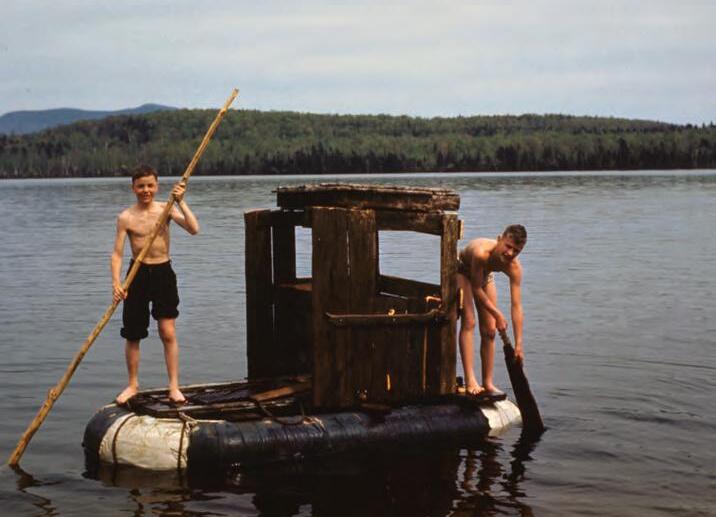

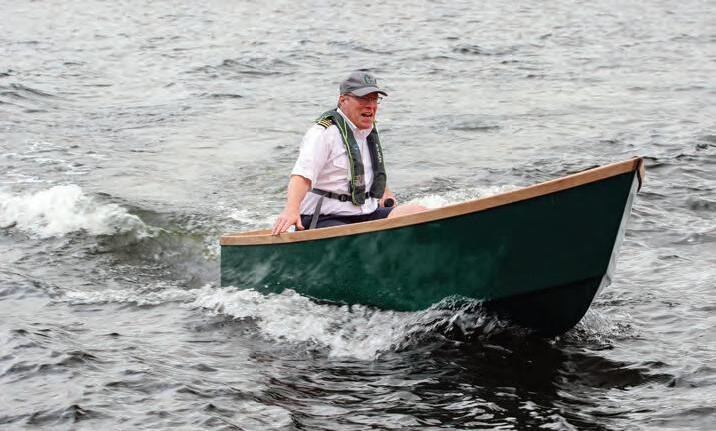


tara duggan
Tara Duggan and her husband Bo first heard about Cardigan when they were talking to a friend about their daughter’s success in her first year at Holderness School. Their friend mentioned that he wished he had known about Cardigan when his son was in middle school. “We looked it up and knew immediately it would be a fit for our son Mav due to the focus on independence, character, and a strong education with lots of access to technology,” says Tara. “Some phone calls and a visit solidified that perspective, and Mav’s first year as a sixth-grade boarding student was amazing.”
Tara says she agreed to serve on the board of trustees, “because I’ve seen the immense impact the school has on young boys’ lives. It’s an honor to get to play a role in that. As a current parent of a Cardigan boy, I recognize the importance of parental engagement in this unique school environment and social community, and I look forward to helping make an impact in the students’ lives.”
After receiving a ba and mba from Marquette University, Tara worked as a director of marketing at a corporate law firm before joining Bo in running their family business, America’s Best Remodeling. Since then, they have acquired and founded several other companies, including McDermott Excavating,
Avalon Service Center, Airborne Investments, GripLockTies, and Magneto Management.
With her numbers- and data-driven perspective, Tara is looking forward to serving on the board in the Finance Committee. She also plans to join the Academic and Intellectual Life Committee, which she says will give her an opportunity to learn more about and assist with the programming that makes Cardigan such a special place.
Tara lives in Dubuque, Iowa, with Bo and their two children, Maverick ’ () and Cooper (). Tara also currently serves on many boards and community organizations, including the Dubuque Community Y, Finley Hospital Health Foundation, Dubuque Area Chamber of Commerce, and Greater Dubuque Development Corporation.
yongmin “elvin” kim
Yongmin “Elvin” Kim lives in Pangyo, South Korea, with his wife Sowon Joo and their two sons, Patrick ’ (now at Governor’s Academy) and Richard, who we expect to join the Cardigan Class of for the – school year.
“Having watched my first son, Patrick, experience Cardigan Mountain School, I felt very content with his school journey and wanted to contribute to making this school a better place for our boys,” says Elvin. “Now

that my second son, Richard, is entering CMS, I see this as an opportunity to help the school thrive.”
Elvin earned a bachelor’s degree in business administration from Washington University in St. Louis and a master’s degree in business administration from Cornell University. He currently serves as the vice chairman of Foosung Group, a South Korean conglomerate engaged in industries such as chemical materials, refractories, automotive parts, and defense. He also holds the position of ceo at Foosung Co., Ltd., a key subsidiary specializing in fluorine compound materials used in secondary battery materials and specialty gases for semiconductors.
Prior to joining Foosung Group, Kim served as an interpreting Air Force officer, working in the Procurement Bureau of the Ministry of National Defense of Korea and engaged primarily with high-level U.S. and Korean military initiatives.
“I have been involved in manufacturing businesses for eighteen years, navigating challenges from survival to growth,” he says.
“I understand how organizations should
prepare for and maintain their readiness to expand. While I may not specialize in a single area, I can assist cms in achieving a balanced operation that fosters growth.”
Elvin is currently serving on the Equity and Belonging and Finance Committees; he is also interested in the area of strategy development.
michael marsal ’03
“I joined the board because I believe in the mission of the school,” says Michael Marsal, who is from Millbrook, New York. “Cardigan provided me with a strong foundation, and I am grateful for the role it played in shaping who I am today. Serving on the board is an opportunity to give back and to help ensure the school’s continued success for the next generation.”
Michael exemplifies entrepreneurial spirit and dynamic leadership across diverse industries. After earning a bachelor’s degree in marketing from LaSalle University in , Michael embarked on a career defined by innovation and strategic growth.
Michael co-founded Alvarez & Marsal Property Investments (ampi) in , marking a cornerstone in his professional career. ampi is a vertically integrated commercial real estate investment firm, where Michael oversees strategic growth, tenant placement, portfolio management, and acquisitions. In , he expanded his real estate expertise by founding Alvarez & Marsal Property Solutions (am-ps), which provides brokerage, data analytics, property management, and construction management services nationwide. Today, both companies co-exist as a comprehensive real estate ownership and services platform. Beyond real estate, Michael has been involved in many facets of motorsports,

founding Dyson Racing Customer Cars in , Tango Foxtrot Racing in , and mmr llc in , combining business opportunities with a lifelong passion for motorsport and automotive advocacy.
In addition to his entrepreneurial achievements, Michael has actively served in the Marsal Family Office and the Marsal Family Foundation since . His efforts have advanced philanthropic initiatives that include significant contributions to the Millbrook School, the University of Michigan’s Marsal School of Education, multiple land conservation associations, the Northeast Organic Farming Association, Teen Living Programs, and The New Group.
Michael resides on an organic farm with his wife, Alison, and their two children, Maximus (five) and Liam (three). Michael will be serving on the School Life and Real Estate Committees r
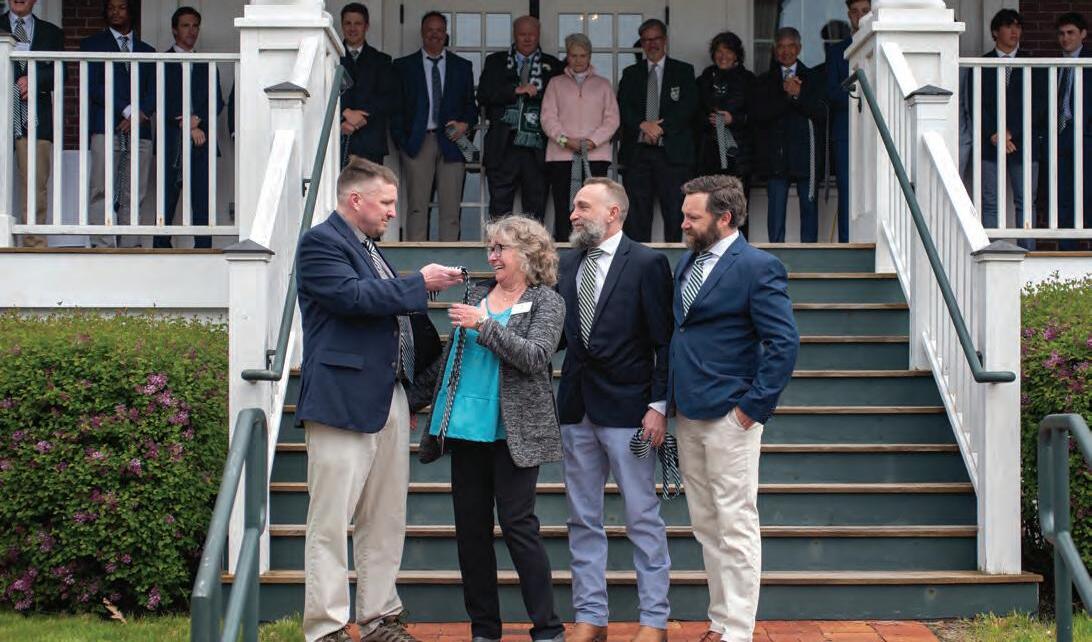
barb frazier earns honorary alumna status
Every once in a great while, someone joins the Cardigan community who transcends the bounds of “faculty or staff member” or simply “friend of Cardigan” and has, through service and commitment, earned themselves honorary alumni status. During the Commencement Alumni Tie Ceremony in May, Director of the Annual Fund and Planned Giving Jer Shipman ’ inducted one such person, Barb Frazier P’,’,’, into the Class of . He was assisted by Barb’s three sons, Matt ’, Brendan ’, and Tim ’ Frazier.
Local parents know that with proximity to campus comes an understanding that you’ll be asked to act as a surrogate par-
ent, chauffeur boys around the Upper Valley, and be a conduit for all communication from the school. You’ll be asked to volunteer for parent councils, host gatherings, and, most notably for Barb, assist with Cardigan’s auction. You don’t have to say yes to all of the volunteering opportunities, but she did. Anywhere she could help, Barb was there. And with the exception of former Head of School
Norm Wakely H’, P’,’,’ and maybe current faculty Alex Gray H’, P’,’, Barb has likely logged more Polar Bear swims than any of us.
After Tim graduated, Barb decided that Cardigan might as well start paying her for everything she had already been doing, and thus began Barb Frazier’s offi-
cial, -year Cardigan career. Over those two decades, Barb managed the Development Office database, keeping up with all gifts that came in and thankyou letters that went out, and making sure the books were in order. As for the auction, it became a family affair, and alongside her daughter Christine, the OG Mrs. Frazier saw the auction grow from raising $, in to nearly $, last year.
We will miss her, playing in the handbell choir, joining a cutthroat game of cribbage in the office, and paddling alongside her colleagues in a summer flotilla…and the auction just won’t be the same without her. We’re so lucky to have been in her orbit. r

sandy hollingsworth honored with heart of the cougar award
Cardigan celebrates the achievements of our students almost every day, but once each year, the school’s trustees gather to recognize extraordinary adult members of our community at the Heart of the Cougar Dinner. This year’s honorees were Sandra Hollingsworth, director of leadership and planned gifts, and David Gregory P’, chair of the board of trustees (more on David on page ).
Sandy, who retired in June after more than a decade of service, was recognized for her leadership in fundraising and “friend raising” efforts. Sandy came to Cardigan in from Tilton School, where she had served as the director of development. Her experience and
expertise in independent school fundraising were immediately invaluable, but more importantly, Sandy knew Cardigan— through its impact on her brother Mike McLean ’ and through the summers she spent on The Point nannying for Schuyler ’ and Penny H’ Peck.
Hired to run point on the Campaign for Cardigan , Sandy quickly built on existing relationships and maintained continuity and fundraising momentum during a time of significant transition in school leadership. Her tireless work in meeting campaign goals paid off, and during her tenure, the total funds raised grew from $. million to $. million by the close of the campaign in .
The end of the campaign, however, did not slow Sandy down. Instead, she quickly pivoted, taking on the position of director
of leadership and planned gifts. Time and time again, she connected long-standing relationships with the school’s priorities— including securing the funds to renovate the Greenwood House and Dormitory as well as construct the Peck House, new faculty housing adjacent to Greenwood; all three were dedicated in the fall of . Her leadership was also critical in securing $ million for the Gates Program endowment and growing the Heritage Society with new members since .
Sandy has been a dedicated and loyal teammate who has been a tireless advocate and friend of Cardigan. We will miss her and will have to work hard to maintain the quality of work that she’s helped us to achieve. r
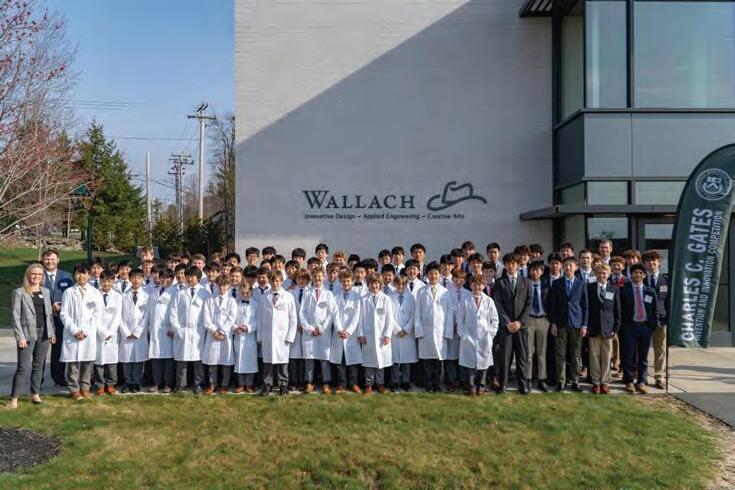
cardigan achieves milestone for the gates program endowment
Cardigan Mountain School is thrilled to announce the successful completion of the Gates Frontiers Fund (gff) challenge, marking the halfway point toward our ambitious goal of endowing % of the operating expenses of the Gates Program by .
Launched in November , the initiative sought to ensure the long-term sustainability of the Gates Program—one of the school’s cornerstone offerings— through strategic fundraising. The Gates philosophy permeates all facets of the Cardigan experience, both on and off campus. Required for sixth and seventh graders and elective for eighth and ninth graders, the Gates Program is designed to be a continuous thread throughout a student’s journey. The curriculum adapts to the latest trends in emergent instruction, entrepreneurship, and technology, providing hands-on, immersive learning experiences that set the stage for self-discovery and the development of essential skills for the future.
Over the past three years, Cardigan has secured $,, in new commitments to the Gates Program endowment—$. million in this year alone. This milestone represents a remarkable achievement for the Cardigan community, underscoring the importance of the Gates Program to Cardigan’s mission. The leadership of Diane Wallach H’, P’ and the Gates Frontiers Fund, along with the generous support of trustees, alumni, parents, and friends, has been instrumental in reaching this point.
Cardigan extends heartfelt gratitude to everyone who has contributed to this achievement. Together, we are building a lasting legacy of opportunity, innovation, and excellence for future generations. r
cardigan prioritizes people and programs in phase ii of strategic plan
Phase II of The Strategic Plan for Cardigan begins: “Our vision is to be an accessible and transformative learning community where boys are free to learn and play to their highest potential—living by shared values, guided by trusted leaders in education who challenge and

support our boys through traditional and innovative programming.”
The plan then outlines the school’s strategic priorities. Phase II (–) includes specific goals to attract and retain leaders in middle school education, improve the campus community, and strengthen aspects of the curriculum unique to Cardigan. Most importantly, it addresses the school’s advancement and endowment needs that are crucial to helping us meet our goals.
To read the full plan, go to cardigan.org/about/strategic-plan, or scan the QR code. r

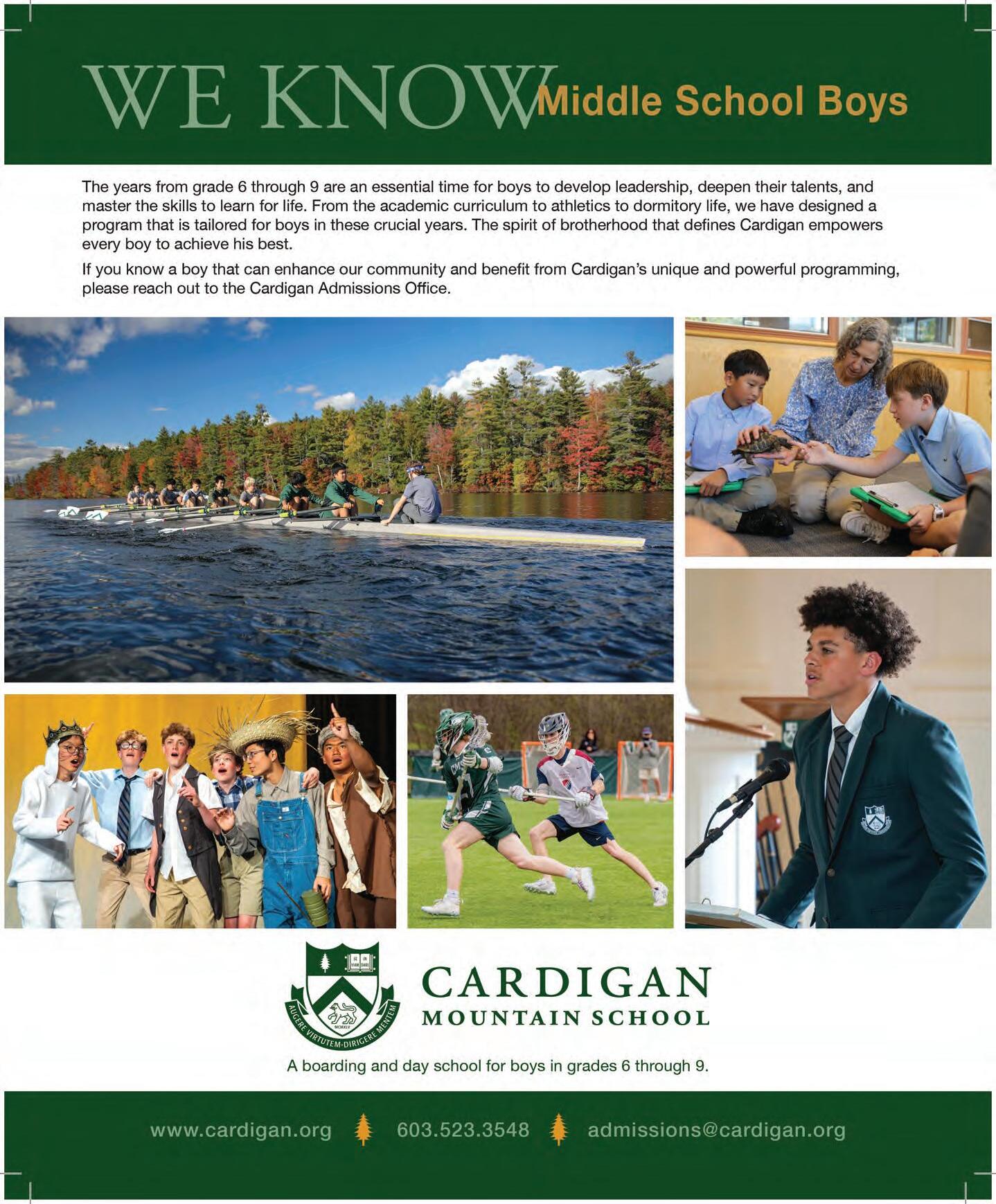
In June, we sat down with two individuals whose love for Cardigan runs deep: outgoing Board Chair David Gregory P’ and incoming Board Chair George “Jory” Macomber P’. Both are former Cardigan parents who know firsthand the transformative power of the Cardigan experience, and both have played important roles in guiding our school.
by chris adams, director of communications and marketing
David Gregory, the th chair of the board, has led with integrity, steadiness, and a deep appreciation for our mission. Under his leadership, Cardigan has continued to grow in both strength and vision. Jory Macomber brings a lifetime of experience in independent and boarding school education to the role and was a key contributor to the development of The Strategic Plan for Cardigan .
We discussed the joys—and challenges— of board leadership, as well as the strategic priorities they believe will be most important over the next four years. Their perspectives reflect not only their professional wisdom but also their personal connection to Cardigan as past parents, always putting the boys at the center of the conversation.
chris adams: When the opportunity to serve on the board arose, were you eager to say yes?
jory macomber: The first connection for me was [Head of School] Chris Day P’,’. We had worked together for a long time, our kids had attended Cardigan together, and I think he was looking for someone to join the board who had boarding school experience as an educator. Before I was on the board, I helped to facilitate a strategic planning retreat in , and the board members who were there were really inter-
esting and fun people, so that was also a draw for me.
david gregory: Well, I don’t know that I was eager at the time. I hadn’t served on any boards in the nonprofit world, so I thought it would be a unique opportunity for me to give back and to learn. My own professional background had not been as collegial or as mission-focused. And I certainly felt a connection to the school because Max ’ had such a strong first year. I thought I had the voice of a parent who had been going through some things, and who could add to the discussion and advocate for other students like him.
ca: What do you look forward to when you visit campus?
dg: I like being around the faculty, the teachers, and seeing the boys. The people, the place, and what goes on there—that feels special for me. Cardigan was a source of joy for my son, so I always like to be close to the source of that joy.
jm: My biggest connection is with the staff as well. I’ve been a boarding school employee most of my life, so I enjoy meeting with and working with them; I feel I can add some perspective from my experience that may be helpful.
ca: Do you have a favorite place on campus?
dg: I like coming around the corner of Clark-Morgan and seeing the field and a little bit of the water, and then seeing
Mt. Cardigan. On a nice day, it’s pretty spectacular and peaceful.
jm: The baseball field. I’ve always been a baseball coach, so I’ll wander out and put my feet in the grass. You can see the view of Mt. Cardigan from there.
ca: You both have talked about why your sons were successful here. If you were to boil it down to one thing, what is Cardigan’s greatest strength?
dg: Slogans matter, and our slogan of “We’re going to know your boy and love your boy” is all you need to know. It’s really that simple.
jm: That’s a great answer, David. For me, it’s being a close-knit community. When you see the laughs and the hugs and the tears among the boys and faculty—that’s real.
dg: I was able to go on the Sunset Climb the year I spoke at Commencement. Everything I needed to know, I heard on that mountaintop—the boys in tears, thanking each other and poised enough to thank the adults in their lives. I saw middle school boys find their voices on that mountaintop and say, “This place has mattered.”
jm: As a person who taught a lot of Cardigan alumni at Holderness School, I’d also say that they have their act together academically. They have executive functioning. They get their homework done. They stay organized. They know how to ask for help. They know how to contribute to class.
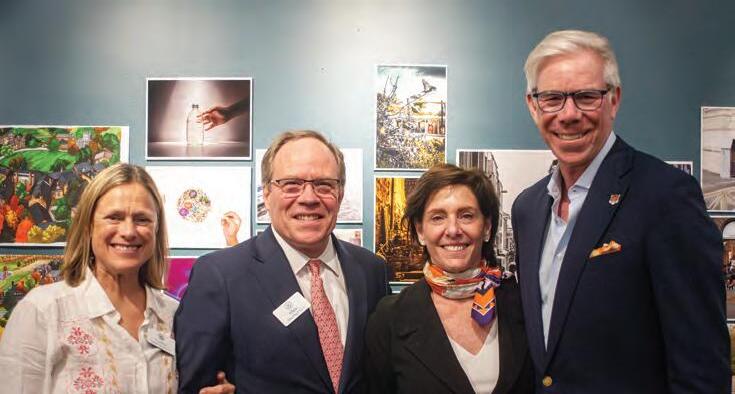
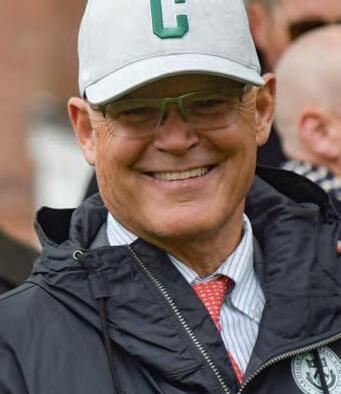
ca: David used the word “joy” earlier. Is there anything in particular about board service that brings you joy?
jm: It’s probably the other way around for me. I try to say stuff that makes people smile or laugh, so in a sense, I try to bring joy to the group. This is kind of geeky, but when people laugh together, it means that they are on the same wavelength—they have to kind of understand what is funny. I think they call it emotional congruence.
dg: This is a really good board, so it attracts good people, and there’s a good culture. So for me, it was a joyful experience getting to learn from other people and feel like I was part of the team.
ca: Is there a priority in Cardigan’s strategic plan that’s particularly important to you?
dg: I’m really committed to the idea of opening the doors of Cardigan to as many people as possible. This is such a unique and wonderful educational experience. I want it to be accessible. It’s important that we’re a place that is diverse, that’s fair, that cultivates a sense of belonging, and that is accessible to more and more people. Our commitment to raising our endowment and the amount of financial aid that is available is the most important thing to me.
jm: The strategic plan starts with people— the faculty and staff. We’re creating a place
where we can hire, develop, and retain the best faculty who are leaders in middle school education. But as David said, moving forward with these initiatives is about raising endowment. Raising funds for endowment before facilities is actually—I don’t know if the right word is “radical,” maybe “aggressive” is a better word—but to think that way is really important.
ca: What are the biggest challenges facing Cardigan?
dg: I would focus on a couple. We’re in a time of political volatility, which potentially has an impact on our international students. With about % of our student body being international, geopolitics matters.
Then, the challenges presented by artificial intelligence, social media, and the cultural influences on adolescent boys will require our best skills to adapt to how boys learn and how they can be supported.
jm: I am concerned about the expense of education. The pool of families that can afford Cardigan is shrinking. A boarding school in New Hampshire was forced to close [last spring], and I’ve recently read about colleges struggling to fill incoming classes. As David mentioned, international students may face challenges. That’s why we’ve made raising endowment for financial aid a priority. Also, how are we going to
use AI as a tool at Cardigan Mountain School? I don’t have the answer; I just know that it’s something we have to figure out going forward.
ca: David, any last thoughts to share before your term concludes?
dg: It’s been such an honor to serve. I’ve gotten much more out of it than I gave— from board members, from the faculty, from the entire team of people who taught me things. One of my lasting memories will be speaking with parents about experiences that touched their hearts. I always say that you know the mark of a good school: Is it the kind of place that makes you cry? And you know Cardigan has always made me cry tears of joy and gratitude because it’s a special place.
ca: Jory, what are some of your thoughts as your term is about to begin?
jm: With David, he has a massive commitment to equity and accessibility. It’s at the forefront of what we do, and it will remain there. I’m going to add another angle. Chris Day has been our head of school for nine years. I’m going to ask him, “What do you want your legacy to be?” My job is to help him answer that question, and then work on it—together. r
This spring, Cardigan lost one of its greatest advocates and supporters. For years, David Bradley helped lead Cardigan through decades of growth and change, establishing a strong base from which the school could grow into the innovative and forward-thinking institution it has become.
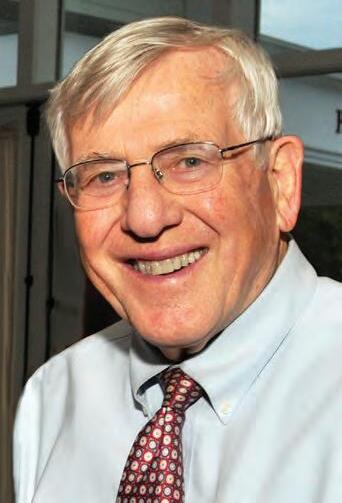
“David’s service to Cardigan was nothing short of extraordinary,” says Head of School Chris Day P’,’. “He guided this school with wisdom, integrity, and an unwavering belief in our mission. His legacy is one of quiet leadership, deep commitment, and profound impact—and Cardigan is stronger because of him.”
Dave grew up in West Swanzey, New Hampshire, graduated from Keene High School, and attended Dartmouth College on a Naval rotc scholarship. After serving for three years as a naval officer, Dave earned his JD from Harvard Law School in . He then returned to New Hampshire and joined the Hanover law
firm now known as Stebbins Bradley, where he remained for his entire legal career. By the time he retired in , he was the longest-practicing attorney in Grafton County.
Deeply committed to public service, Dave served on several school boards and was a longtime member of the Hanover Rotary Club (since ) and Hanover Improvement Society (since ). He was elected to the New Hampshire House of Representatives in , then to the State Senate in , where he served three terms. He was also a devoted supporter and trustee of the Norris Cotton Cancer Center and a spirited performer in the doo-wop group The Charades.
Dave began his service to Cardigan in , and advised Cardigan on everything from finding an acceptable source for drinking water () to writing a non-discrimination policy (), from establishing Cardigan’s responsibility for the maintenance and control of the Canaan Street Lake Dam () to assisting in the creation of a partnership between Cardigan and the Gates Frontier Fund—which led to the founding of Cardigan’s signature Gates Program (). He was also instrumental in stewarding the dissolution of the corporation and establishing the Cardigan Board of Trustees as the sole governing board of the institution. He reviewed countless employee contracts, changes to the bylaws, and real estate proceedings, tirelessly providing Cardigan with sound
legal advice as the school established itself as a leader in educating middle school boys.
Dave’s contributions extended beyond legal advice. His son David, Jr. was a member of the Class of , and in , he and his acapella group, The Charades, sang for Cardigan’s annual auction. He was a tireless advocate for increasing the school’s scholarship fund and was the first to raise his hand in support of including women on the board of trustees.
In , Dave was recognized for over years of service with the Heart of the Cougar Award and an honorary membership into the Class of . A Chronicle article from the same year noted, “Thanks in large part to his steadfast support, leadership, and guidance, Cardigan Mountain School is as organizationally and financially strong as it has ever been.”
It is with deep gratitude and appreciation that we remember this man who has meant so much to the Cardigan community. r

Consider becoming a member of Cardigan’s Heritage Society.
The Heritage Society recognizes those who make a bequest or planned gift to Cardigan. Their generosity expands opportunities for future generations of students.
With gifts of all sizes, members of the Heritage Society honor and sustain our mission, inspiring others to support our school. Like the school’s founders, theirs is a legacy with continuing impact. We are honored to represent their philanthropic priorities in perpetuity, and are deeply grateful for the opportunity to assume that trust and responsibility.
For more information about why our Heritage Society members choose to support Cardigan Mountain School, or how to do so yourself, visit cardigan.org/giving/planned-giving or contact Jer Shipman at jshipman@cardigan.org or 603.523.3601.
Please note: Cardigan Mountain School does not provide tax advice. For your gift planning, please consult a financial advisor to discuss what will work best for you and your family.


by jer shipman ’00, director of the annual fund and planned giving “Success is a lousy teacher; it seduces smart people into thinking they can’t lose,” wrote Bill Gates in in The Road Ahead
And he isn’t alone in recognizing the value of misfortune. Winston Churchill is credited with the quote “Never let a good crisis go to waste,” and Chief Justice John Roberts, Jr. P’ echoed this in when, at Cardigan’s Commencement, he wished the senior class bad luck, betrayal, loss, and loneliness, after which he said, “…and whether you benefit from them or not will depend upon your ability to see the message in your misfortunes.” Gates, Churchill, Roberts—and Cardigan teachers and coaches through the ages—all know that not only is failure an opportunity for growth, but it is also an essential ingredient in developing resilience, compassion, and character.
Three alumni from three different generations of Cardigan share similar stories, all of which point back to lessons learned in the classroom, hockey rink, dorm, dining hall, and baseball diamond, and they are all the same. Cardigan is hard—that’s on purpose. Eventually, all students will stumble and fall, and at the bottom, they’ll find a community praising their effort and encouraging them to get up and try again. In a nurturing environment, and with the right mindset, these failures may be the most valuable experiences of their Cardigan careers.
Teddy McNaught remembers many moments in his educational journey and early career that could have broken him. The hard-learned lessons, however, not only made him more resilient, they also made him more empathetic to the people he represents.
“Attorney McNaught, your argument is actually making it worse for your client,” a judge interjected in a case early in Teddy McNaught’s legal career.
“Thinking about it now makes me laugh,” says Teddy, “but, at the time, it wasn’t funny. All defense attorneys experience humiliation at some point.
Fortunately for me, it wasn’t the first time, and it didn’t break me. I had felt it before, and I knew I would be okay—in fact, better for it.”
Teddy McNaught came to Cardigan for eighth grade in the fall of . He was years old, away from home for the first time, and surrounded by kids who were
able to challenge him at everything. Being away at that age forced him to develop a kind of independence that most kids don’t develop until college. And he learned quickly how to solve his own problems.
“I got in a fight with my roommate in probably the first week of school,” he says. “We were two hard-headed kids in a small,

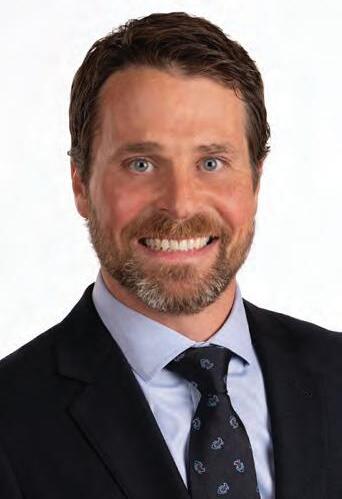
Teddy McNaught in —when he earned the William Knapp Morrison Award at Commencement—and in .
shared space, and we clashed. I did not win that fight. And that could have been the end for us, but it wasn’t. We were teammates in the winter. We had to figure out how to get along, and that’s what we did. We even chose to room together the next year.”
Teddy also recounts receiving a grade of A in typing class. (In the ’s the effort scale was inverted, so by today’s metrics that would equate to an A—high achievement but abysmal effort.) Typing wasn’t a big deal for Teddy, but the grade had big consequences, keeping him off honor roll and denying him some privileges. It was a wake-up call.
“There’s a pride in figuring things out and solving your own problems,” Teddy says as he reflects on being allowed to struggle and flounder and face the consequences.
And it wasn’t just in academics. He remembers taking a penalty shot in a hockey game against some of his old teammates from Maine. To add a bit of drama to his moment, Teddy took a couple laps around the circle before collecting the puck and scoring. He thought it was an amazing performance, just like Rob Lowe’s character in Youngblood. Coach Andy Noel P’,’, however, did not and gave Teddy some very direct feedback about what would happen if he ever saw showboating like that again.
“It was good feedback. Coach Noel was right,” Teddy admits. “True pros don’t act like that. That’s what failure at Cardigan looked like: not shame, not damnation, but an opportunity to learn. We were accountable, took responsibility, and we were better for it.”
That’s what failure at Cardigan looked like: not shame, not damnation, but an opportunity to learn. We were accountable, took responsibility, and we were better for it.
– teddy mcnaught ’94 –
And he was. By the end of his Cardigan career, Teddy was a varsity athlete, and he made his way back onto the honor roll. He was a student leader and member of njhs, Green Key, Glee Club, and student senate, and he got into his top choice secondary school, St. Paul’s, where he continued to excel.
His future was bright, until a bad decision during his senior year led him to withdraw in the middle of the college application process. All of his top college choices rejected him, changing the course of his life. But it’s part of his story and made him who he is today, which is, if anything, a more credible, relatable, and empathetic defense attorney.
“People don’t call me when things are going well,” he says. “They call when they’ve messed up badly. When lives are coming apart and they’re looking for someone who can help them hold it together, I am effective in part because I understand firsthand that people make mistakes and sometimes those mistakes are big.”
When thinking about failure, the tired truism “If at first you don’t succeed…” comes to mind, but in the courtroom, the second half of the adage “try, try again,” doesn’t really apply. An adverse verdict is difficult to undo. “I lost my first three jury trials, , , guilty, guilty, guilty, and I was in a pretty dark place,” he says. “They were small cases but just devastating to a new defense attorney. That said, they revealed to me so many things that I didn’t understand about the process, and through that, I began to find my own voice in the courtroom. Nothing is more persuasive than authenticity.”
Fast forward to today, Teddy and his team try to get their failures in before trial. They test different strategies, examining a case from every angle. Fellow attorneys are invited to pick his theories apart. Those pre-trial “losses” are ultimately what help
him build the best cases. He continues, elaborating on gaining experience, maturity, and credibility in front of the judge and jury: “Plus, there is no such thing as being over-prepared. You have to know your case better than anyone. If you establish yourself as the person in the room who knows the most, the audience (jury or judge) will be more inclined to trust you. From that knowledge, gained through preparation, you can argue with confidence while still being humble.”
Still, some rulings just do not go the way Teddy hopes or expects.
“It can take an emotional toll,” he admits, “but experienced lawyers understand that losing is part of the job. If I know that I have done everything I possibly can, then I can sleep at night…There is no such thing as a perfect trial. Even when I win, I will replay the case in my head and find things I wish I had done differently.”
Now, as a father as well as a lawyer, Teddy thinks about this all the time. “How do we raise kids who can take a hit and keep going? How do we raise professionals who don’t crumble when things go sideways?”
The answer, he thinks, starts young at places like Cardigan, where failure isn’t feared but folded into the fabric of the education—where faculty like Andy Noel can call you out for peacocking on the ice and still make you feel like you belong. Where a bad grade isn’t a sentence—it’s a signal.
“Society today doesn’t leave a lot of room for failure,” Teddy says. “Kids are monitored, optimized, tracked toward outcomes. Risk-taking is discouraged. But at Cardigan, even in the early ’s, there was space to mess up, to push boundaries and come back from it. We weren’t perfect kids. We fought, we tested rules, we got in trouble. But we also learned to apologize, to forgive, to grow. I didn’t know then how
foundational those moments would be. I just knew I was learning.”
And so, armed with what he proudly calls a “body of failure,” and more “experience” as he gestures toward some gray hair coming in, when someone walks into his office thinking their life is over, Teddy responds truthfully saying, “You’re going to be okay. I’m going to help you.”
Today Teddy runs a successful criminal defense practice in Boston’s North Shore. He started his career in law working as a clerk, paralegal, and investigator, began practicing in , and opened his own firm, Edward A. McNaught III, P.C., in . He received his BA from St. Anselm’s College and his JD from Suffolk University Law School. He has litigated cases in Juvenile, District, Superior, and Federal Court, and he sits on the Board of Directors for the Essex County Bar Association r
When Renzo Martinez started elementary school, he was gripped by a paralyzing fear of public speaking. But with a little help from his father and a shortened but pivotal seventh-grade year at Cardigan, Renzo learned to see failure as a critical part of the learning process.
Renzo Martinez still remembers his first school presentation in vivid detail. It was a first-grade social studies class, and he was supposed to recite a few facts about France in front of his classmates, teachers, and a handful of parents who came to watch. When his moment came, he froze. Instead of saying anything, he passed the microphone to his closest classmate and ran off stage—and his fear of public speaking didn’t soon subside. For years afterward, the idea of sharing in front of an audience brought only anxiety, embarrassment, and vocal paralysis. “It started as something mental but got worse…a physical reaction,” Renzo explains. “I cried, I shook, I had panic attacks, and I would do anything to try to get out of presenting, even faking illnesses.”
Renzo’s parents, supportive but baffled by his inability to speak, tried everything they could think of—mirror practice, sunglasses to block out the audience, self-recordings, affirmations, even therapy. But nothing worked. “I had resigned myself to my fate,” he says. “I didn’t even feel like it was something I wanted to overcome.”
Maybe this is my reality. Maybe this is just something I cannot do, he concluded.
But his father refused to give up. A turning point came in sixth grade, just
before Renzo enrolled at Cardigan. Ahead of yet another dreaded presentation, his father, tired of watching him walk away from the mic, gave him a new kind of pep talk: “Just say the words. It doesn’t matter how it sounds, it doesn’t matter if you cry, it doesn’t matter how long it takes. No matter what happens, just don’t leave the stage until you’ve said the words.” Renzo did just as his father suggested. It wasn’t smooth or polished, but it was progress. “That was the first time I emitted sound in front of a crowd,” Renzo says. “...And from that moment on, things began to change.”
A year later, Renzo arrived at Cardigan for his seventh-grade year. He was only on campus for six months due to the covid interruption in the spring of , but the experience had a lasting impact. “It was my first time living away from home,” he said, “first time meeting kids from all over the world, first time standing up in class speaking a language that wasn’t my own.” Cardigan challenged Renzo every day, and he explained that it helped him become more comfortable with discomfort. “There was pressure at Cardigan, but pressure is a privilege,” he says, referencing a quote by tennis great Billie Jean King. “The theme that year at Cardigan was Respect the Climb, and I still think
about that. I made it my personal motto. Challenges and fears like public speaking became opportunities—obstacles to summit. It was the first time I felt like I was growing independently.”
He credits faculty members with reinforcing his growth mindset: “In peaks class, we didn’t just do assignments. Mr. Caprow had us journal and reflect.” He recalls that the school didn’t expect perfection—it encouraged effort. “It wasn’t about always succeeding. It was about engaging, trying, and improving…and after Cardigan, everything else felt easier.”
Back home in Mexico, Renzo’s new confidence began to complement his other qualities that had gone unnoticed in his silence. Teachers and peers soon learned that his English was superb; he was intelligent, funny, thoughtful, persuasive, and mature beyond his years. During his freshman year, a teacher recommended he join a public speaking program called Líderes Hablan (Leaders Speak)— something he never would have imagined doing willingly. But Renzo saw the value in the new challenge, and he was ready to meet it.
The format of the program is intentionally demanding: a group of twenty students each have to write and deliver a speech
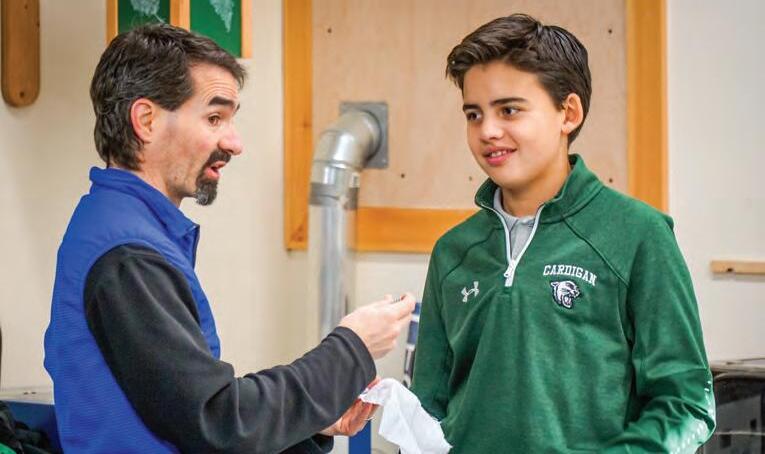
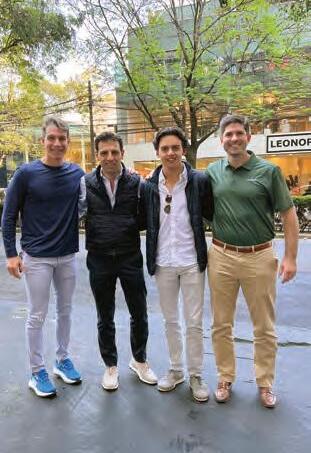
with just minutes to prepare. The speech has to be at least five minutes long, and the order of speakers isn’t revealed until the moment their names are called.
“They give you the topic, you write your speech from scratch, and you go up and deliver it live, no notes,” he says. “It is a trial by fire. You can’t possibly memorize your speech, so you must learn to speak extemporaneously. I still get nervous but not like I used to. Nerves are a necessary part of it. If I’m nervous, it means I care, and that will be reflected in my presentation.” Still, he admits that it isn’t always easy, and running out of material before five minutes can be excruciatingly awkward.
“Honestly, I’m kind of glad that I was so bad at public speaking,” he reflects. “If I had been okay, or just good enough, I never would have made the effort to improve so dramatically. The countless failed attempts are what made me what I am now.”
Following Líderes Hablan, Renzo—who had both become confident behind the mic and developed a taste for getting out of his comfort zone—ran for a seat on the
student government and won. He served his school as a senior leader, and one of his responsibilities—which would have undone him just a few years earlier—was delivering daily announcements to hundreds of peers and faculty members. He did it without hesitation.
His journey from stage fright to selfassurance didn’t come through overnight transformation but from years of incremental growth, and Renzo isn’t afraid to talk about all the failures along the way. In fact, he sees them as a critical part of how he learns. “I’ve felt more pride in moments when I’ve failed but gave it my all than in times when I didn’t even try,” he says. His college application process is a recent example. Out of ten applications, he was accepted by just three schools. “That’s a percent rejection rate,” he says, “but I’m proud of how I approached the process; I didn’t hide from it.”
Though Renzo’s Cardigan experience was brief, he regularly reflects on what the school gave him. Now preparing to begin college in the U.S. at the University of Massachusetts Amherst, he’s bringing
those lessons with him. Whether it’s in academics, leadership, or public speaking, he focuses less on the outcomes and more on consistent effort. He’s also mindful of keeping things in perspective:
“There’s always going to be someone better than you. That doesn’t mean you stop trying. It means you keep learning.”
“I’m grateful for the failures and the experiences that pushed me,” he says.
“Even when they were uncomfortable… especially when they were uncomfortable.” r
Eddie Dix has had his share of setbacks, but, ever the optimist, he doesn’t let anything keep him down. From reframing what was once called a learning disability to turning obstacles into stepping stones, Eddie’s life is a testament to resilience. After conquering his fear of failure, every experience—good or bad—became just another door opening.
In the early spring of , Eddie sat alone in his car after locking the doors at his first business—a physical recovery and rehabilitation clinic in Boulder, Colorado— shuttered due to the pandemic. covid had upended his dreams, and he wasn’t sure what would come next.
“When you go through something like that, there are different phases,” Eddie reflects. “The first is gut wrenching, feeling like, ‘Oh, no! I just messed up my whole life.’ And some people get stuck in that moment, fixating on the failure and carrying it like a burden and making any advancement impossible. Then you get to a point where you think, ‘I don’t have to carry this weight,’ and once you realize that, you’ll be able to see the opportunities in front of you.”
For Eddie, that empty parking lot in Boulder wasn’t the first time he had felt alone, defeated, and uncertain about where he belonged in the world. As a young student with severe adhd, he struggled in the classroom and often felt like the system had already written him off. His parents were teachers at Andover, and growing up surrounded by traditional academic excellence didn’t help his
self-image. His sister soared—Ivy League, cum laude, and an M&A executive. Eddie, in contrast, was the student whom teachers described as “distracted.” He recalls, “Sitting in class was physically painful for me.” At the time, success felt just out of reach.
That changed when he arrived at Cardigan. For the first time, a school felt like the right fit. The students were welcoming, the teachers engaging, and the structure didn’t punish his learning difference; it gave him space to figure it out and harness it for good. At Cardigan, success meant more than grades. Athletics and dorm citizenship carried equal weight. Being “smart” didn’t mean sitting still all day; it meant thinking critically and contributing to the larger community—and that’s where Eddie excelled.
Cardigan never labeled him for his adhd. He wasn’t sidelined or held to lower standards. Like everyone else, he was expected to lead. Sitting at a desk still wasn’t easy, but Eddie was socially gifted and formed strong relationships with his teachers, coaches, and peers. He earned leadership roles, including floor leader and captain of both varsity hockey and base-
At Cardigan, being “smart” didn’t mean sitting still all day; it meant thinking critically and contributing to the larger community—and that’s where Eddie excelled.
ai, just like adhd, is often mischaracterized or feared, but when understood and harnessed, it’s a gift.
eddie dix ’07

ball. Amidst all the moving parts of daily life at Cardigan, he began to see his fast, scattered, imaginative way of thinking not as a liability but as a strength. That realization shaped everything that came next.
High school brought more ups and downs, and Eddie’s confidence wavered; so rather than go to college immediately, he chose a military path: “It was about reclaiming control. I knew I had the social skills to get by, but I wanted to prove—to myself and others—that I could be academically disciplined too.”
The Marines gave him structure and grit—and time to think. While others partied, Eddie studied. He worked out, earned an associate degree online, and achieved a black belt in Marine Corps Martial Arts. The military wasn’t meant to be a career; it was a crucible—a place where he could shape himself into the man he wanted to be. He recalls a line from Walden, “The mass of men lead lives of quiet desperation,” as a stark warning. He refused to be typecast or live down to society’s expectations. He was determined to build a life defined by “purpose, energy, and inspiration.”
Eddie’s military experiment worked. By the end of his service, he was physically and mentally strong, focused, and ready. He returned to school, studied physiology and biochemistry at the University of Arizona, and dove into medical sales, combining his new academic credentials with proven street-smart people skills. Success came quickly, and his ambitions grew. When the opportunity arose to open his own physical rehabilitation clinic, he took it, quickly building a client list that included college and professional athletes. The future looked bright.
And then came covid and lockdown.
“Closing that business was humbling, and moving back in with my parents felt like a personal defeat,” he remembers. “But at the same time, I felt free. I thought, ‘I have this whole new, clean slate and the possibilities are endless.’”
Embracing a new direction, Eddie moved forward, unencumbered by the past and focused on what was next. He accepted a new job, transitioned from orthopedics to oncology, and soon became fascinated with the role data plays in diagnostics. Once again, his learning “disability” became a creative asset,
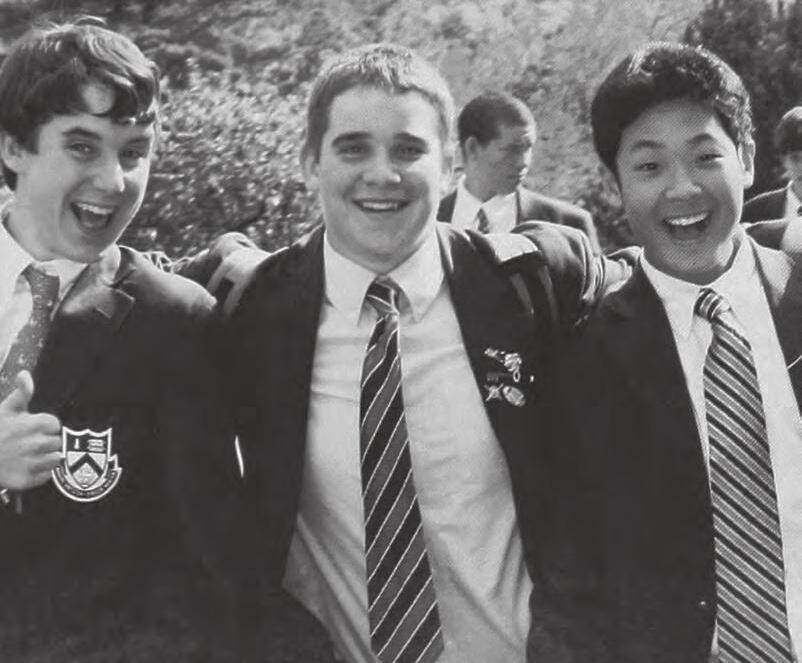
allowing him to imagine what others couldn’t.
Eddie recounts his a-ha moment in a cab on the way to a football game with his fiancée. Stressing about an upcoming sales call, he lamented with frustration about the lack of a better system for sales reps to gather intel before meetings. As he pieced together his own research from unhelpful and incongruent sources, he exclaimed, “Why can’t we just use AI for this?!”
“Every week, I found myself burning countless hours sifting through spreadsheets, crm exports and physician profiles just to figure out who to call, what to say, and when to engage,” he says. “I knew I could build a better option.”
Recognizing his insight and potential innovation, his fiancée suggested they skip the game and start building something. They handed their tickets to the
driver, headed home, and once again, Eddie dove into business ownership.
In October , he founded RepPrep.ai, a platform that uses artificial intelligence to generate analytics and insights for medical sales representatives, helping them prepare more efficiently and effectively.
“The software doesn’t replace reps—it enhances them, using tools I never could have imagined as a restless kid bouncing in the back of a classroom,” says Eddie. “AI, just like adhd, is often mischaracterized or feared, but when understood and harnessed, it’s a gift. Our service transforms raw, messy data into clear insights.”
Looking back, Eddie says he’s grateful. Grateful for Cardigan. For the Marines. Even for the struggles—for adhd, and for the business that failed. Those experi-
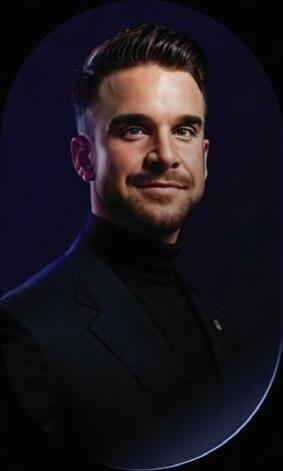
facing page and this page:
of Eddie Dix ’ from the Blaze, and more recently in .
ences led to new opportunities, and none of the setbacks were wasted.
In fact, he’s had so many course corrections, he doesn’t even think of them as failures anymore. He calls them “plot twists.” And with each new turn comes another exciting chapter.
“I’ve learned that life isn’t pass or fail,” he says. “It’s a series of experiences and opportunities. Success is just on the other side of failure. No matter what it is that I go through, any negative experience that seems soul-crushing at the time always leads to something incredible and amazing.” r

1: Joe Dodi ’ and Director of the Annual Fund and Planned Giving Jer Shipman ’ connected at the Penn Club in New York City at an alumni networking event. Joe led a conversation for young alumni on finance; 2 and 3: Ron von Jako ’ and Ramon Ramos ’ were the keynote speakers at our Northern New England Independent Schools joint networking events in Boston and New York City. Ron continues to be a pioneer in the field of neuroscience and minimally invasive surgery. Ray is a professor at St. John’s University and continues to pursue his passion for music, recently joining a new band Black and Yellow (@blackandyellowband); 4: Justin Lillie ’ and Mountain Bike Program Director Doug Clark connected at Powder Ridge in Connecticut during the Eastern States Cup Enduro; 5: Cardigan Assistant Athletic Director Julia Ford, Russ McIlvain ’, and Assistant Director of Secondary School Counseling Cynthia Day met at a Holderness lacrosse game in May; 6: Francisco ’ and Fernando ’ Lopez-Guerra, who visited campus in May, caught up with Director of Advancement Joe Burnett ’ and his son Rio ’; 7: Inigo Castillo ’, Gerardo FloresCastro ’, and Luis Fernando Dosal ’ connected at the home of current Cardigan parents Leonel Schofecker and Ana Maria Arsuaga. All three alumni will have sons at Cardigan this fall; 8: In June, Matt Ramsby ’, along with former faculty members Jeff and Marie Hicks, visited with Beverly Wakely H’ in Falmouth, Maine; 9: Andrew Kebalka ’ reported from the Boston Marathon: “Just wanted to share with you a cool picture of Charlie Day ’ and me running up Heartbreak Hill during this year’s Boston Marathon. I didn’t

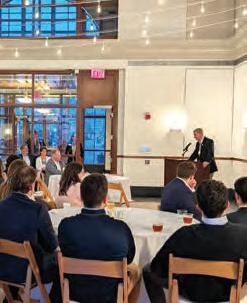
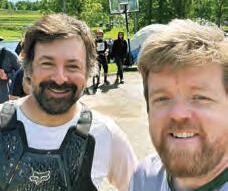
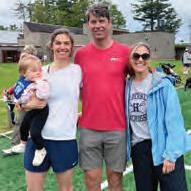
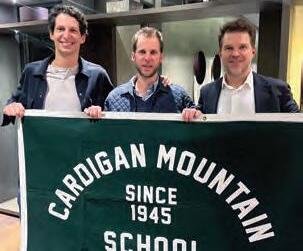
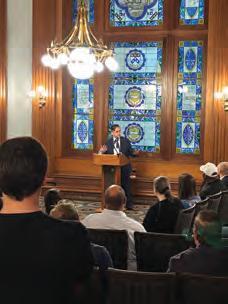

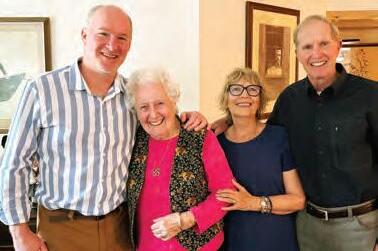
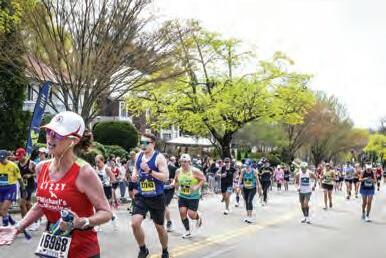

know we crossed paths until after the fact. Charlie was running for Spaulding Rehab and I was running for Breakthrough TD (as a type diabetic myself). I am in front in blue; Charlie is just behind me”; 10: Tommi Runsamo ’ shared a photo of himself and the “Old Boys” from the ’s from a Cardigan vs. Finland game. from left: Ari Vaisanen ’, Mikko Satama ’, Tommi, Kai Hirvonen ’, and Henri Tahvanainen ’; 11: Jamie Kim ’ and Brian Hwang ’ recently visited campus for the first time since graduation and met up with Director of Off-Campus and International Programs Ryan Sinclair. Brian is an architect based out of Seoul, South Korea, and Jamie has been working in real estate in New York City. This fall he’s planning to relocate his office to Singapore; 12: Jer Shipman ’, Ben Gill ’, Director of Alumni and International Relations Pablo Rocha Vázquez, and Director of Secondary School Counseling Kris Langetieg reunited at Cardigan. Ben is living in Haverhill, Massachusetts, and working for Audi in southern New Hampshire. This winter he’s planning a trip to Japan where he’ll reconnect with fellow alumnus Shinichiro Sato ’; 13: Josh Jordan ’ reconnected with former Head of School Jamie Funnell H’ at a Groton hockey game; 14: Cardigan Director of Spiritual Life Cheryl Borek and Diego Zesati Icaza ’ connected at Logan Airport. Diego is living in Boston and working in finance; 15: Neil McCalmont ’ recently returned to The Point and connected with Director of Auxiliary Programs Matt Rinkin; 16: Ethan Kreuzburg ’ reunited with Cardigan’s Wrestling Team this
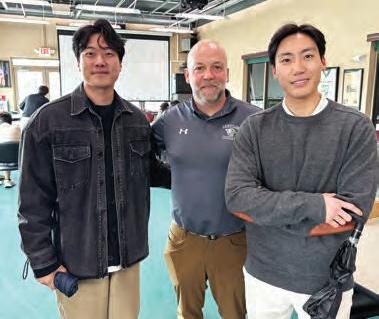
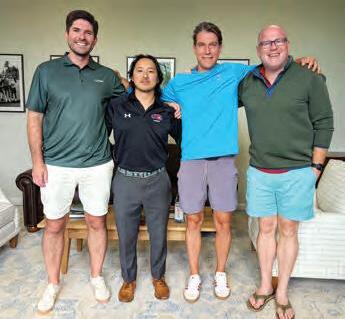
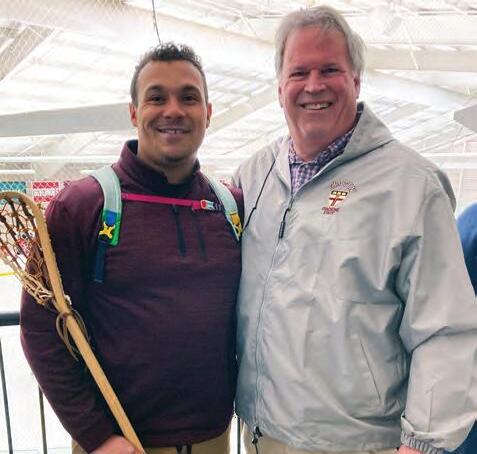

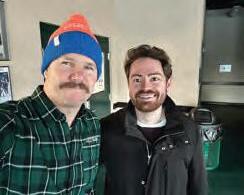
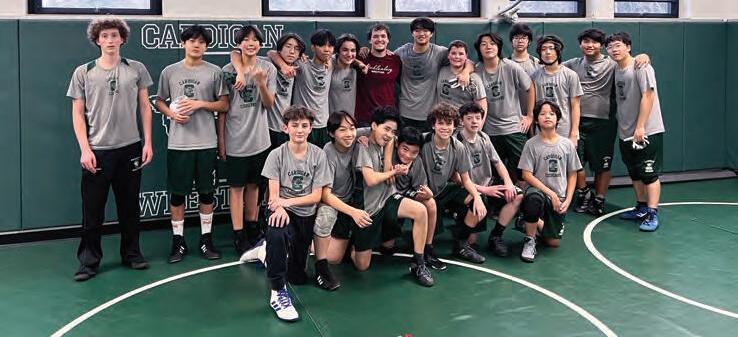
winter and helped coach alongside Head Coach Hal Gartner; 17: Max Gilbert ’ and dad Andy joined old friends and alumni at Cardigan Commencement this spring; 18: Ryan Sinclair caught up with Adonis Williams ’ at the Rectory School. In the fall of , Adonis will join the Cardigan faculty, teaching math and coaching the Varsity Basketball Team; 19: Anthony Scaramucci ’ is writing a movie—a coming-of-age story about kids at a boarding school—and was on campus for inspiration and to scout potential locations. He toured campus with Pablo Rocha Vázquez and Jer Shipman ’; 20: Gianluca Audia ’ ran into Pablo Rocha Vázquez in Hanover, New Hampshire, where Gianluca is a student at Dartmouth College; 21: William Li ’ and Bobby Jiang ’ attended Groton-St. Mark’s Day in March; 22: James Liu ’ stopped to chat with Assistant Director of International Relations Yuki Burnett and her daughter Hannah after an Exeter vs. Cardigan basketball game; 23: Head Nordic Coach Morgan Wilkinson met Clem Mikheev ’ at a Holderness Nordic ski race; 24: Pablo Rocha Vázquez and former School Leader Nate Watson ’ met on campus in November. Nate is currently a student at Deerfield Academy; 25: Jason Lee ’, Josh Kim ’, and Kris Langetieg reconnected at St. Paul’s School; 26: Jinwoo Ham ’, Colin Smith ’, and Wes Berger ’ caught up with Julia Ford; 27: Ramsey Madan ’ returned to campus for a visit with his younger brother Piers ’ and coaches Doug Clark, Alex Gray H’, and Julia Ford. In his freshman year at Berkshire, Ramsey
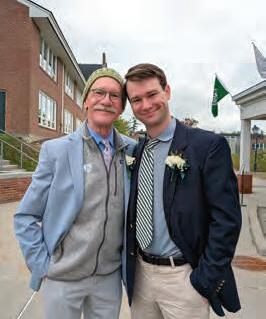

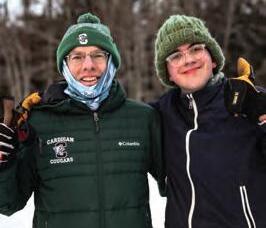
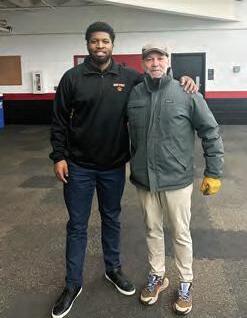
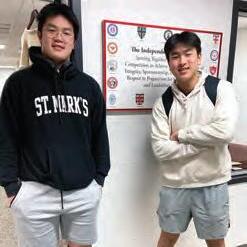
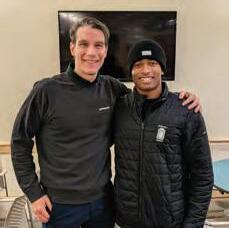
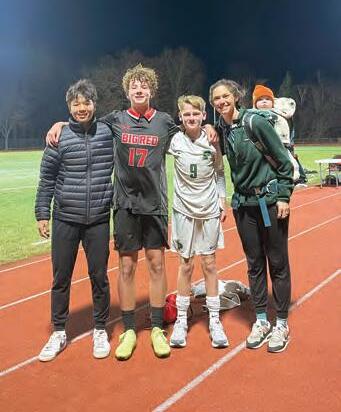

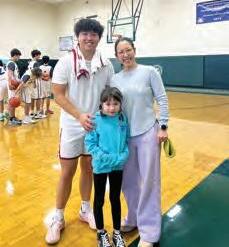
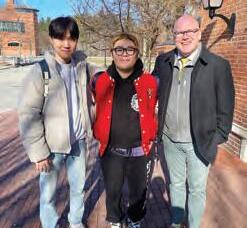
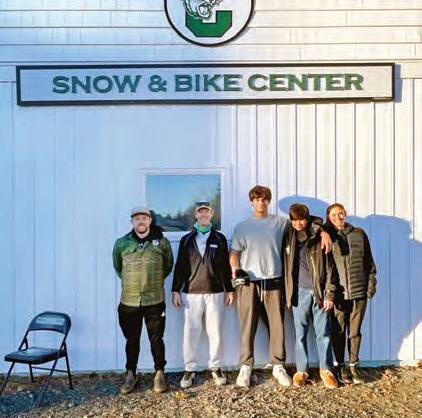
Christian Moore ’ made his major league debut with the Los Angeles Angels on June in Baltimore and got his first hit, a triple, a few days later against the Yankees in Yankee Stadium with his family in the crowd. He hit his first home run on June at home in Anaheim against the Houston Astros. Congrats, Christian! Photo by John Cordes/Icon Sportswire via Getty Images


rowed in the first boat, along with his older brother Sebastien ’, who is headed to Holy Cross in the fall of ; 28: Aidan White ’ graduated from the United States Military Academy at West Point on May , . Aidan is a Second Lieutenant in the rd Infantry Division, st armored Brigade Combat Team at Fort Stewart in Georgia; 29: Landon Beattie ’ became the first Mascoma Valley Regional High School player to celebrate senior night as a member of the Lebanon-Stevens-Mascoma co-op. Landon made sure to make the most of his senior night. Not only did the Raiders get the win for the Class of , but Landon also scored and had an assist to top it off!; 30: Joey Huang ’ reconnected with classmate and former School Leader Terry Langetieg ’ and his dad Kris this past winter; 31: Mac Wang ’, Kinno Zhu ’, Ron Zhu ’, and Rio Burnett ’ met up in Boston in November ; 32: Morgan Wilkinson at a Holderness Nordic ski race with Ben Lewis ’ and Hudson Schmidt ’; 33: This winter, Terry Langetieg ’ visited campus to participate in a wrestling practice; 34: Elan Abramson ’ and Head of School Chris Day caught up at a recent Cardigan gathering; 35: Charlie Kaplinski ’, with Thomas Choi ’, Simon Manners ’, and Jinwoo Ham ’ at Boston Logan Airport over Thanksgiving break; 36: JP Villarreal Garcia ’, Dario Martinez Erhard ’, Ian Corona Sanchez Botello ’, Gilberto Villarreal Garcia ’, Eugenio Ramonfaur Gracia ’, and Rio Burnett ’ on campus during Commencement on May , ; 37: Mitchell Ricard ’ and Juno Cowans ’ at Camp Timanous in Raymond, Maine; 38: Noah Humphrey ’ and Hal Gartner reconnected after a Brooks football game; 39: Alex Wang ’, former Cardigan Latin teacher Charlotte Berry, and Johnny Xu ’ connected at the University of Chicago.



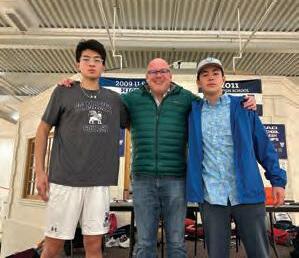


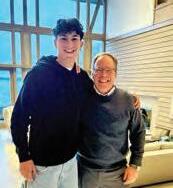

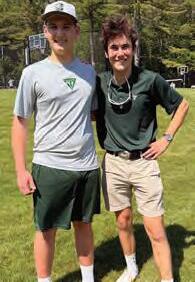

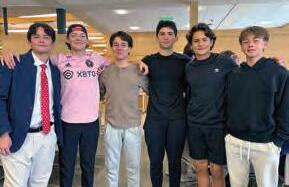
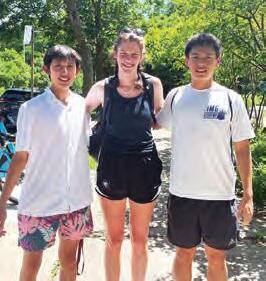

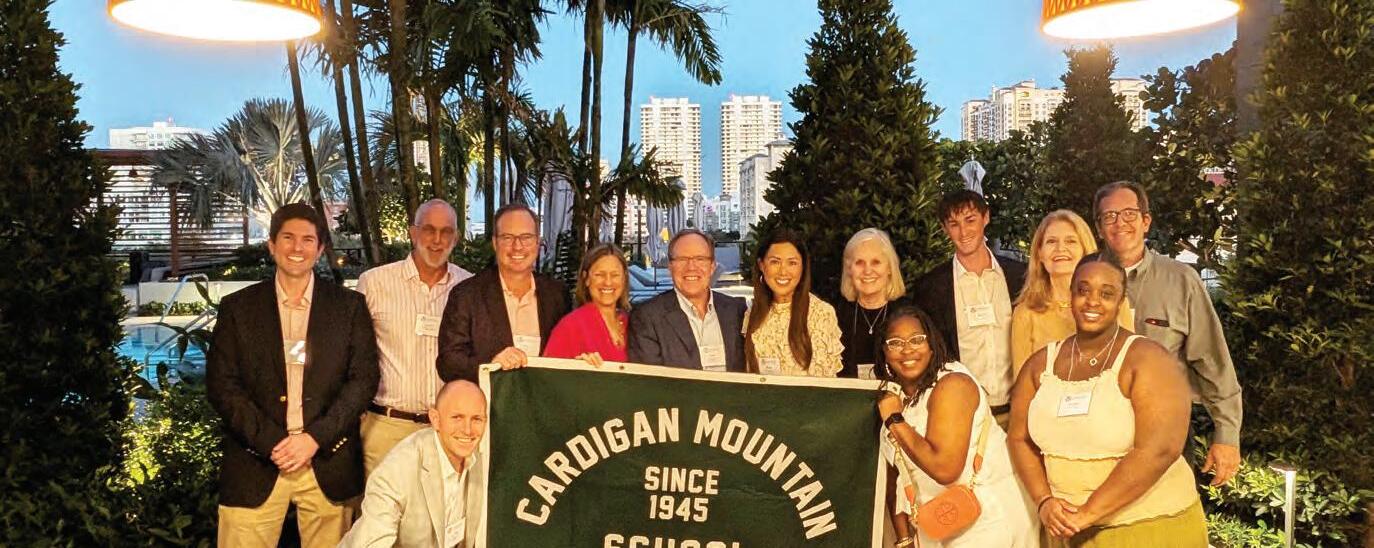
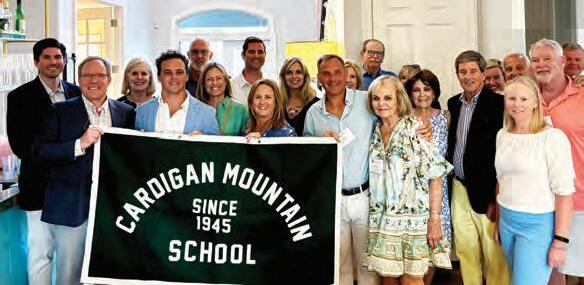

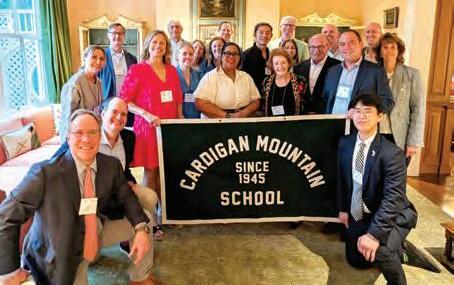
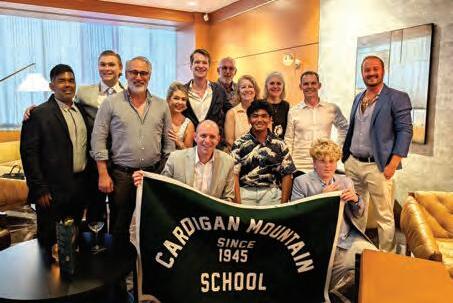
Friends of Cardigan gathered up and down the East Coast this spring to celebrate all things Cardigan:
. Palm Beach, hosted by past parents Brooke and Chris Ooten
. Naples, hosted by past parents Chris and Dana D’Orio
. Washington, DC
. Philadelphia Club, hosted by Ken Klaus ’
. Miami


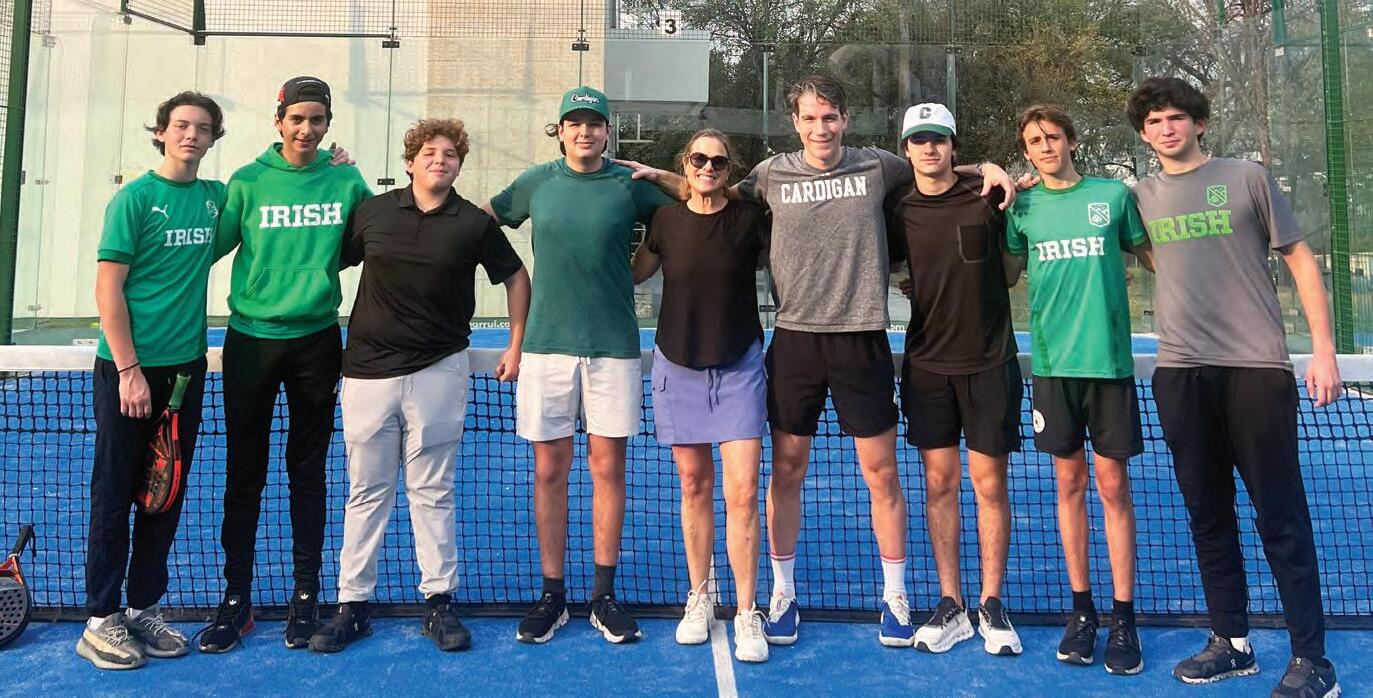
Head of School Chris and Cynthia Day and Director of Alumni and International Relations Pablo Rocha Vázquez traveled to Mexico in February to catch up with alumni and current and future families:
. Alumni in Monterrey
. Future students in Monterrey, hosted by current parents Gilberto Villarreal and Daniela Garcia
. Future students and their families in Monterrey, hosted by current parents Gilberto Villarreal and Daniela Garcia
. Current and future families in Mexico City, hosted by current parents Leonel Schofecker and Ana Maria Arsuaga
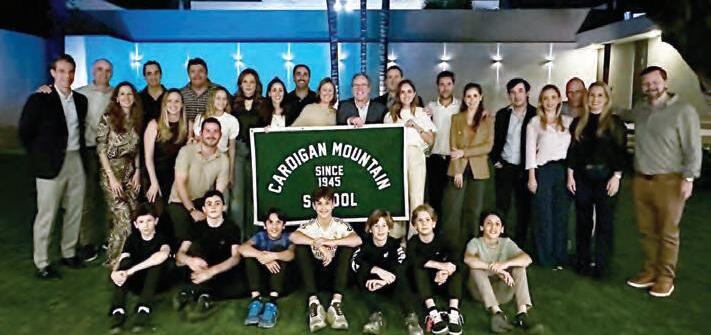
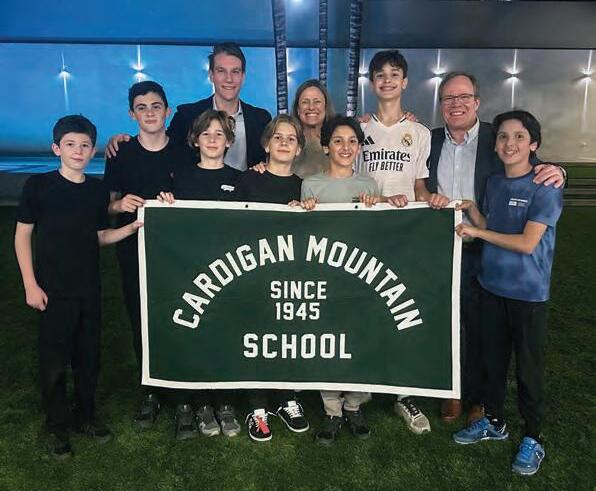
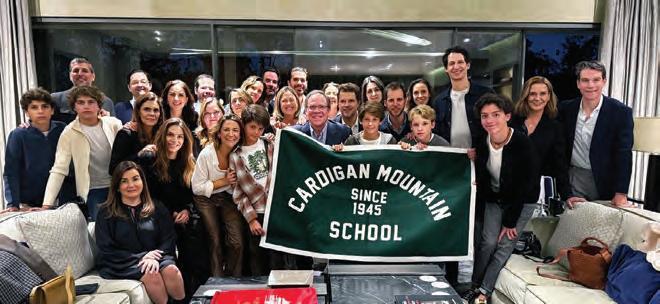
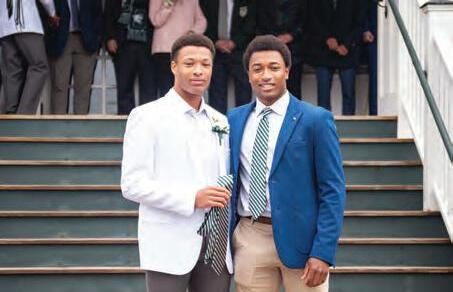


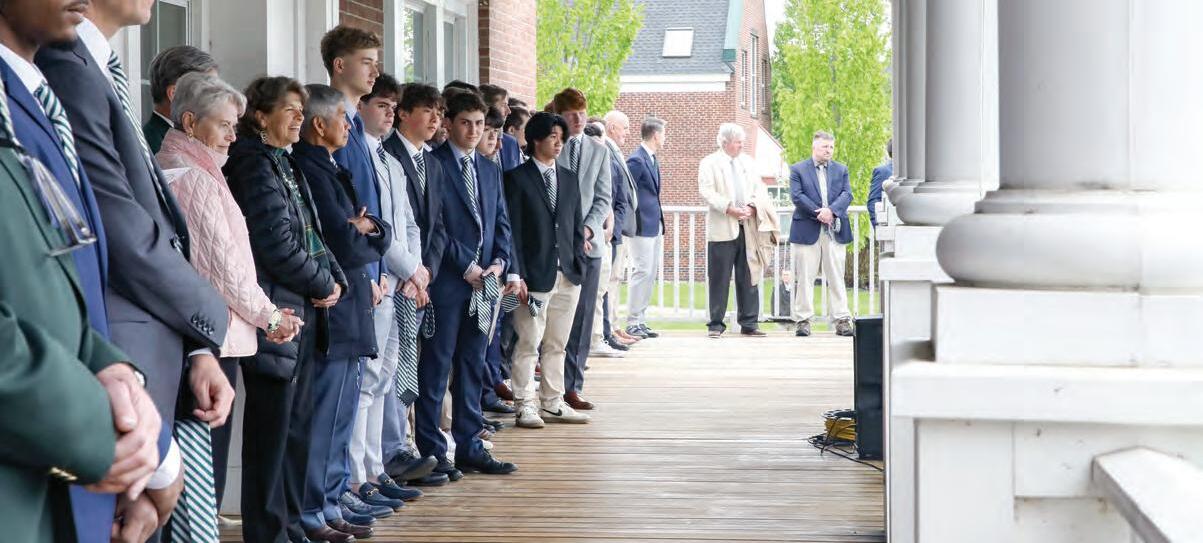
The Alumni Tie Ceremony during this year’s Commencement brought many familiar faces back to campus. The following alumni presented ties to their family members, ushering them into the Cardigan alumni brotherhood: Joe Burnett ’ welcomed his son Rio; Erik Nickulas ’ welcomed his son Landon; Casey Blatz ’ welcomed his brother Cam; Nathan Caples ’ welcomed his brother Riley; Conley Chen ’ welcomed his brother Branford; Max Gerbut ’ welcomed his brother Mykyta; John Park ’ welcomed his brother Sungjune; Daniel Ramonfaur ’ welcomed his brother Eugenio; Nate Watson ’ welcomed his brother Elliot; Tyler Wilmot ’ welcomed his cousin Gavin
Cardigan joined seven other independent schools in New York City and Boston for our annual networking gatherings in April.
. Boston
. New York City
The upcoming joint networking events will take place in Boston on March and New York City on April , . For more information on the Cardigan Career Network and upcoming networking events, please reach out to Director of Alumni and International Relations Pablo Rocha Vázquez at procha-vazquez@cardigan.org
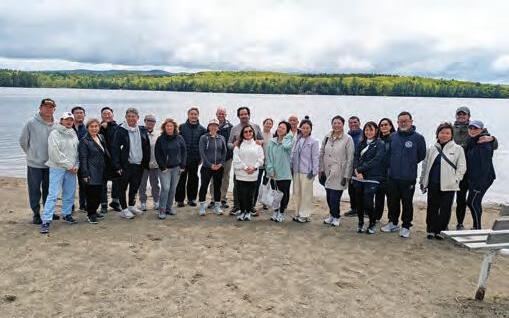
Parent Relations Manager Christine Frazier organized a series of walks around Canaan Street Lake this year for current families. No experience necessary!
. May
. January
. April
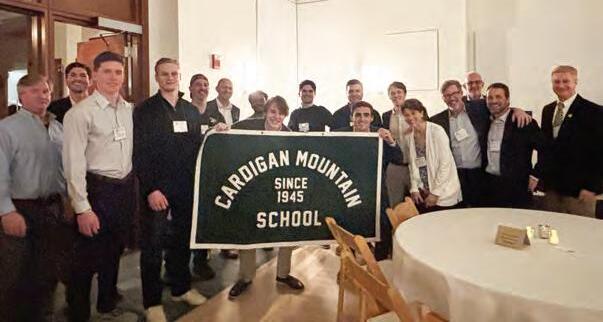

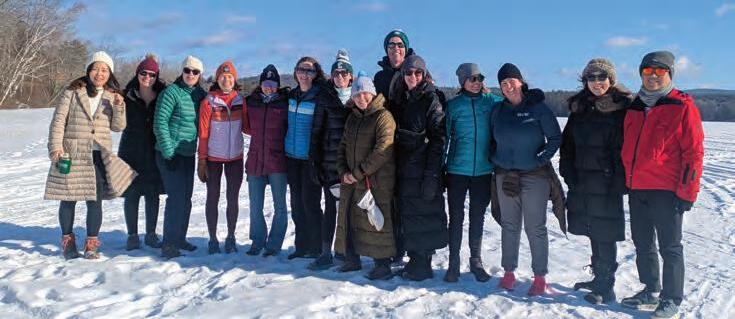
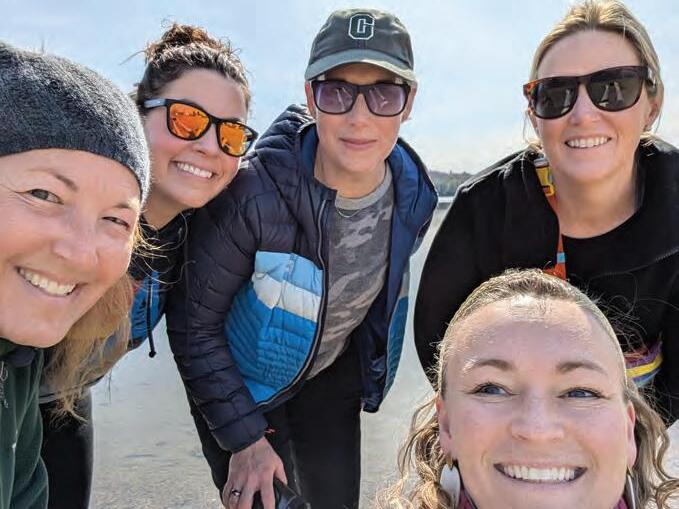

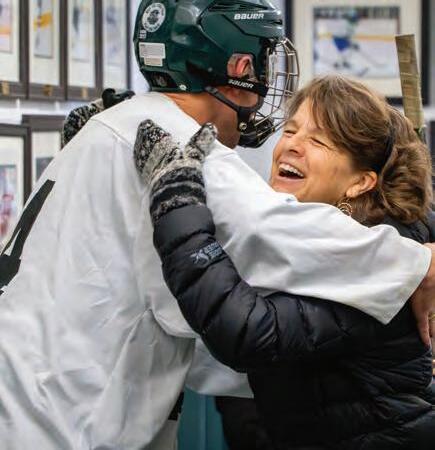



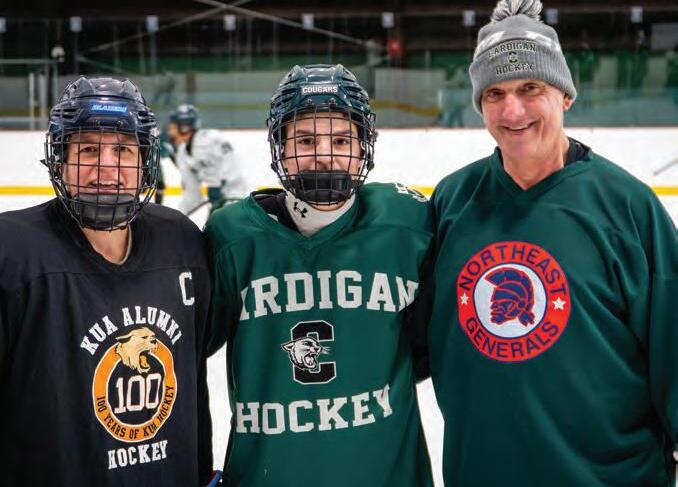
Alumni, current students, and friends of Cardigan hockey came together in February for the th Annual Alumni Hockey Game.
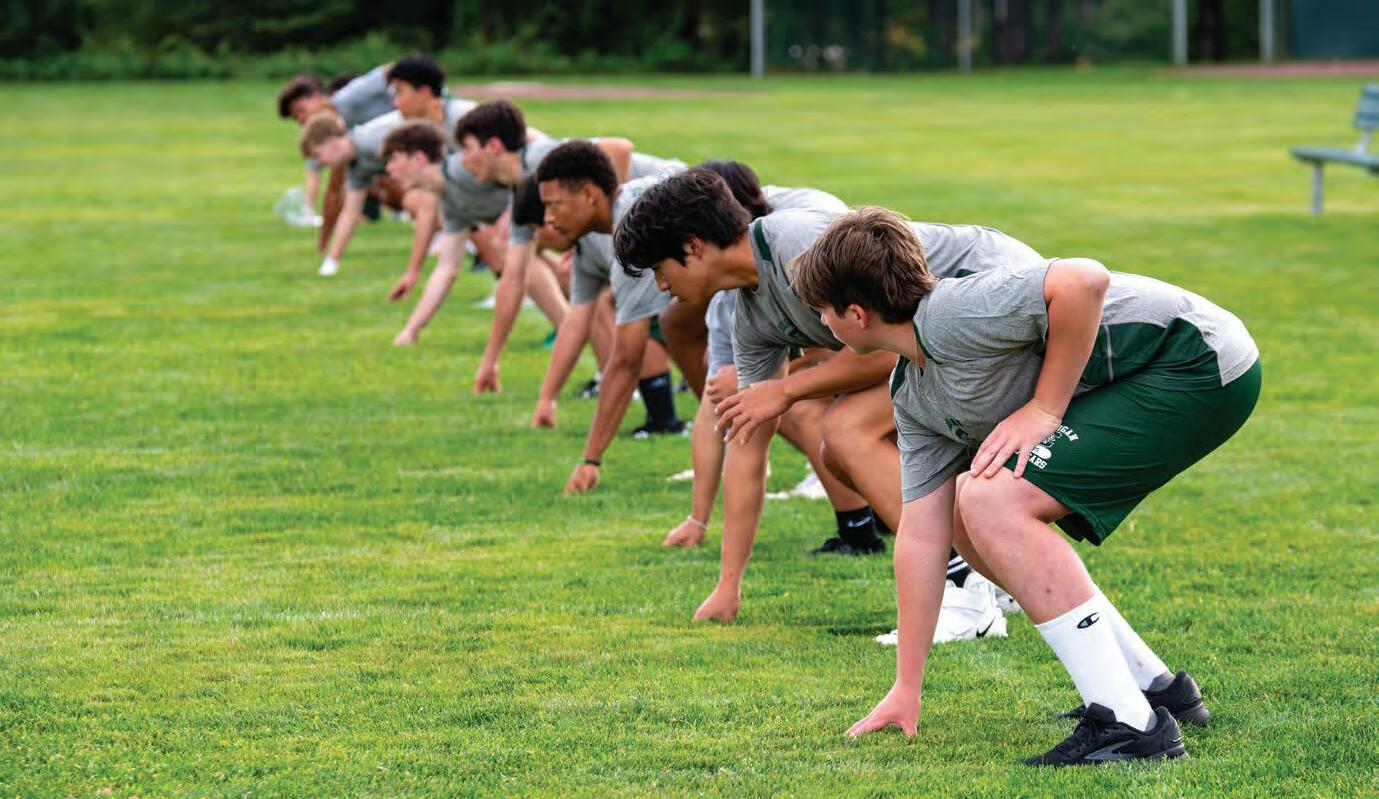
at cardigan, we know that growth isn’t immediate—it takes time and only happens through moments of steady, intentional determination. That’s why this year’s theme is Practice is Purpose.
Whether they are learning to tie a tie, mastering lines for the play, or lacing up for an early-morning skate, Cardigan boys learn that how they do something matters just as much as what they’re doing. We believe in the power of consistent practice—not for perfection, but for presence, progress, and purpose.
your annual fund gift helps us:
r Open our doors. Your generosity increases our ability to provide financial aid to deserving families, helping boys from all backgrounds practice becoming the best versions of themselves.
r Invest in our teachers. The Annual Fund supports our faculty as they pursue professional development, ensuring our educators learn, grow, and bring experience and renewed purpose to the classroom.
r Focus on what’s important. The Annual Fund covers the day-to-day operating costs of Cardigan, allowing us to focus on that which is most important—the education of middle school boys.

make your gift to cardigan’s annual fund today by visiting www.cardigan.org/mygift
questions? contact jeremiah shipman ’00 at 603.523.3601 or jshipman@cardigan.org




